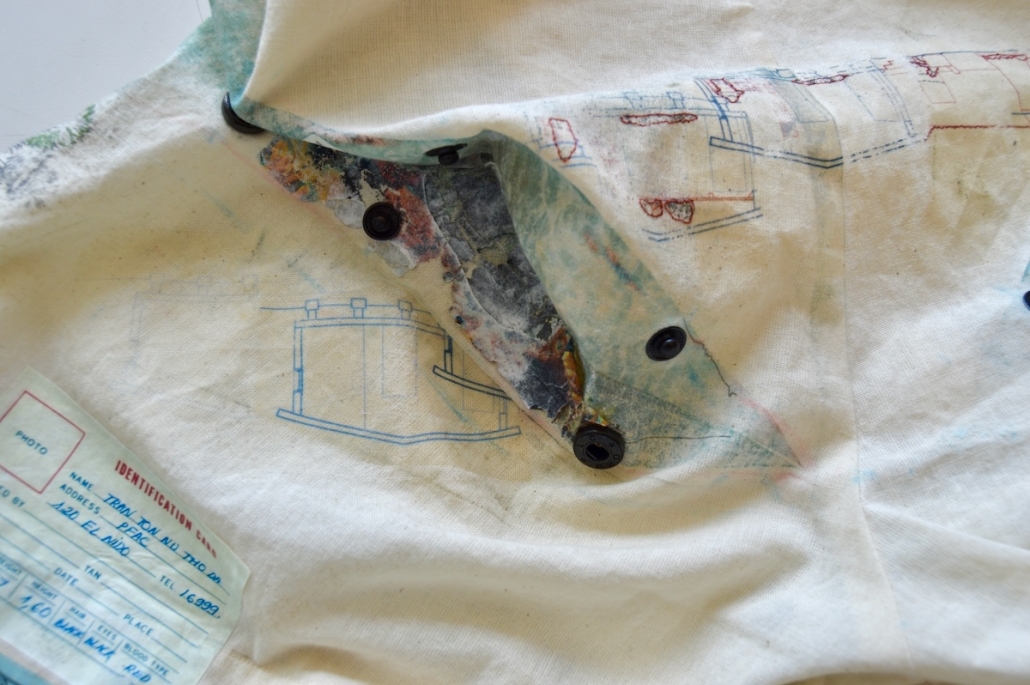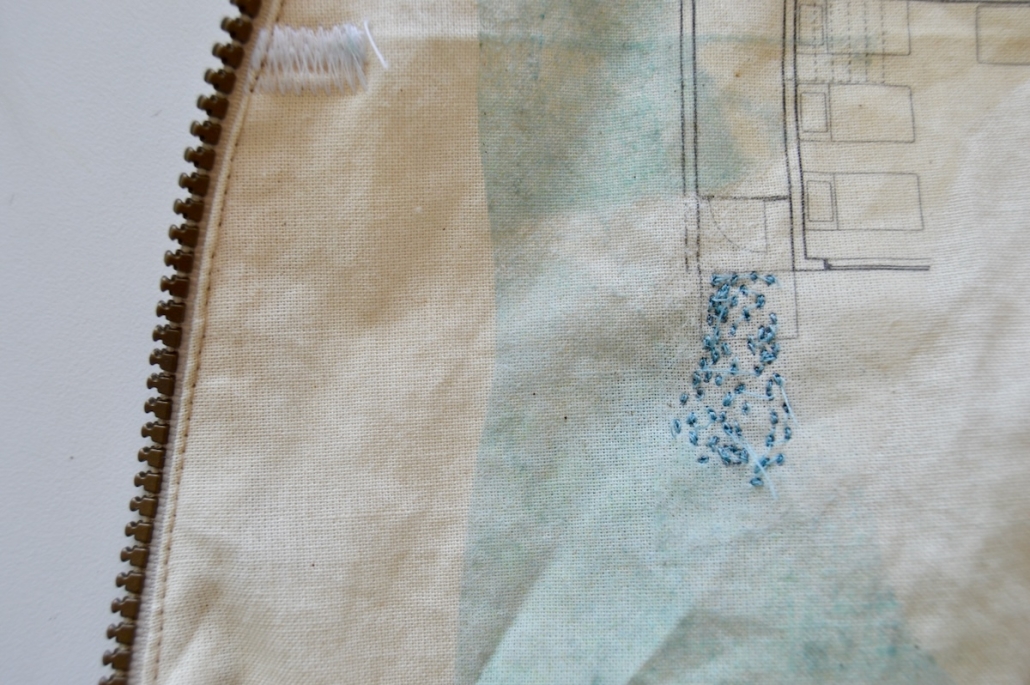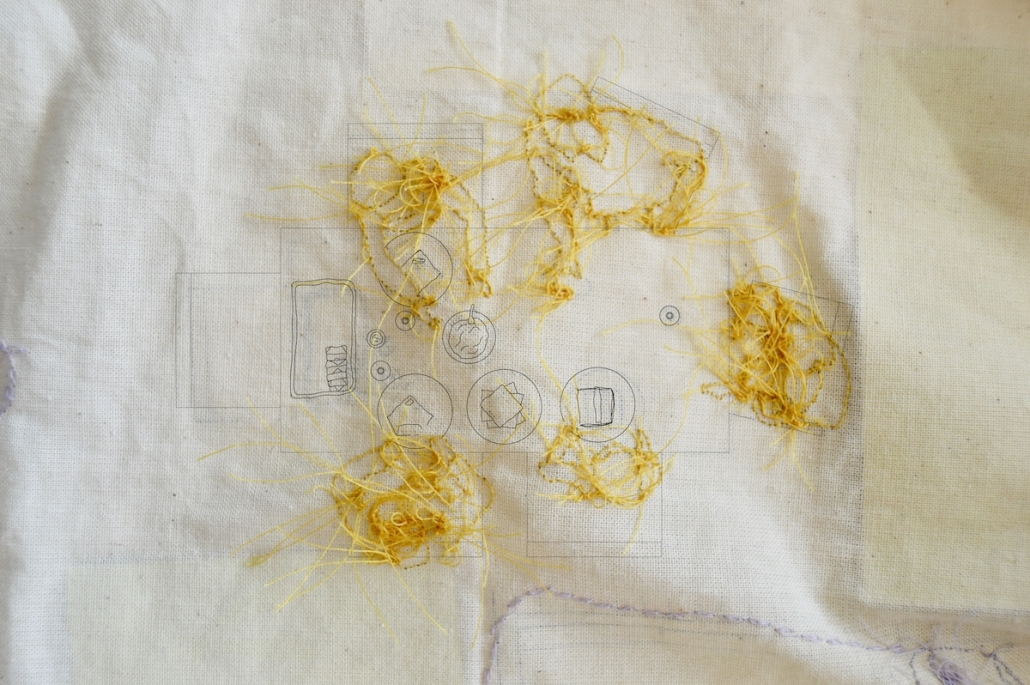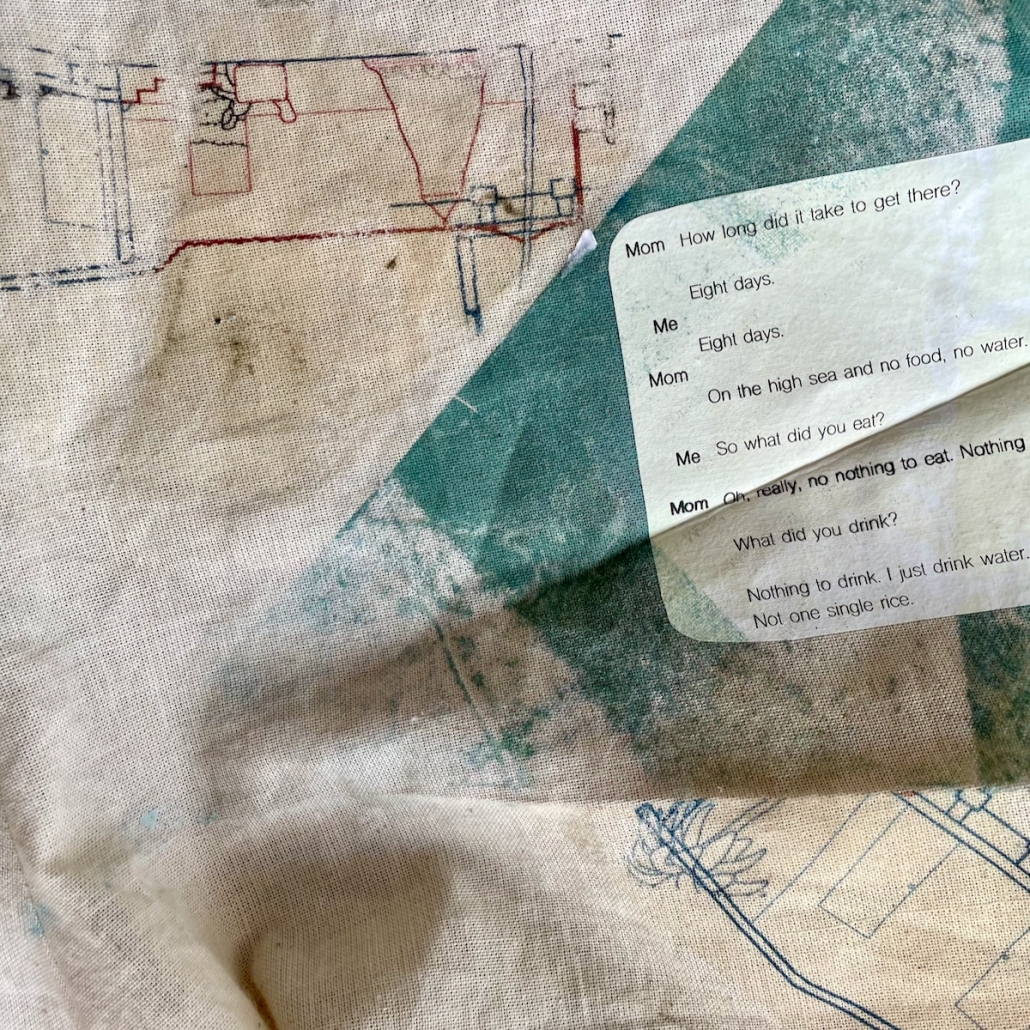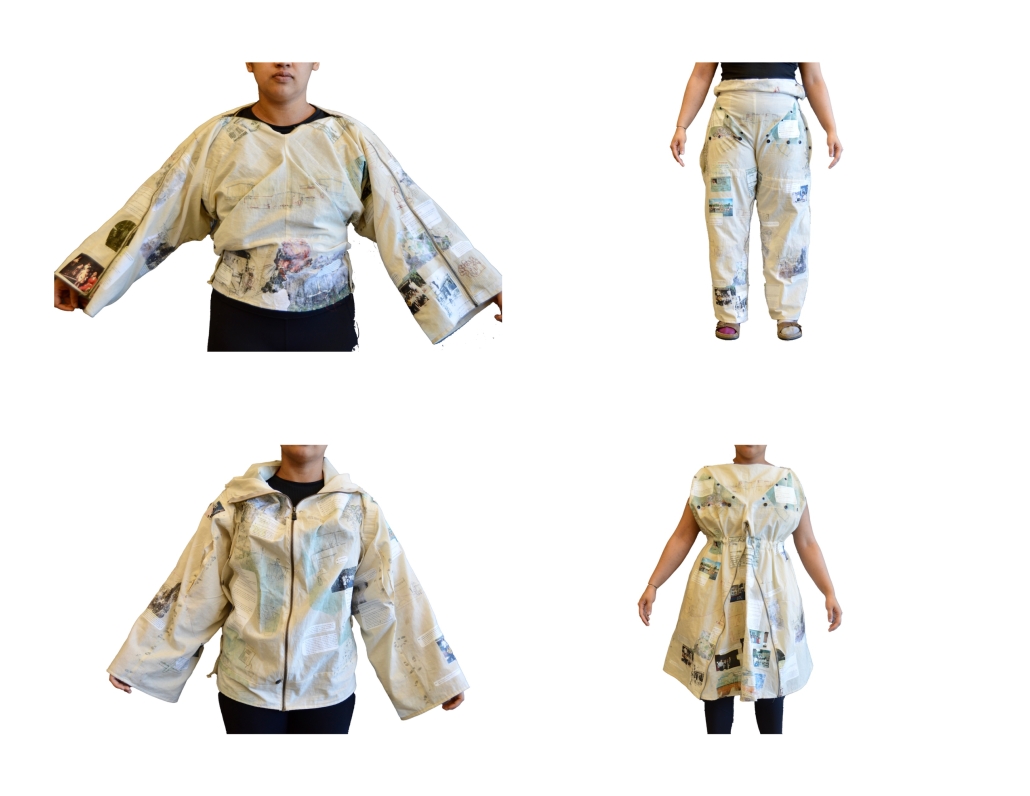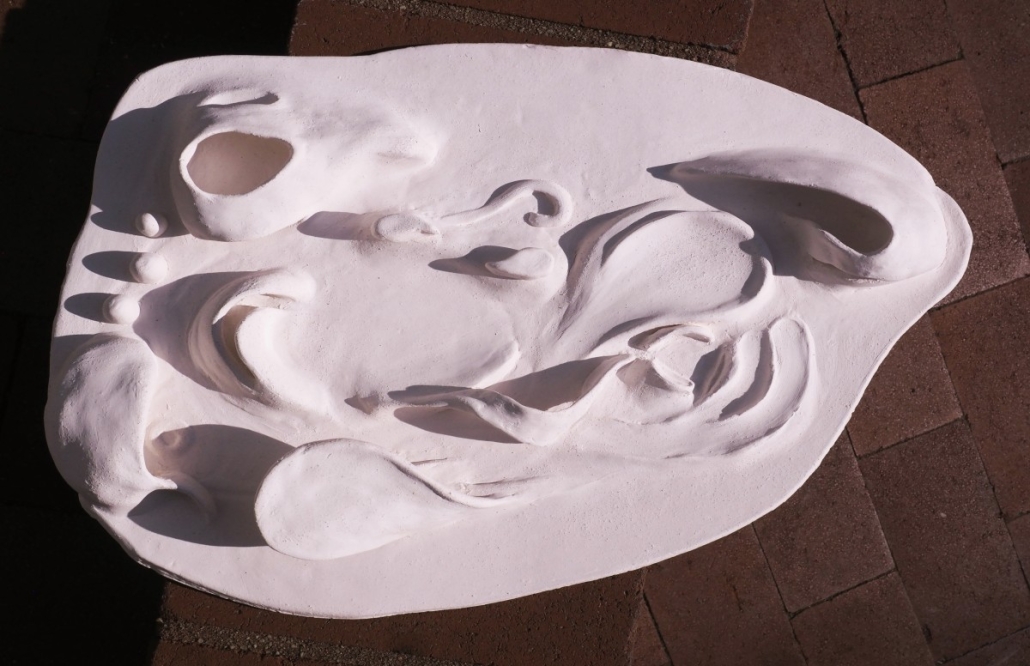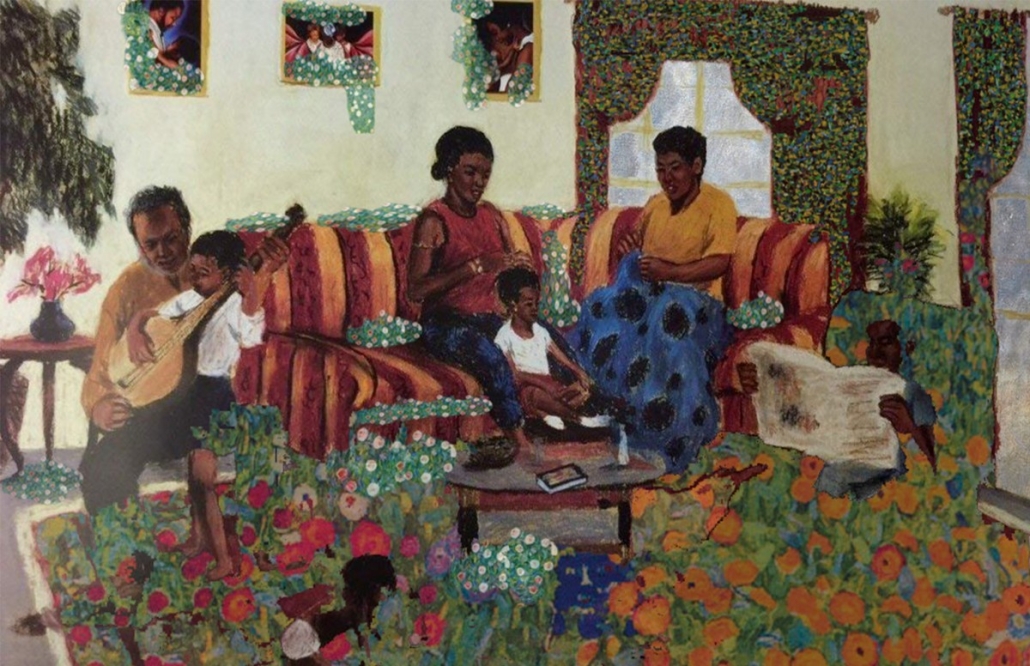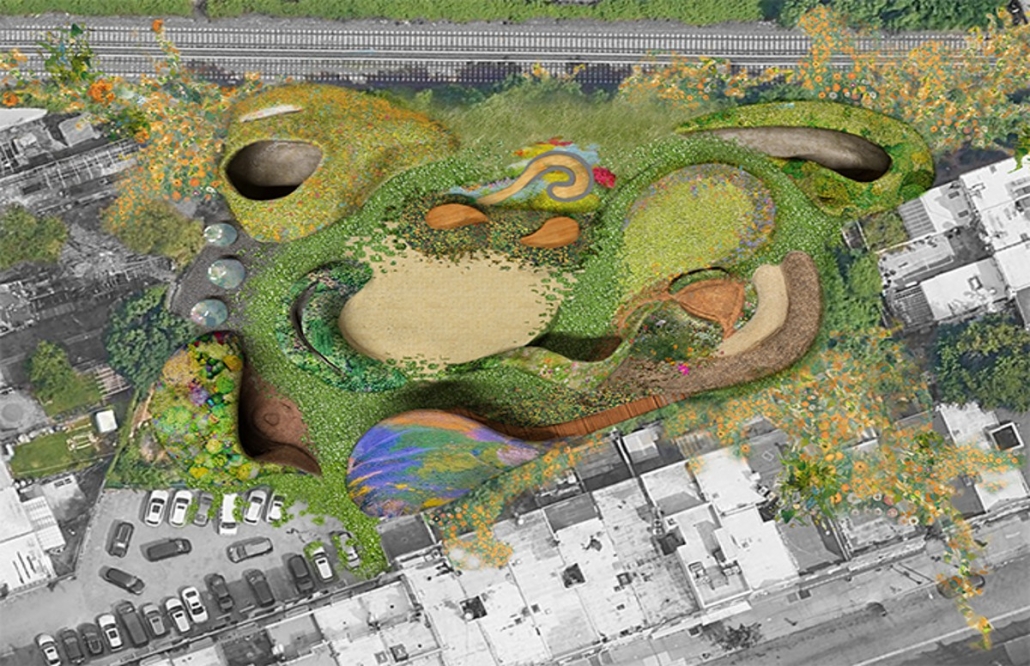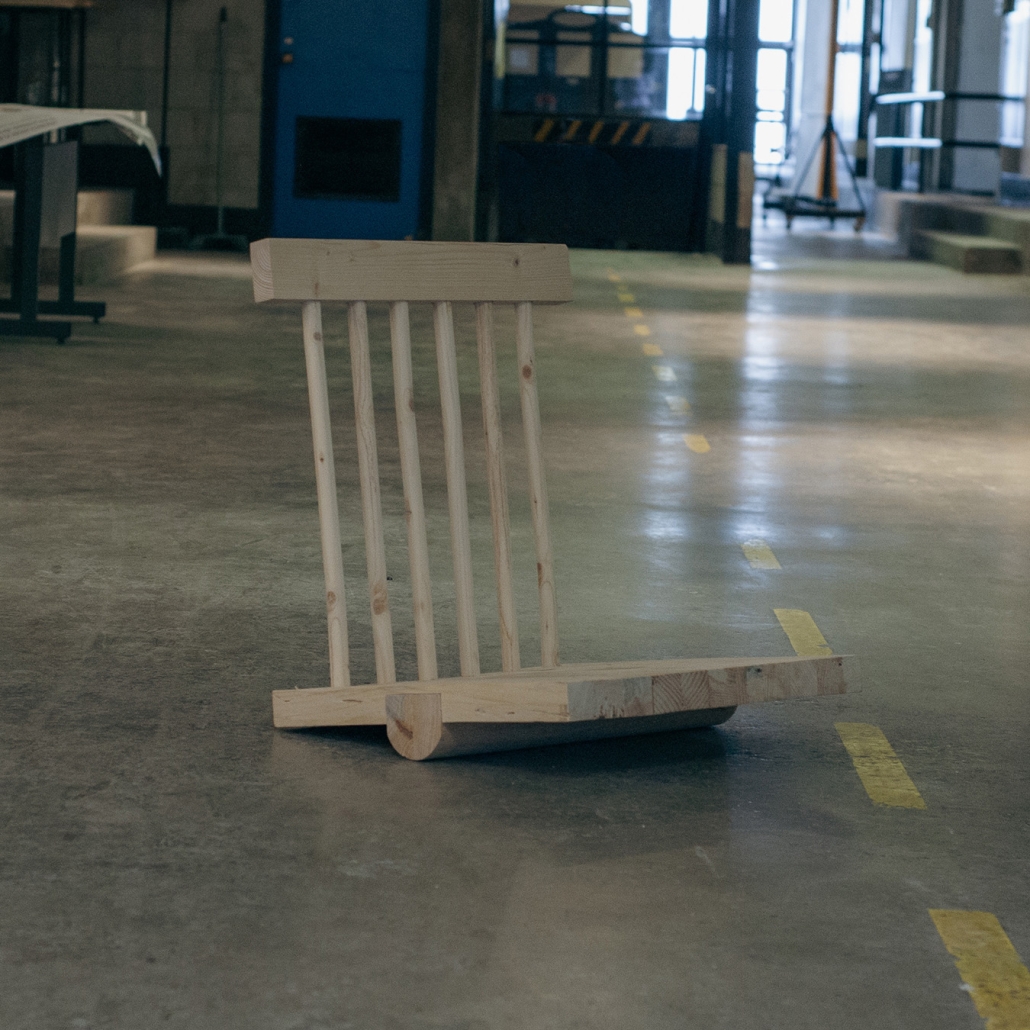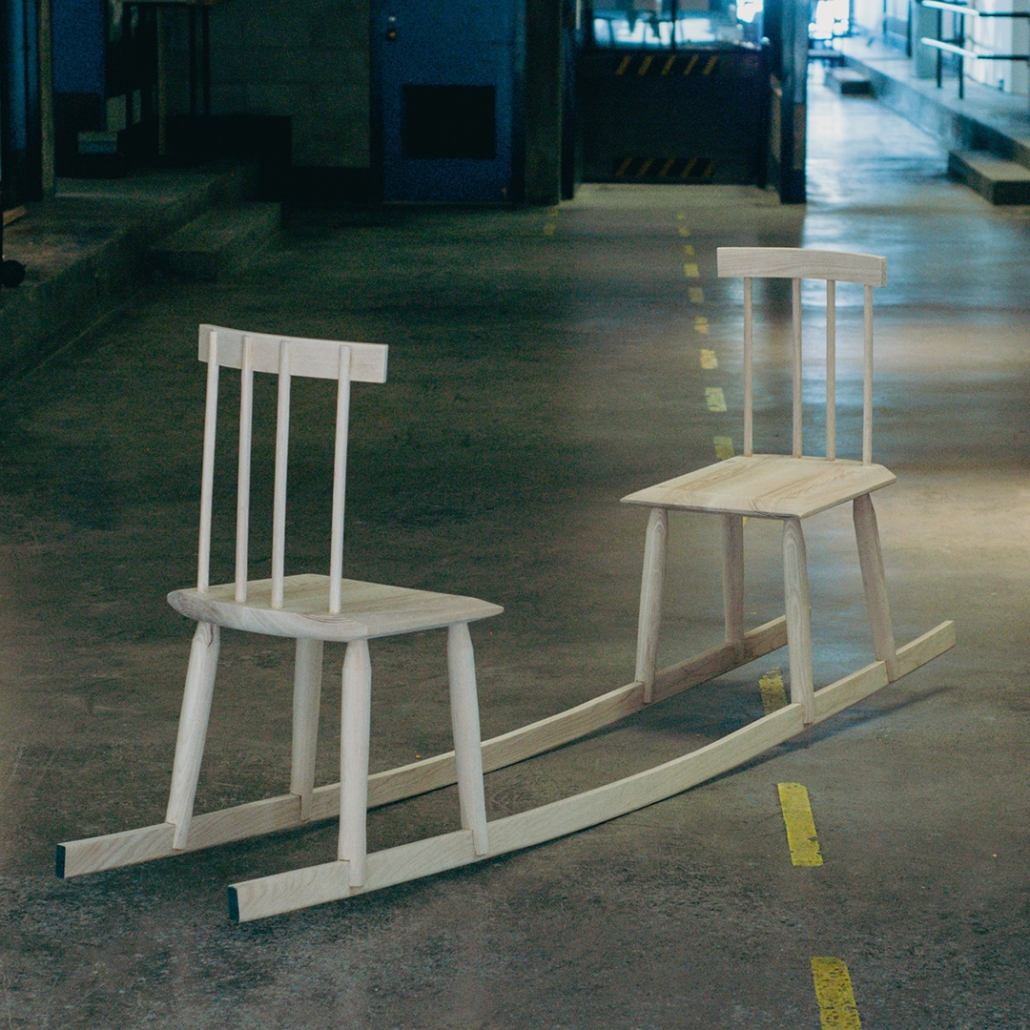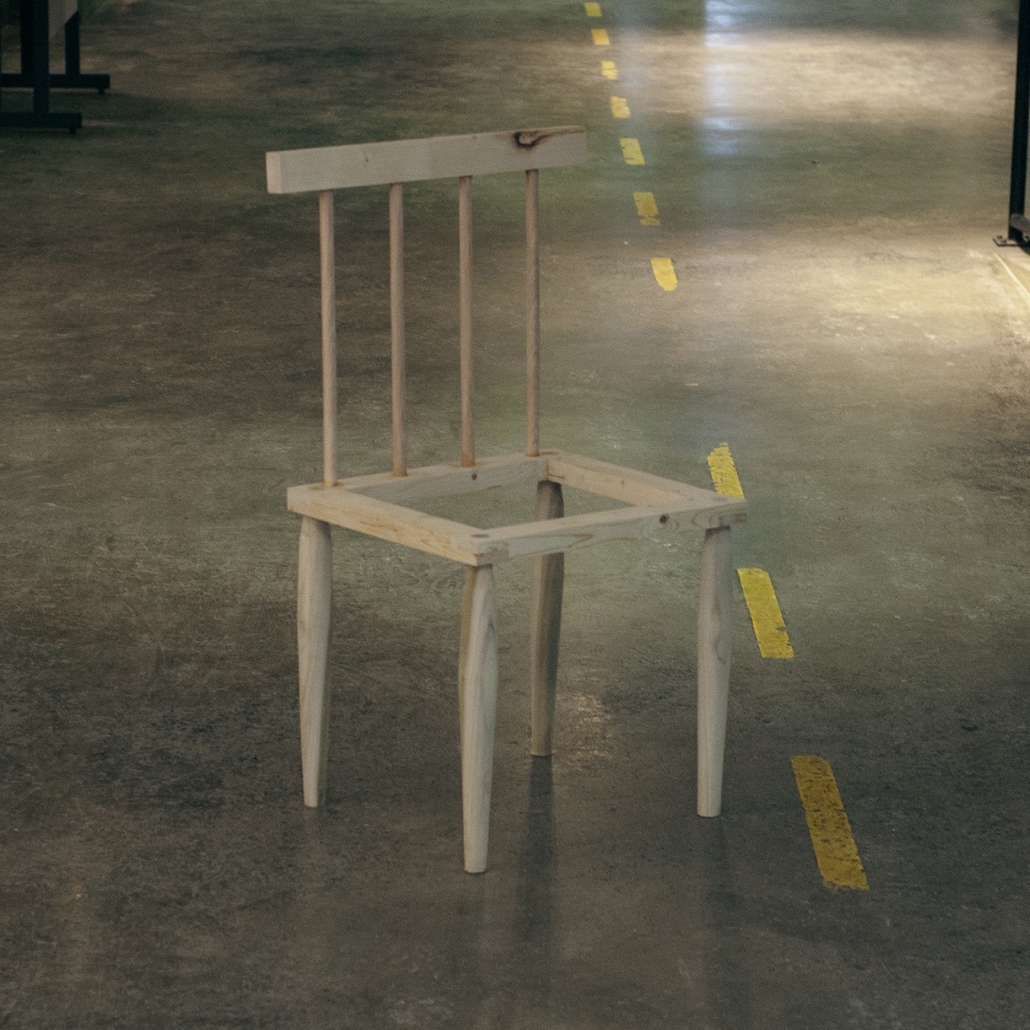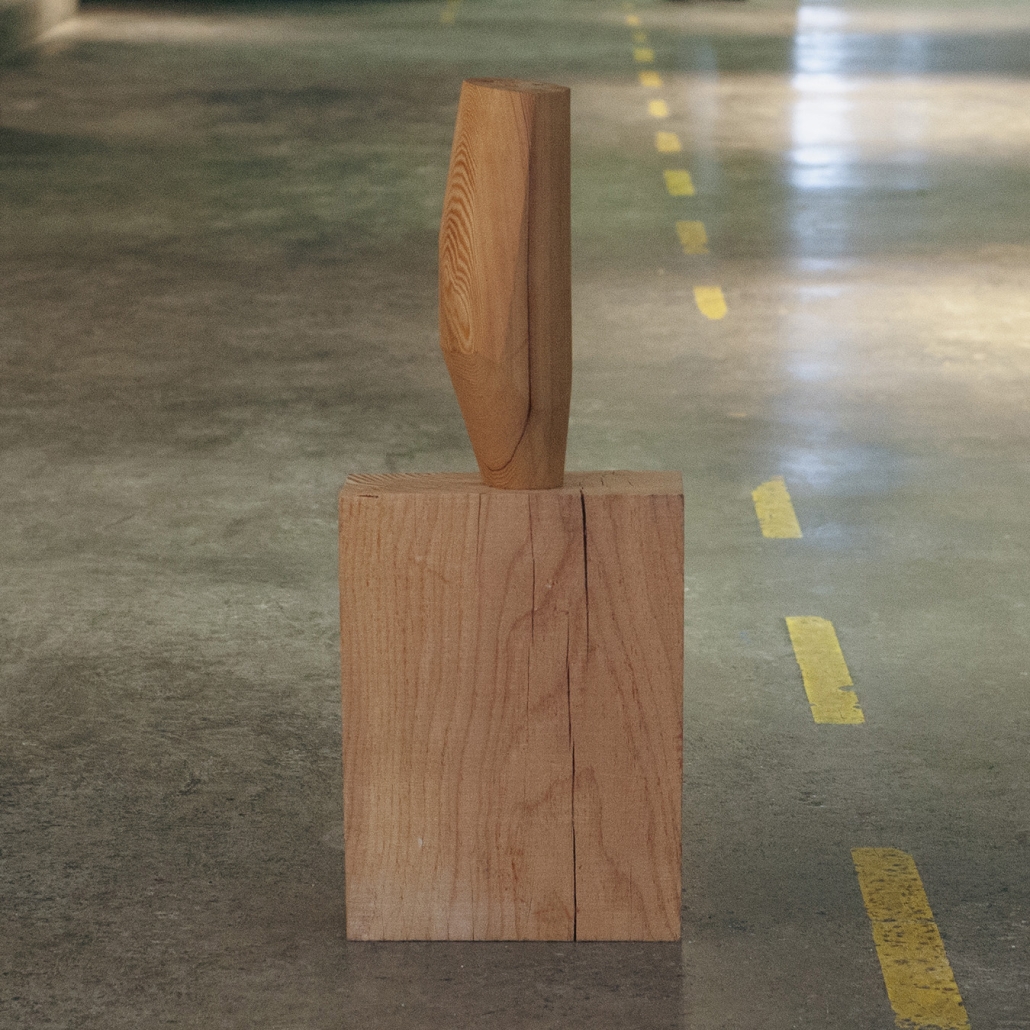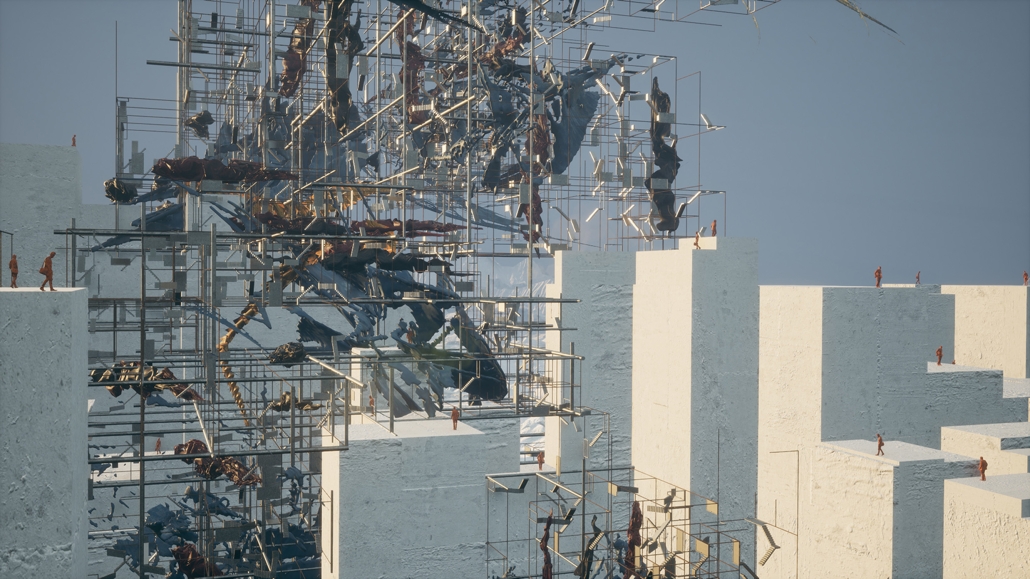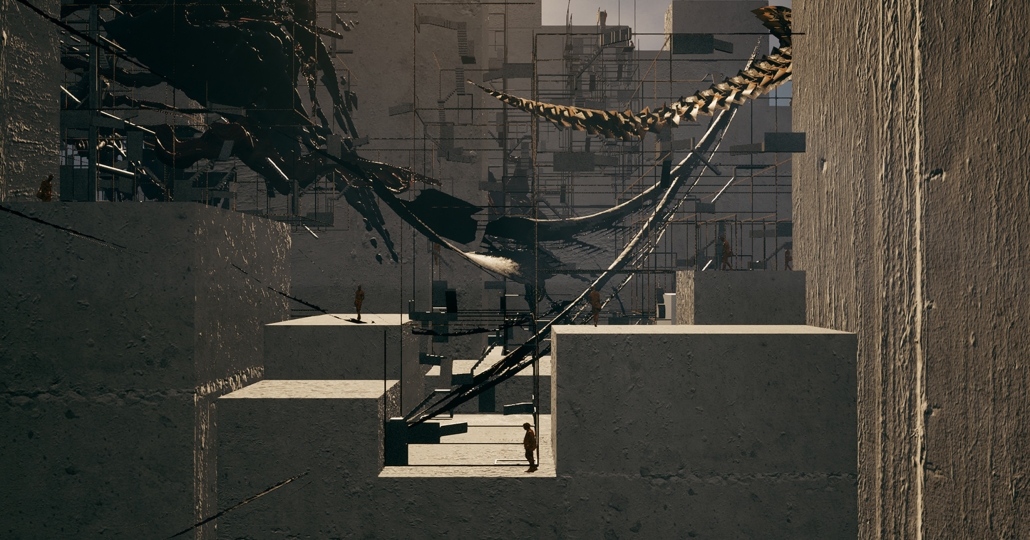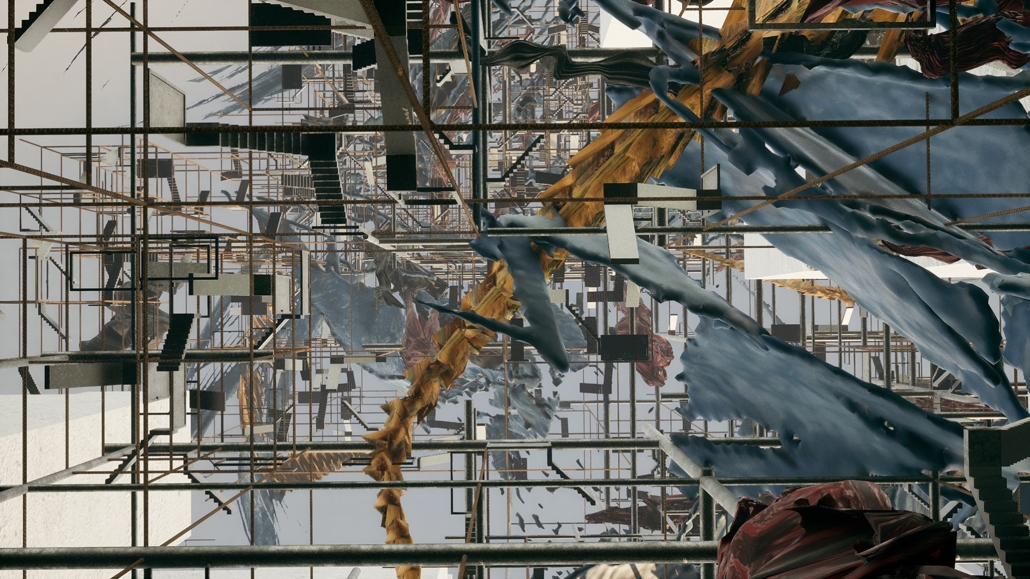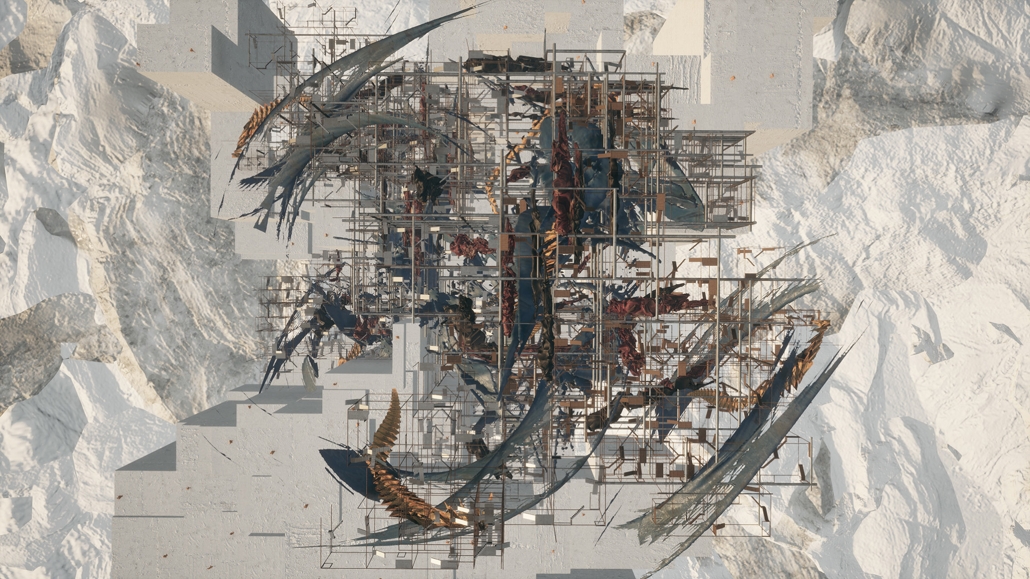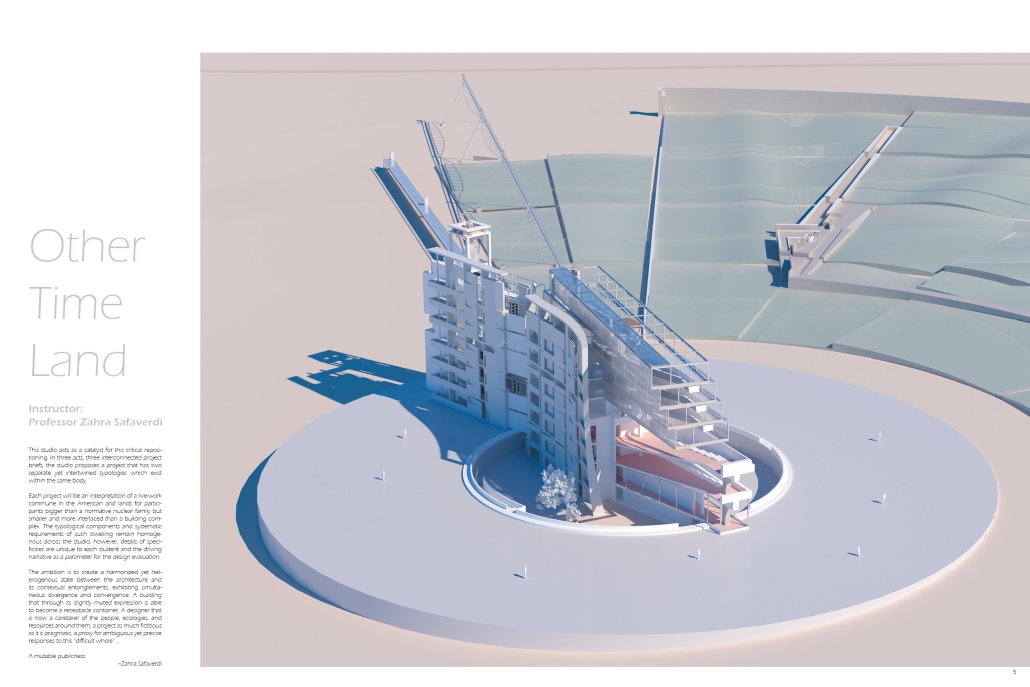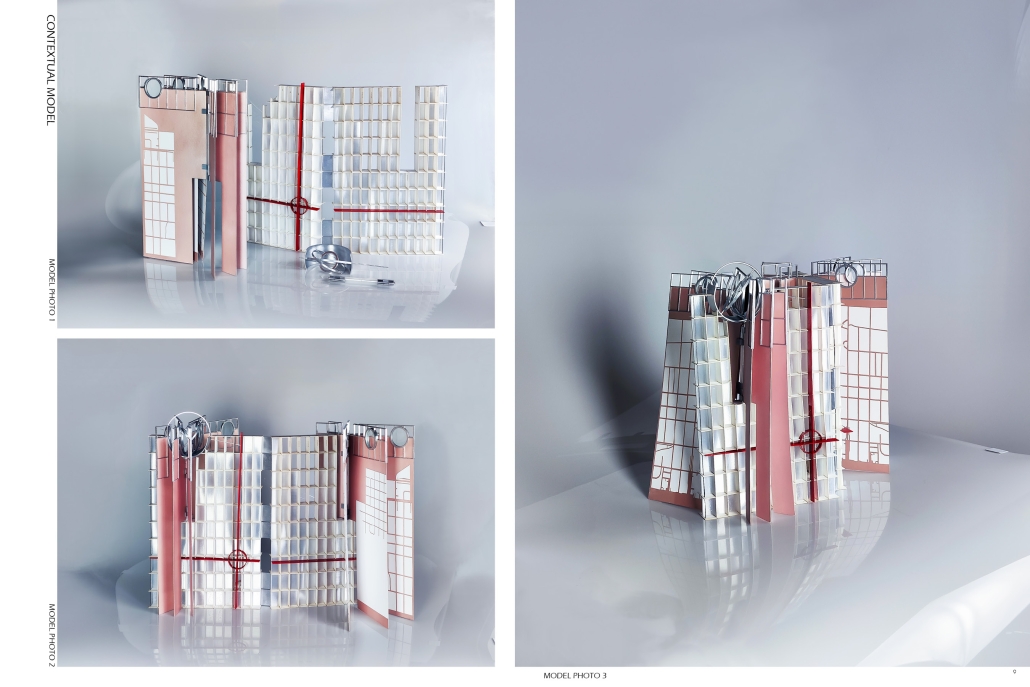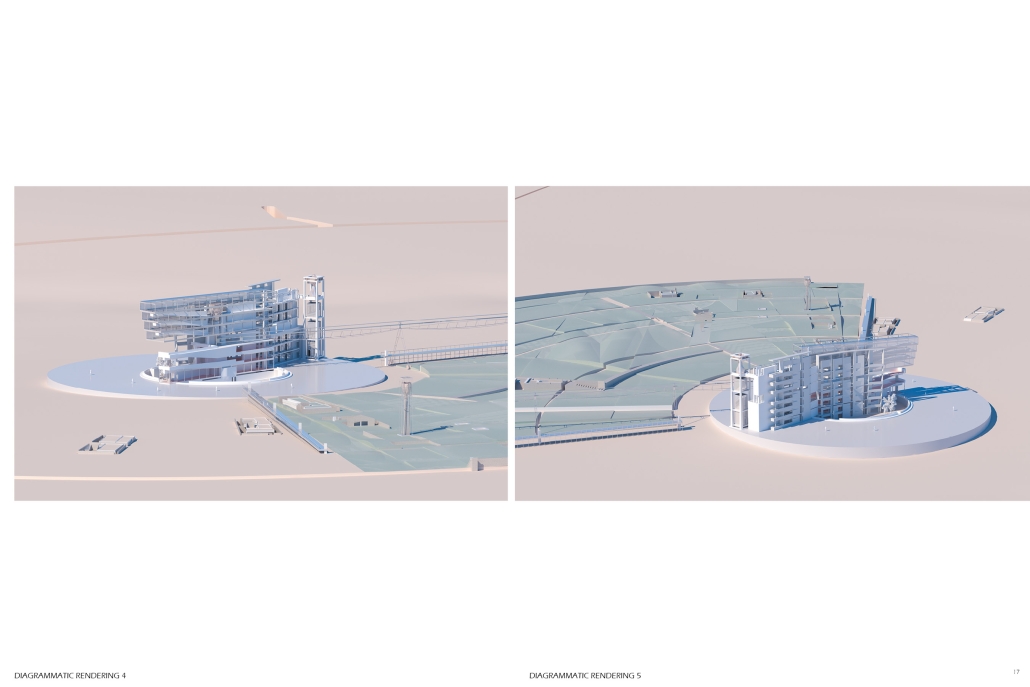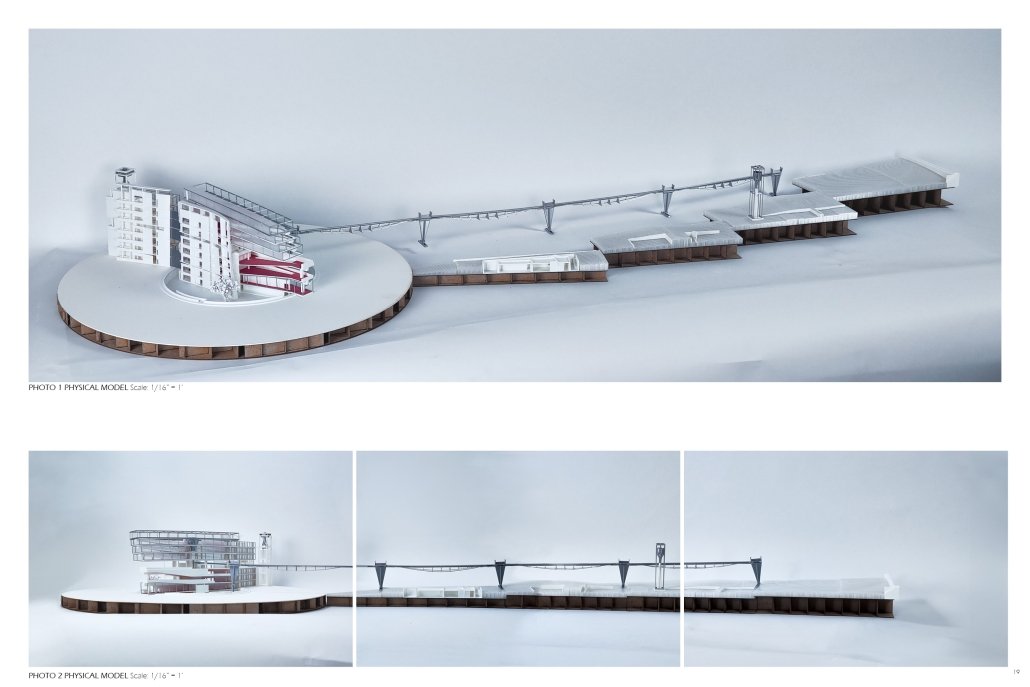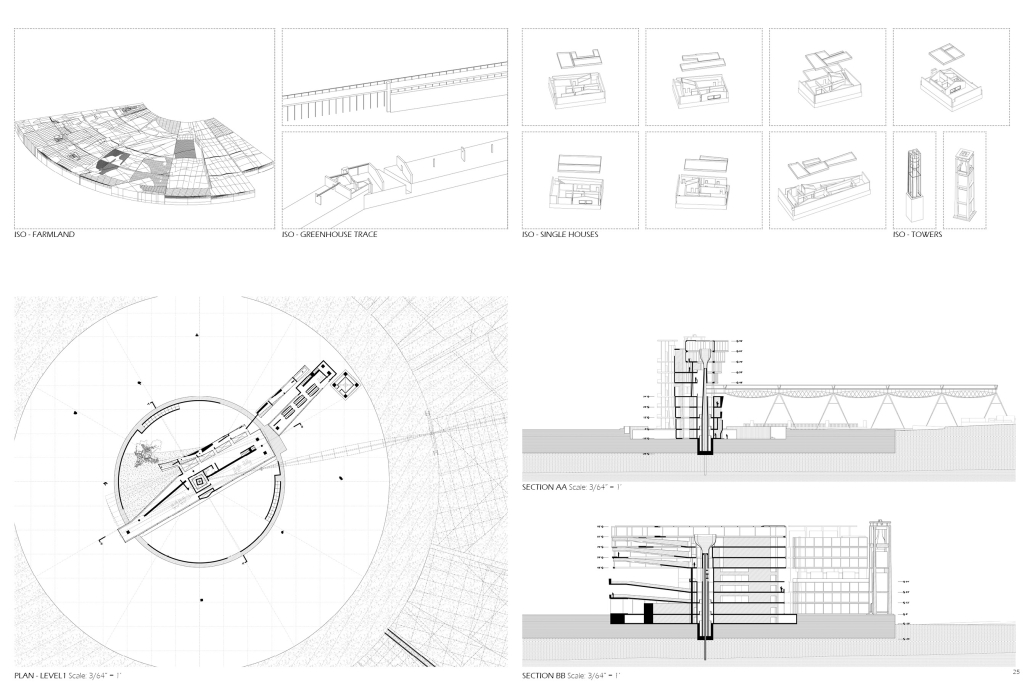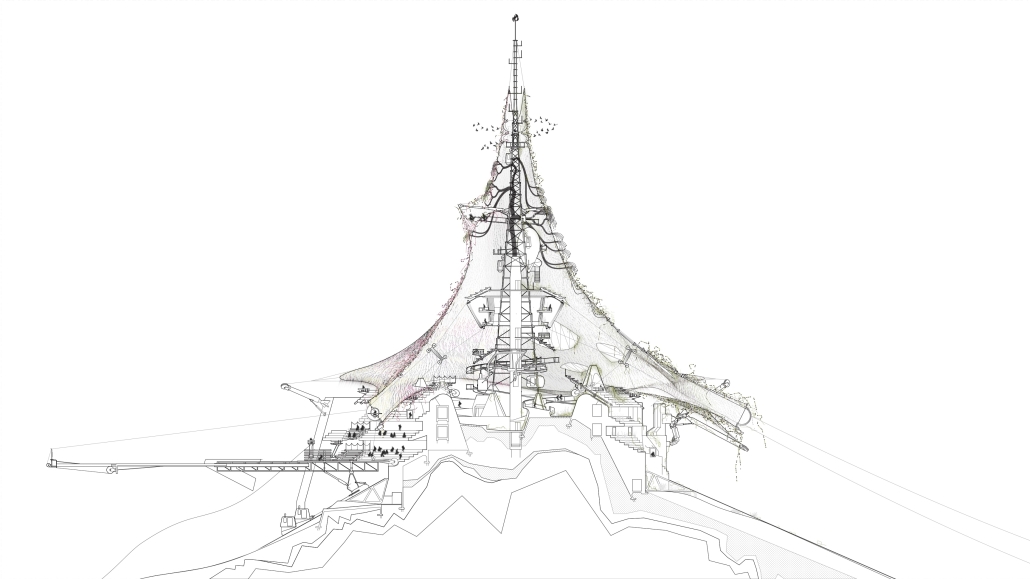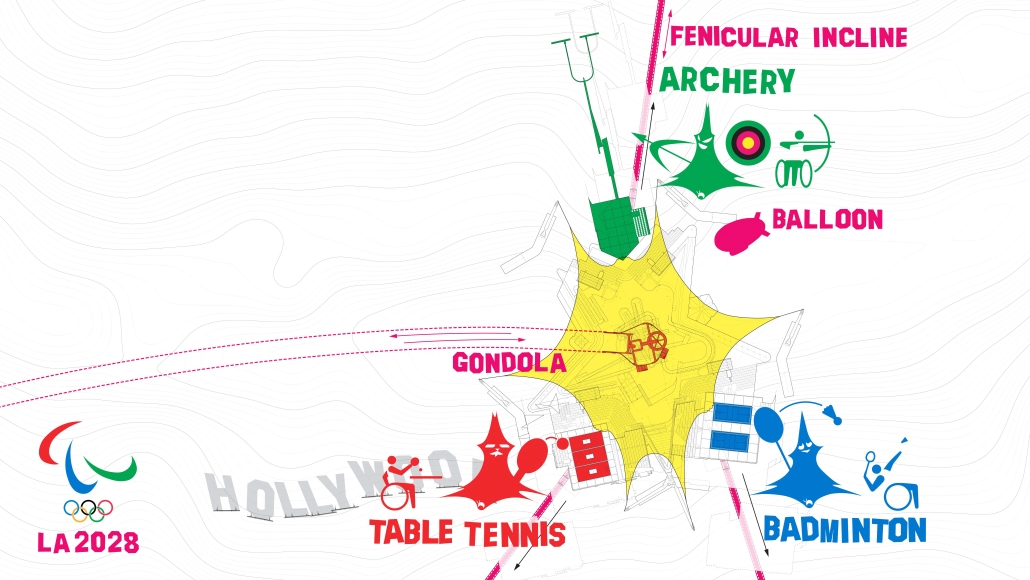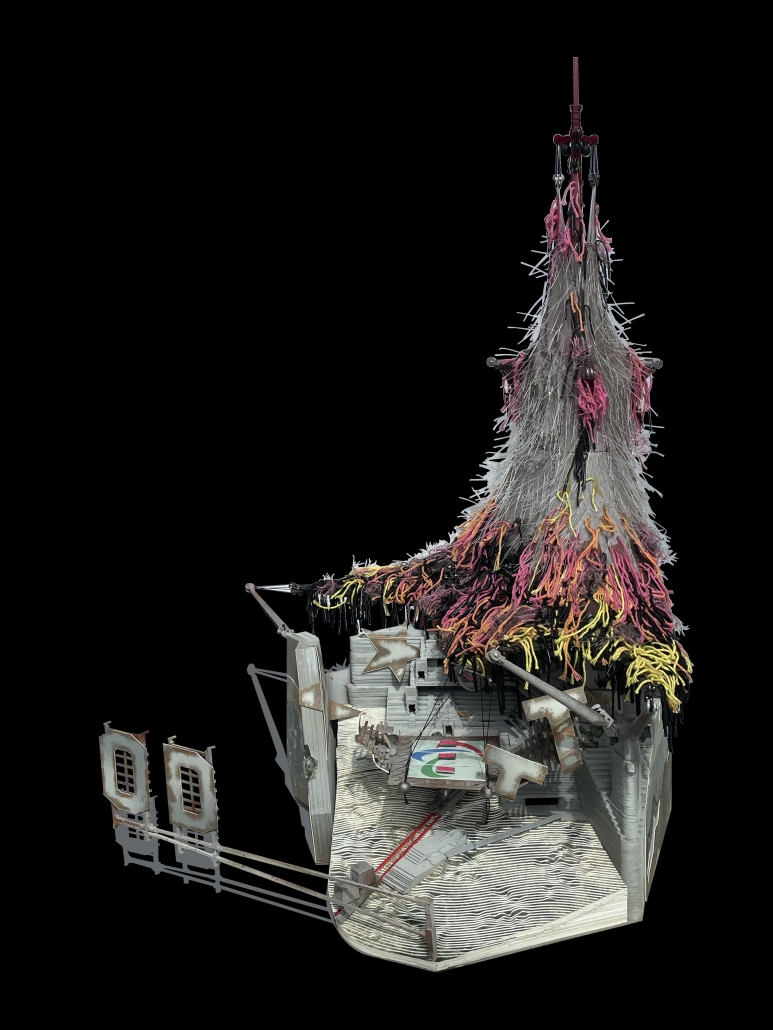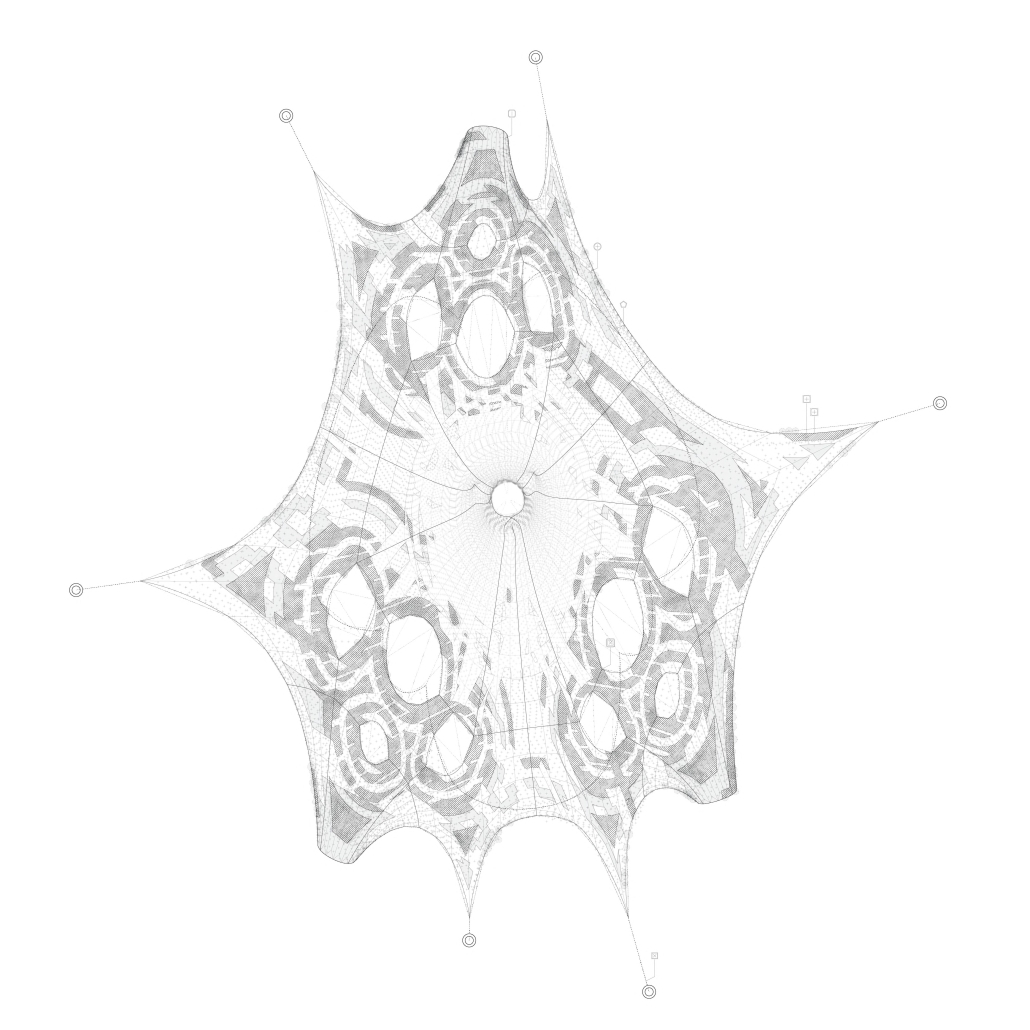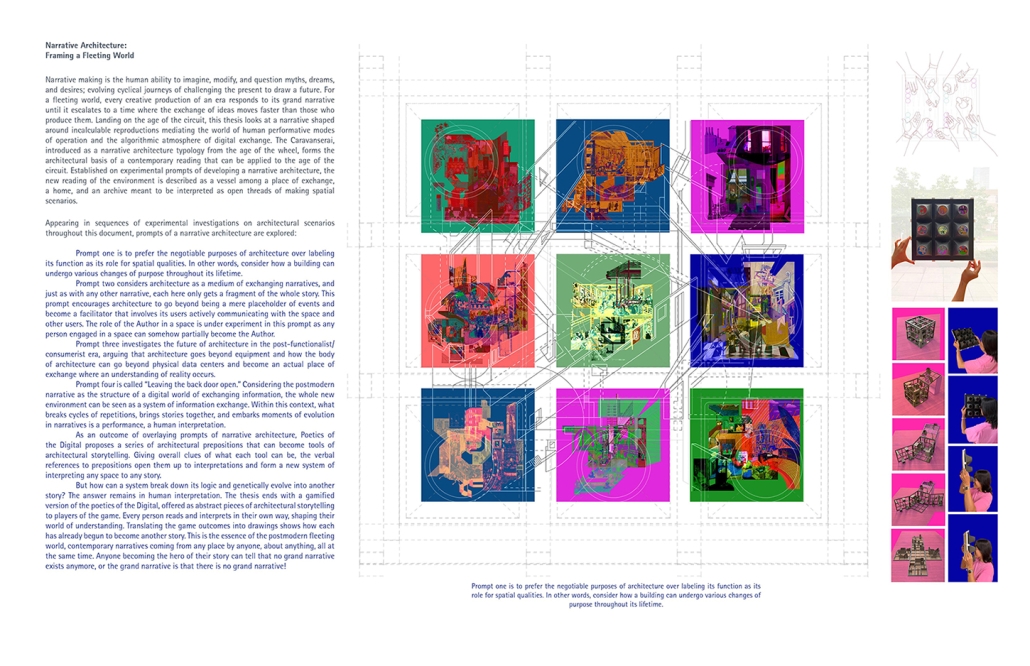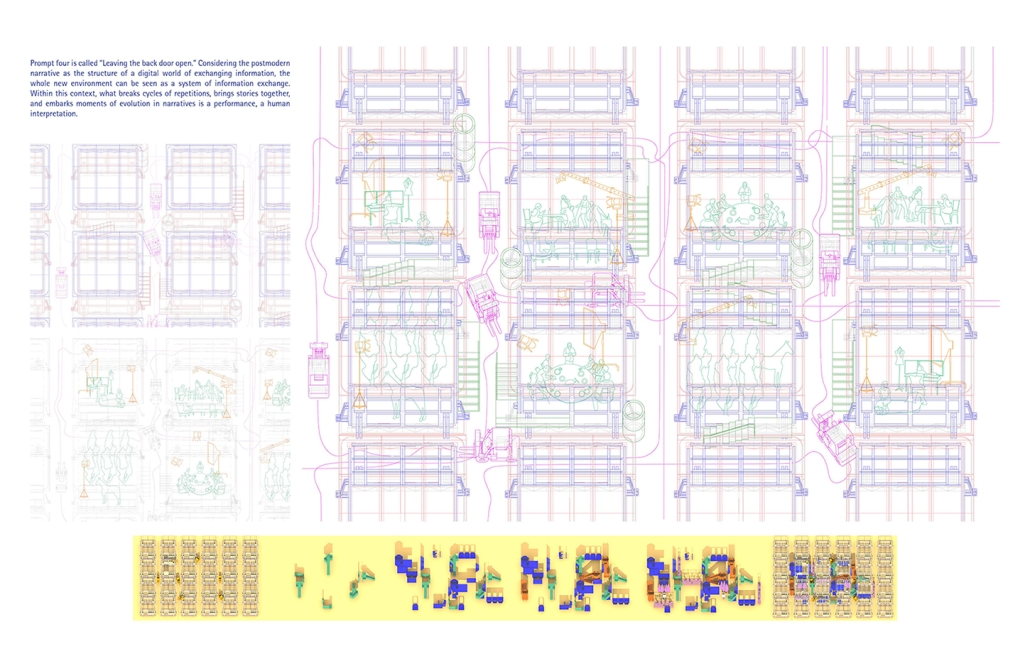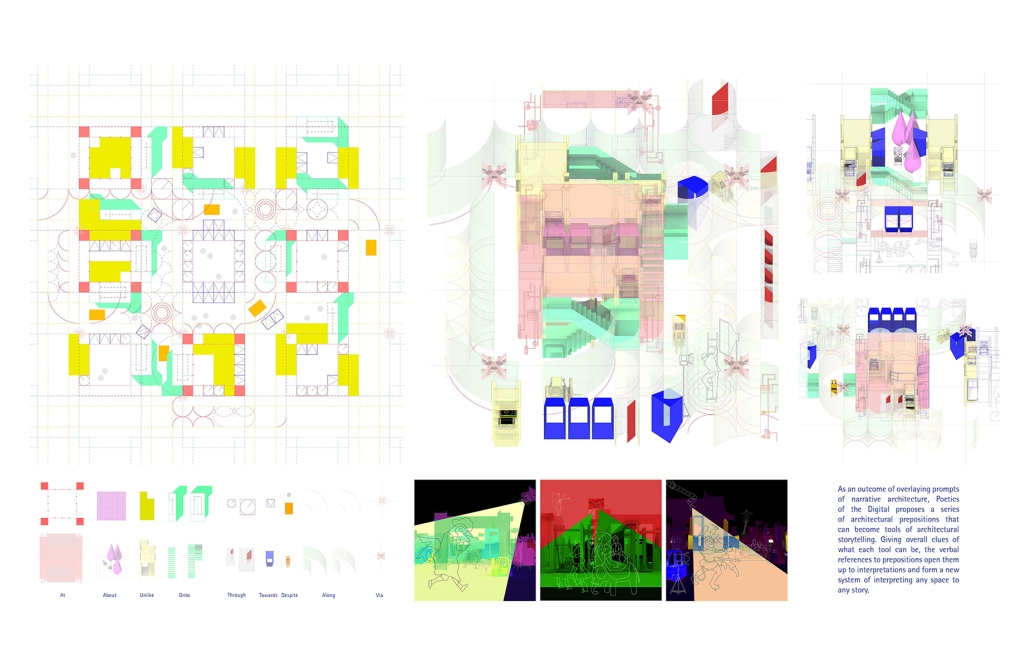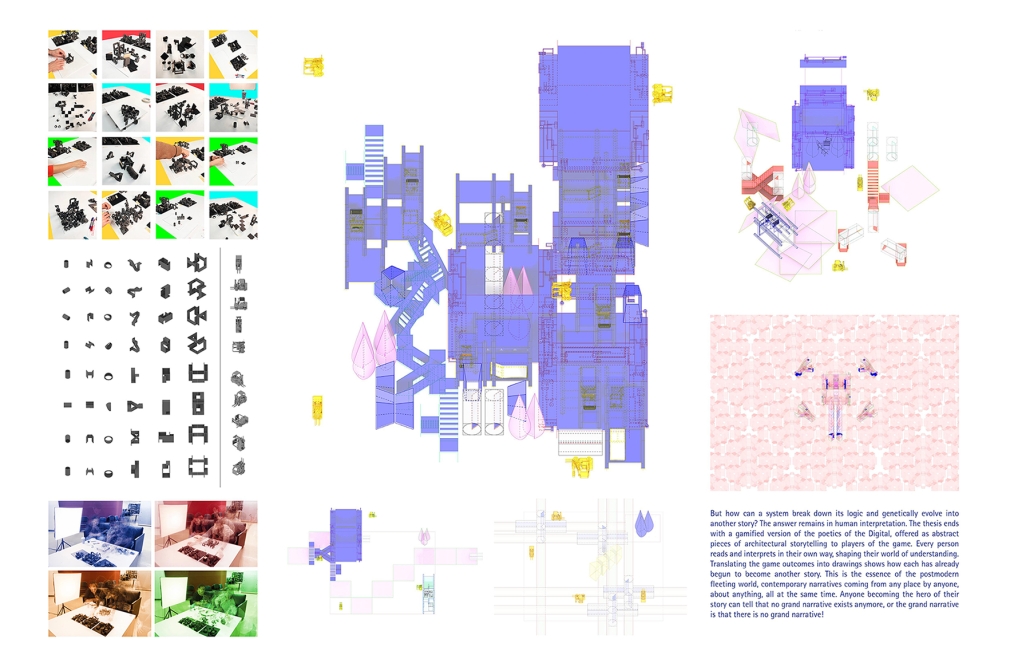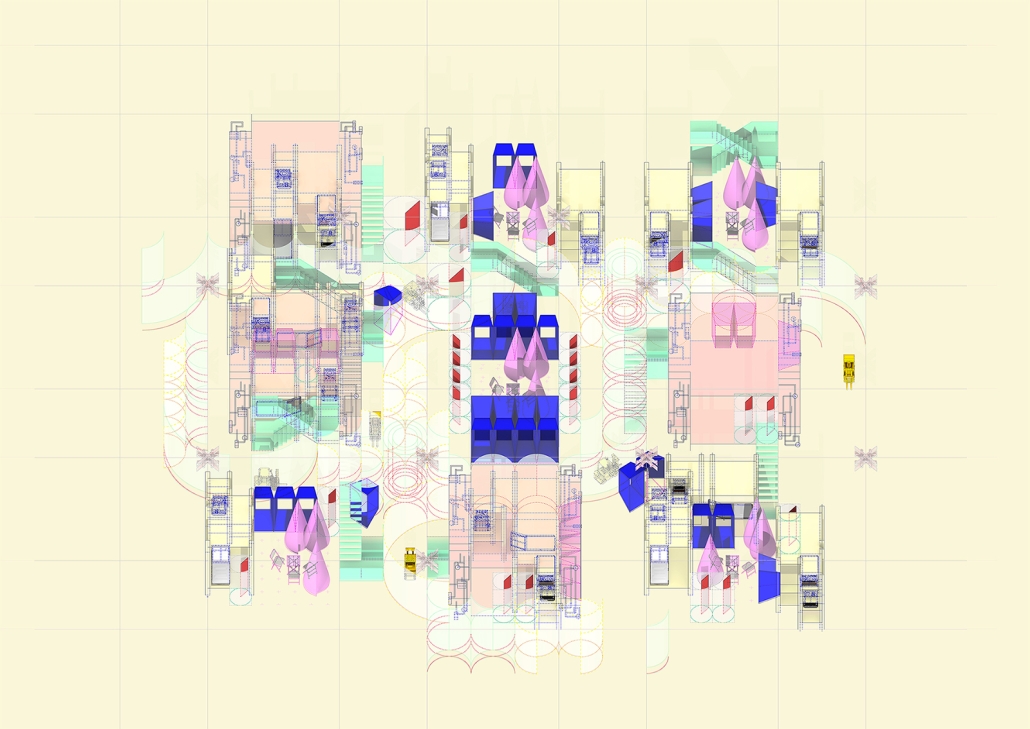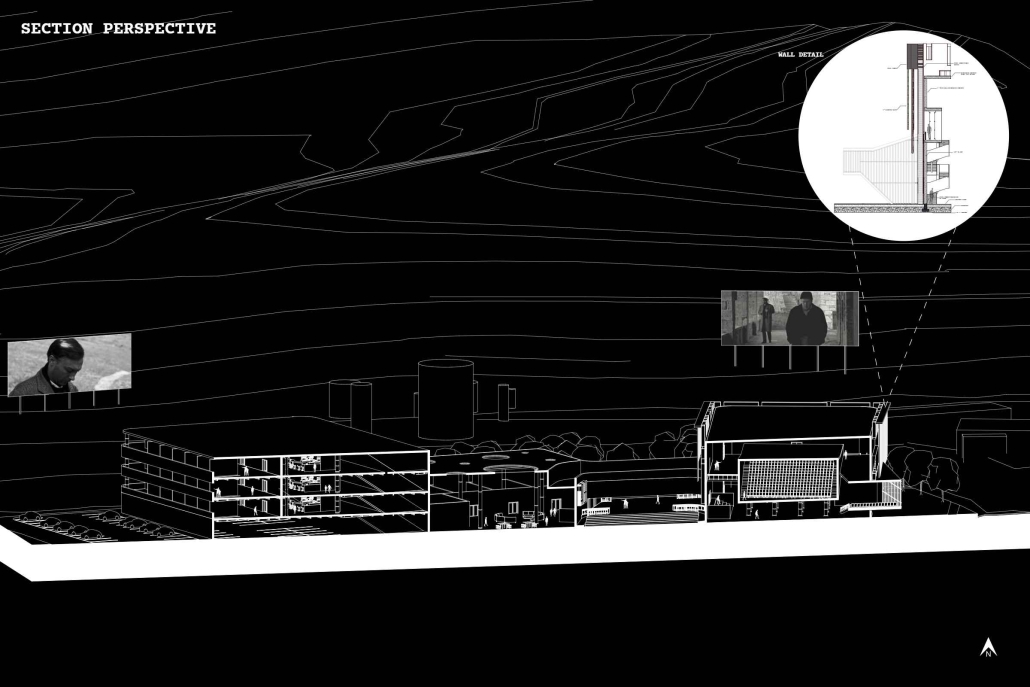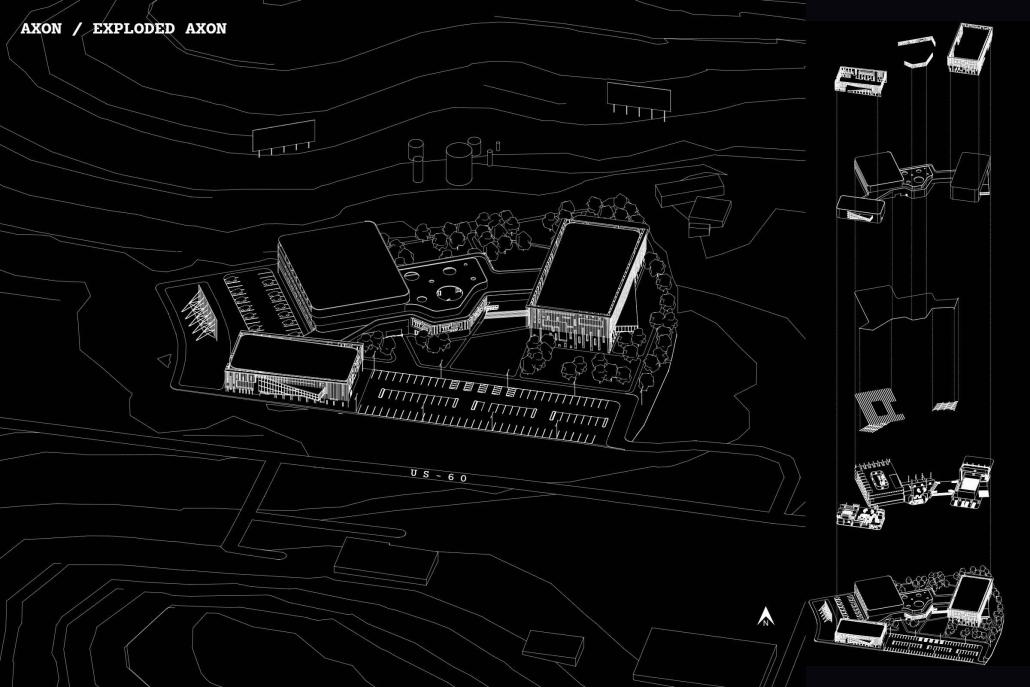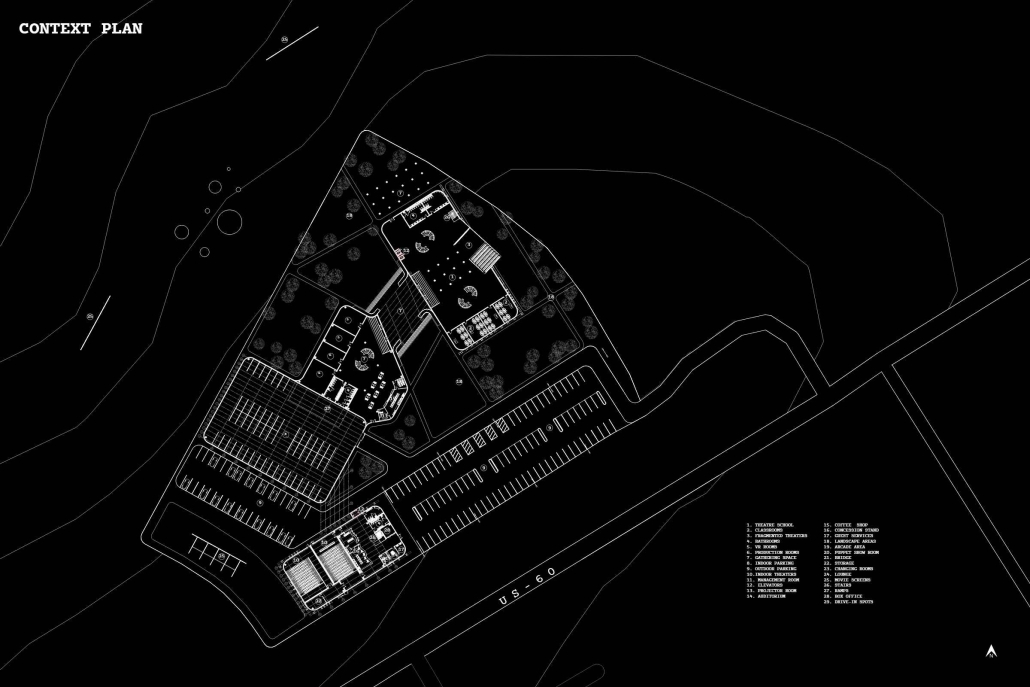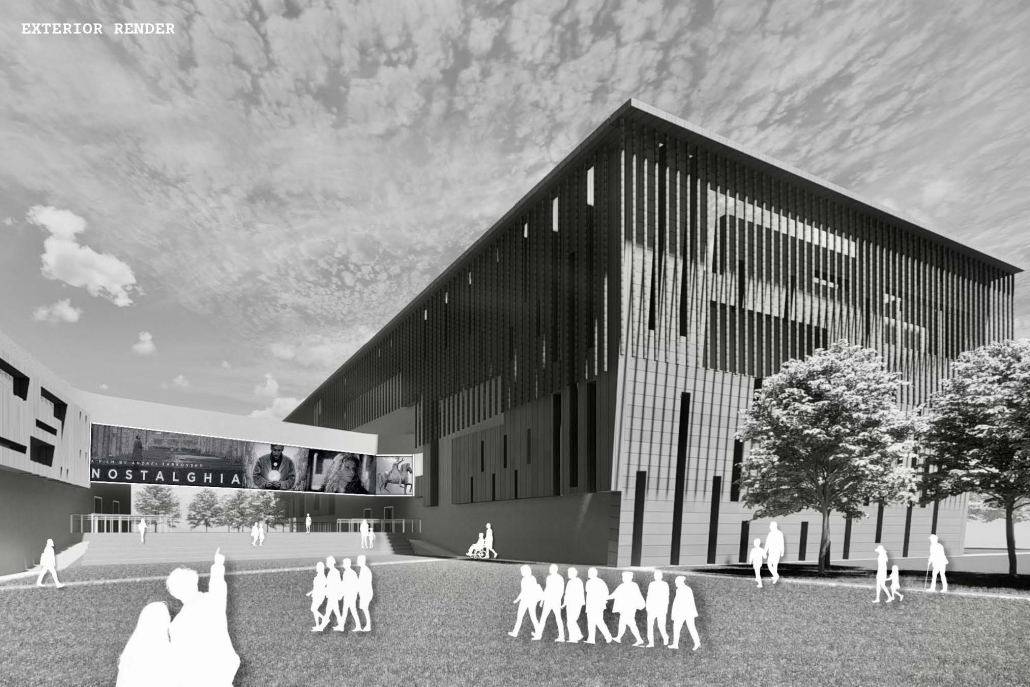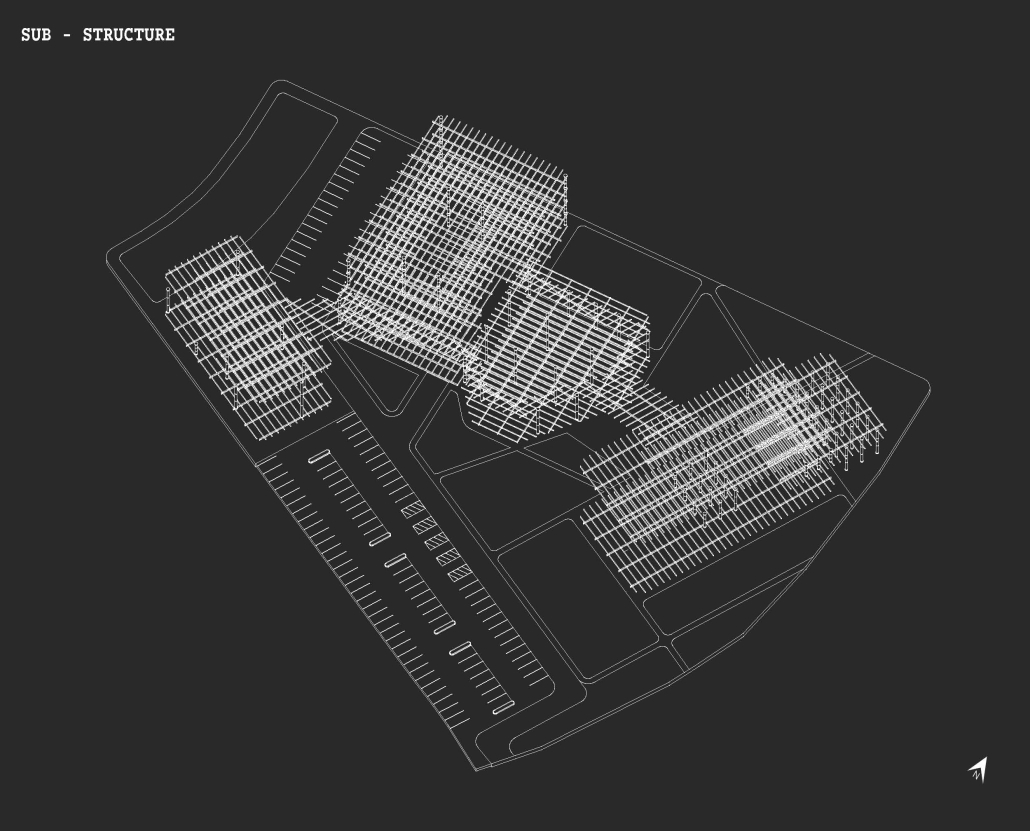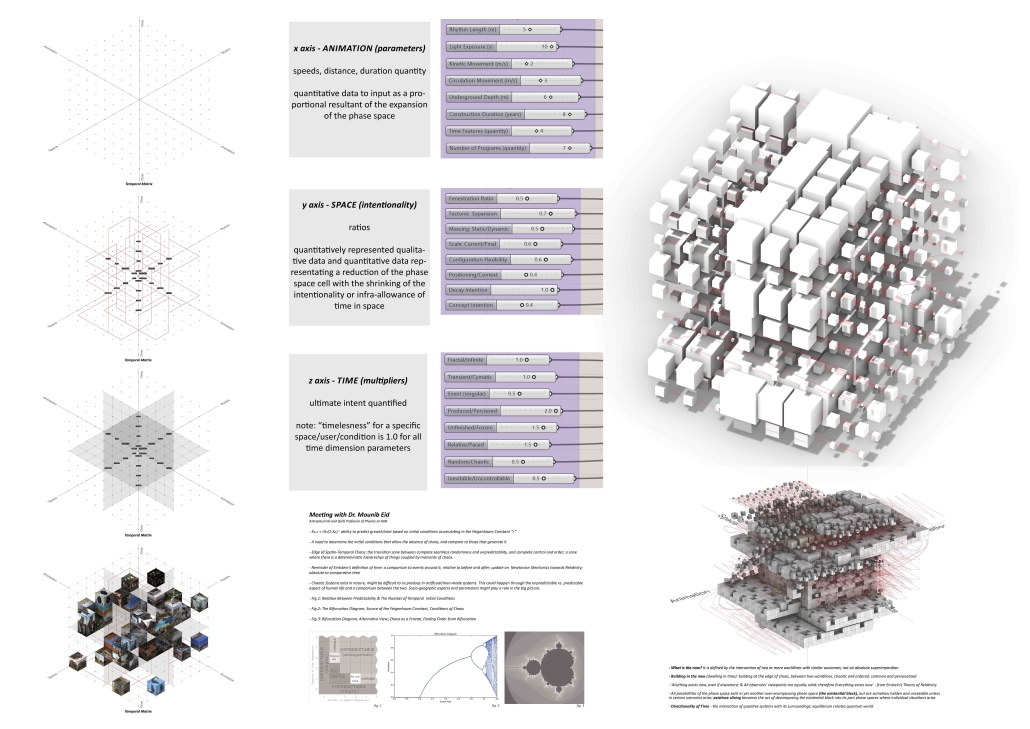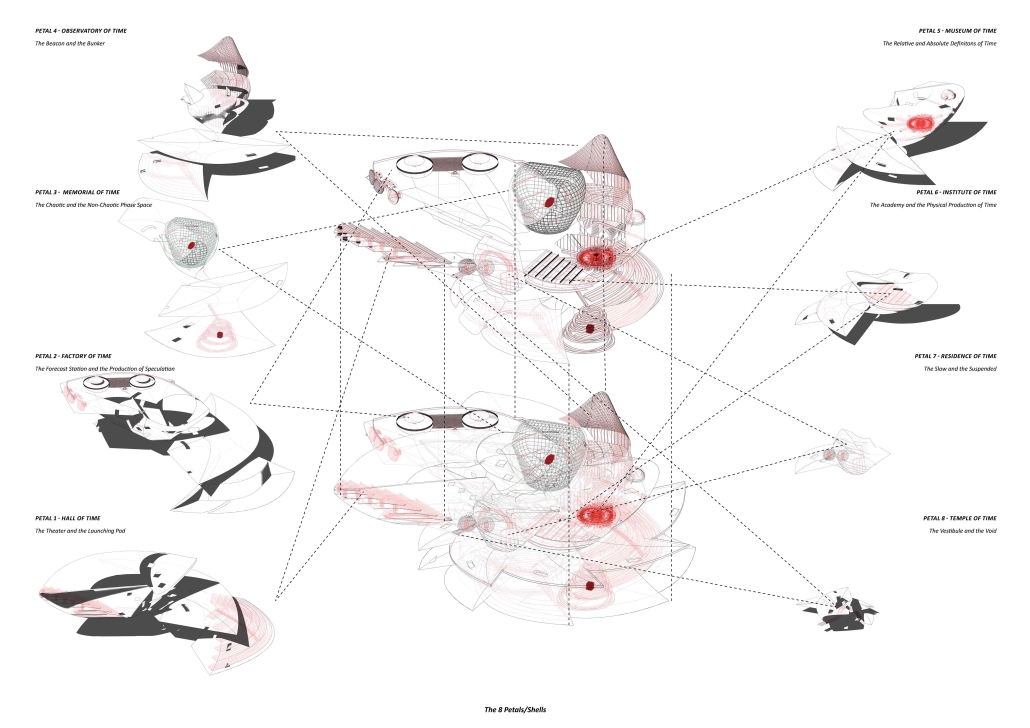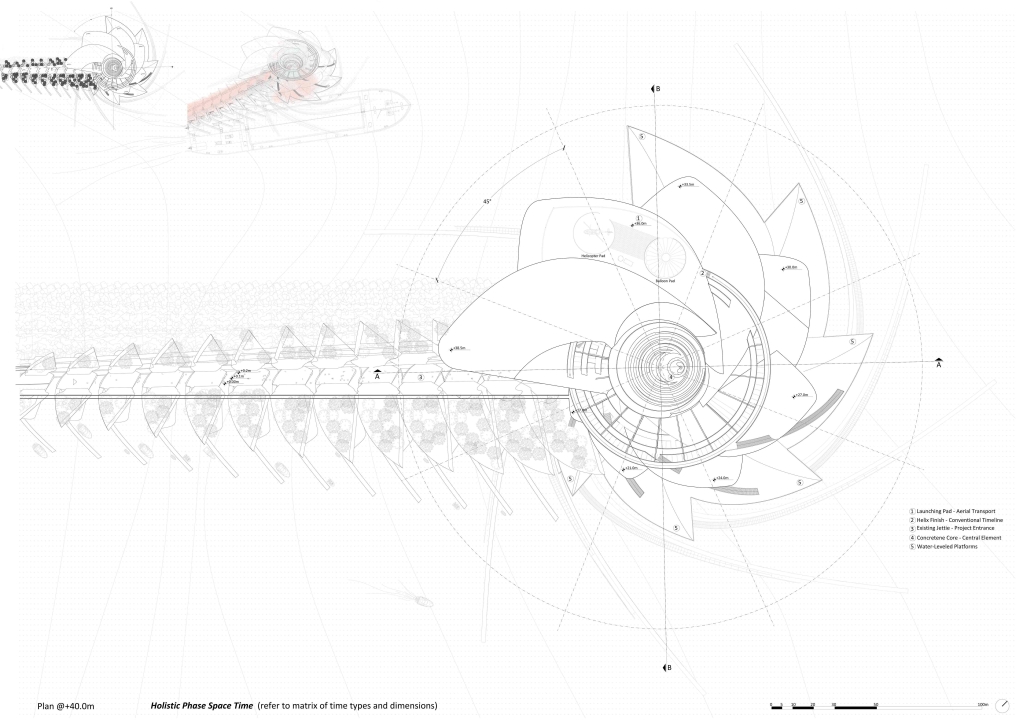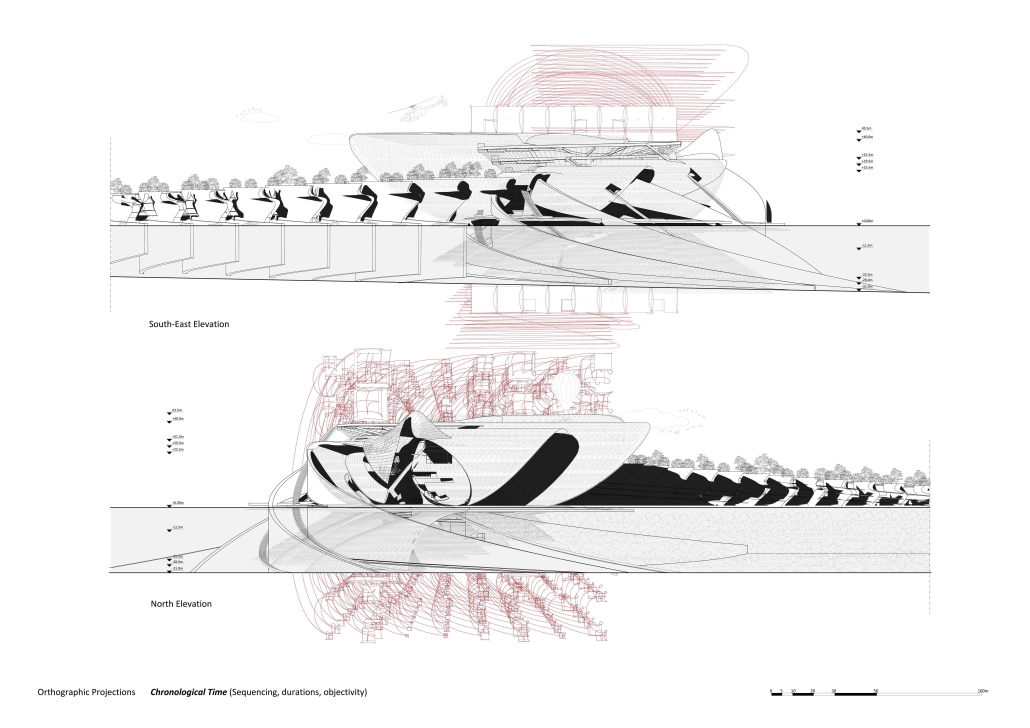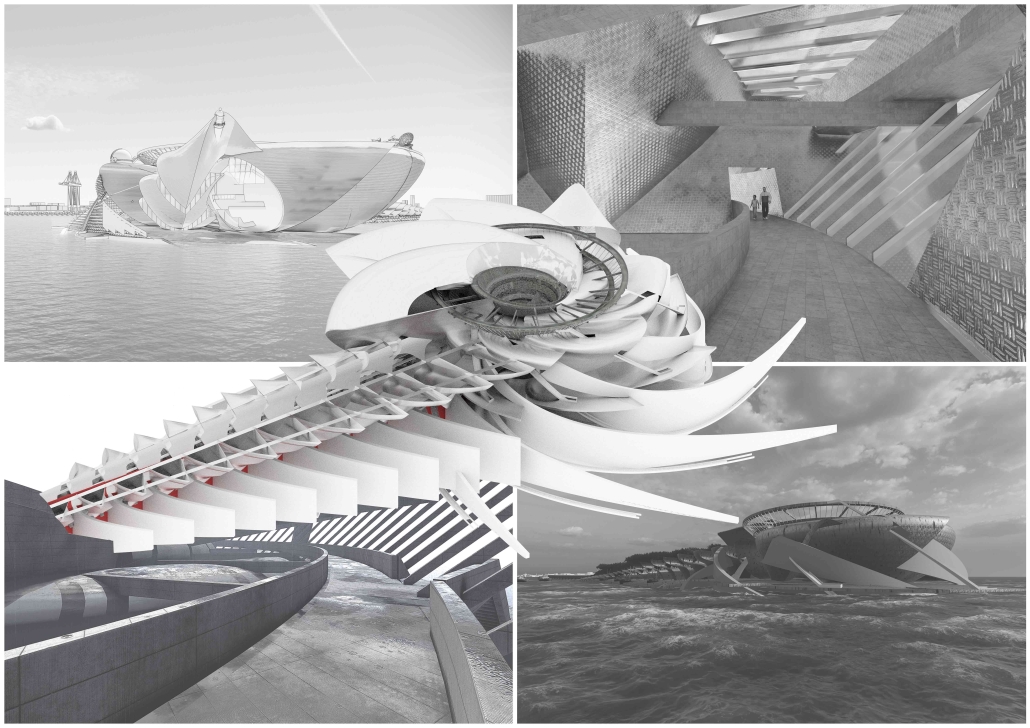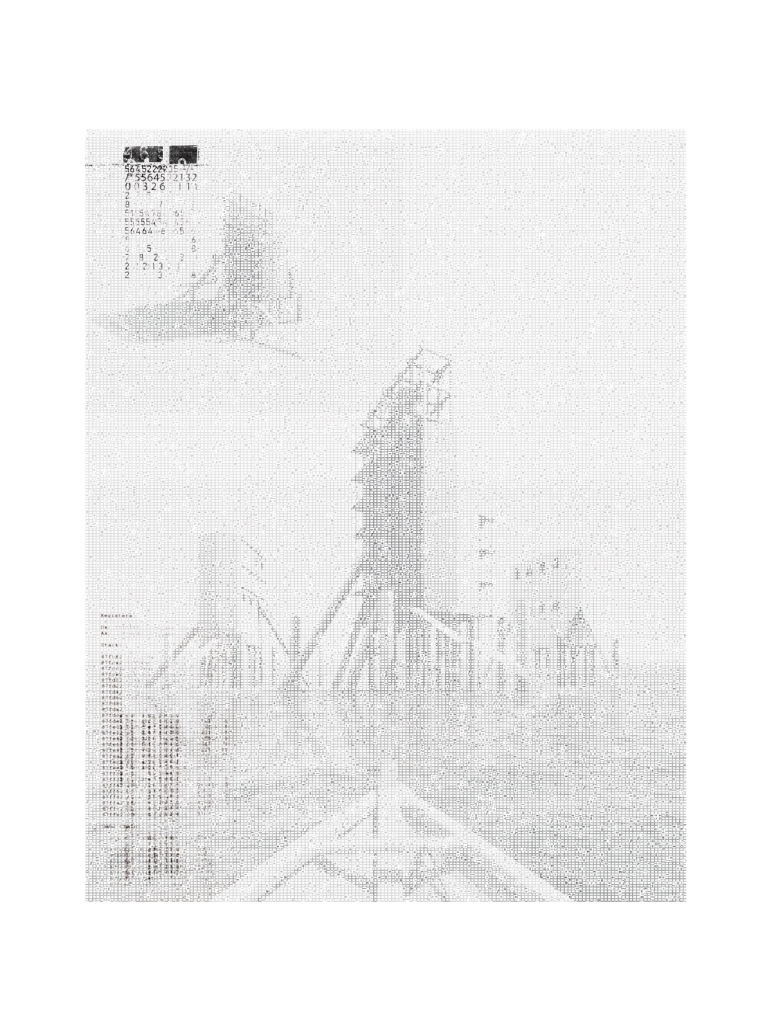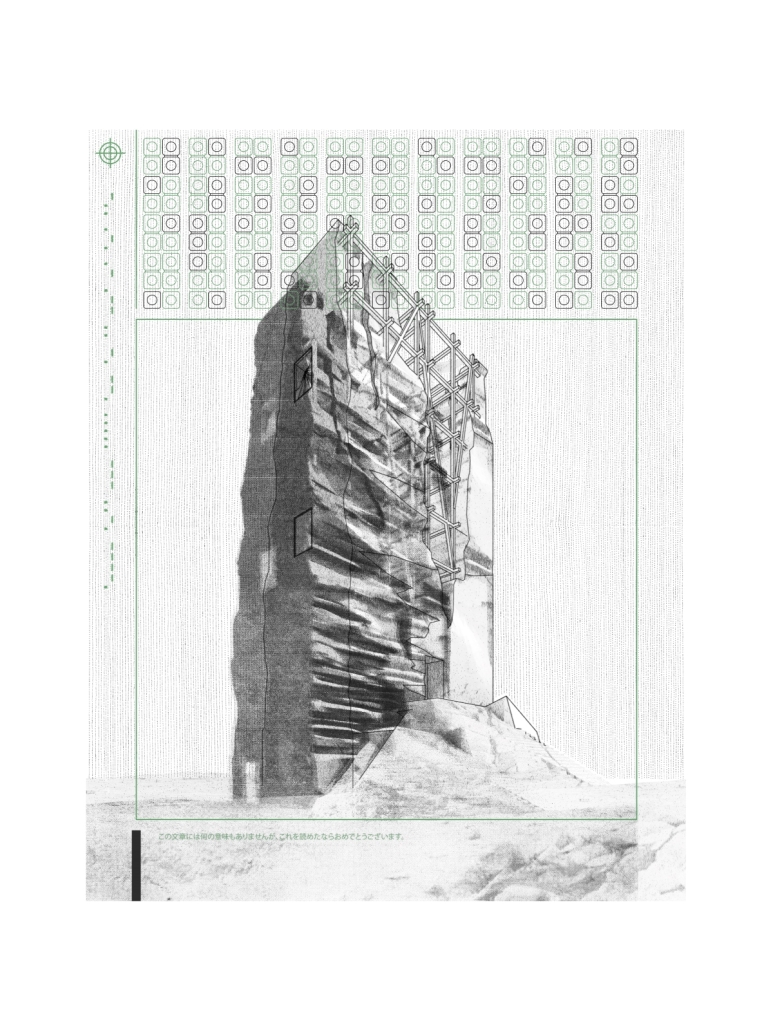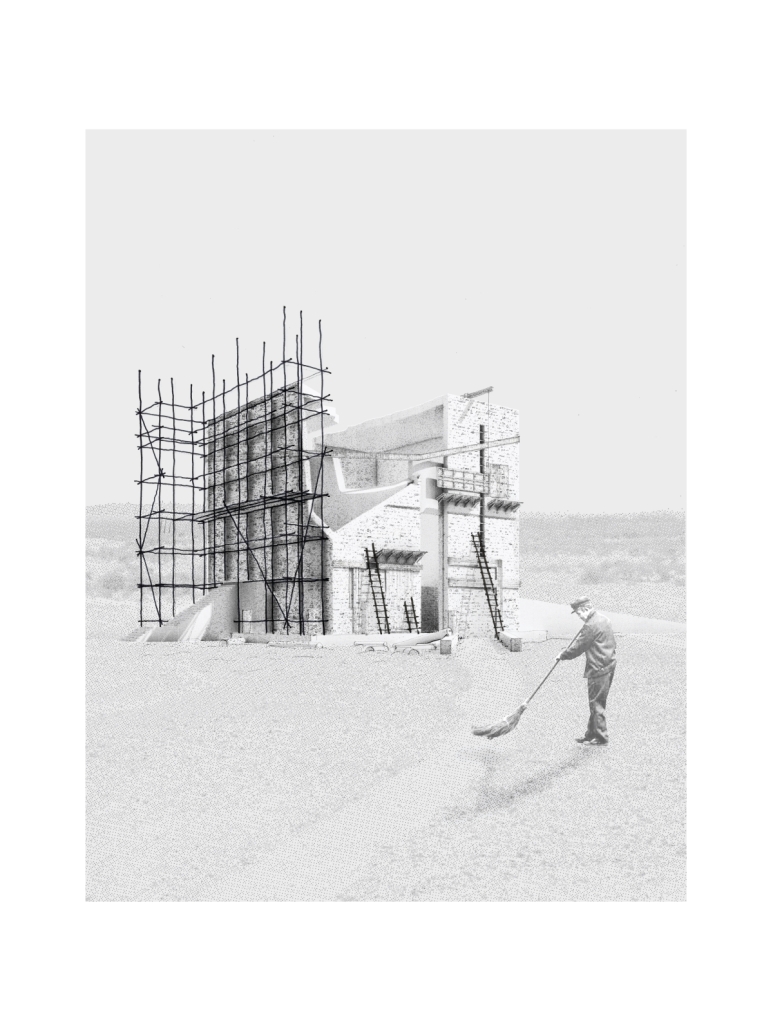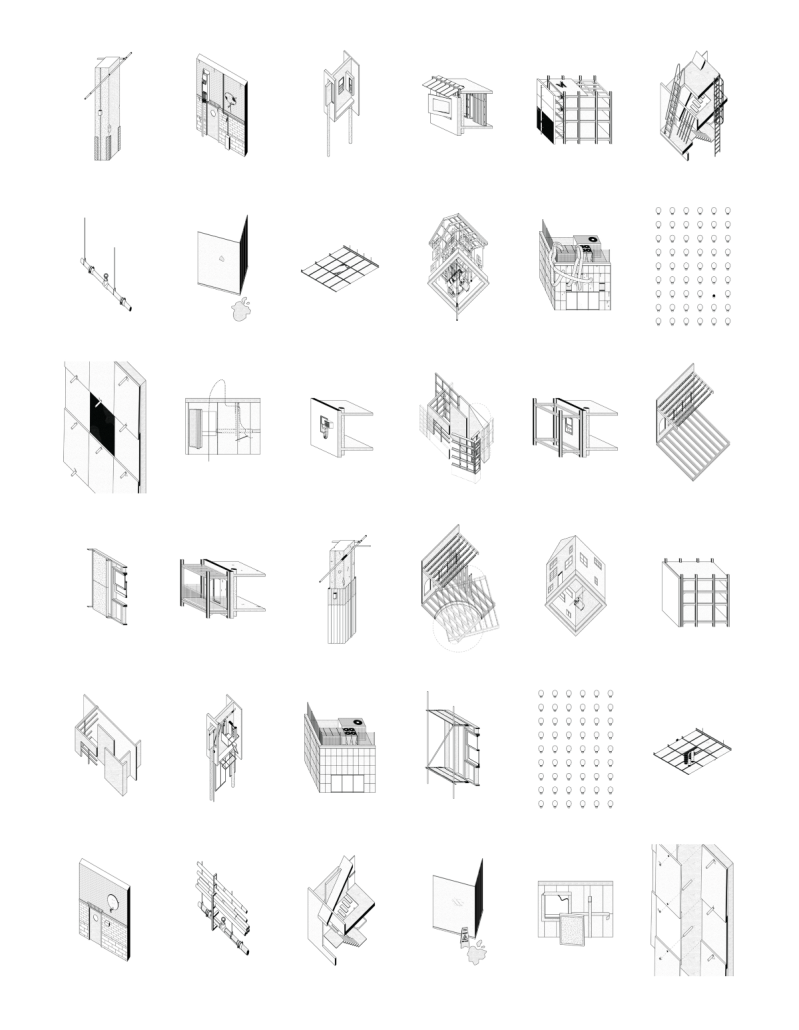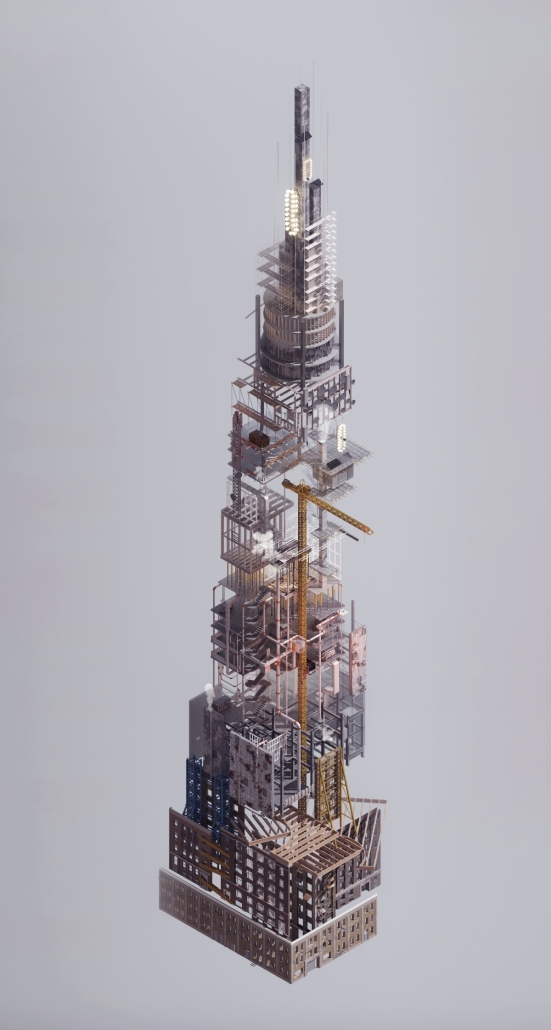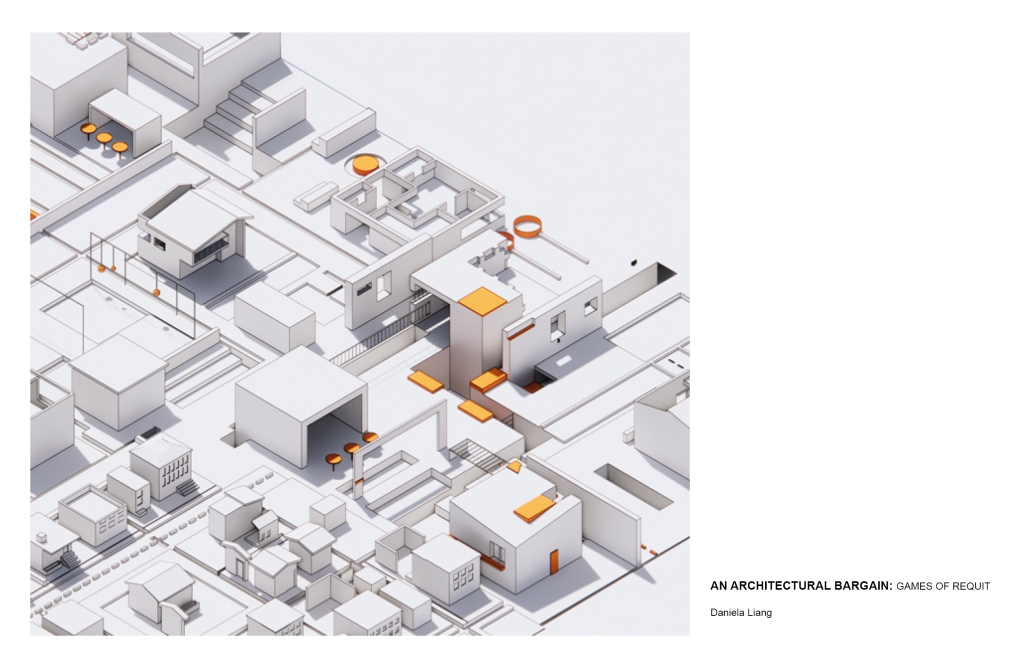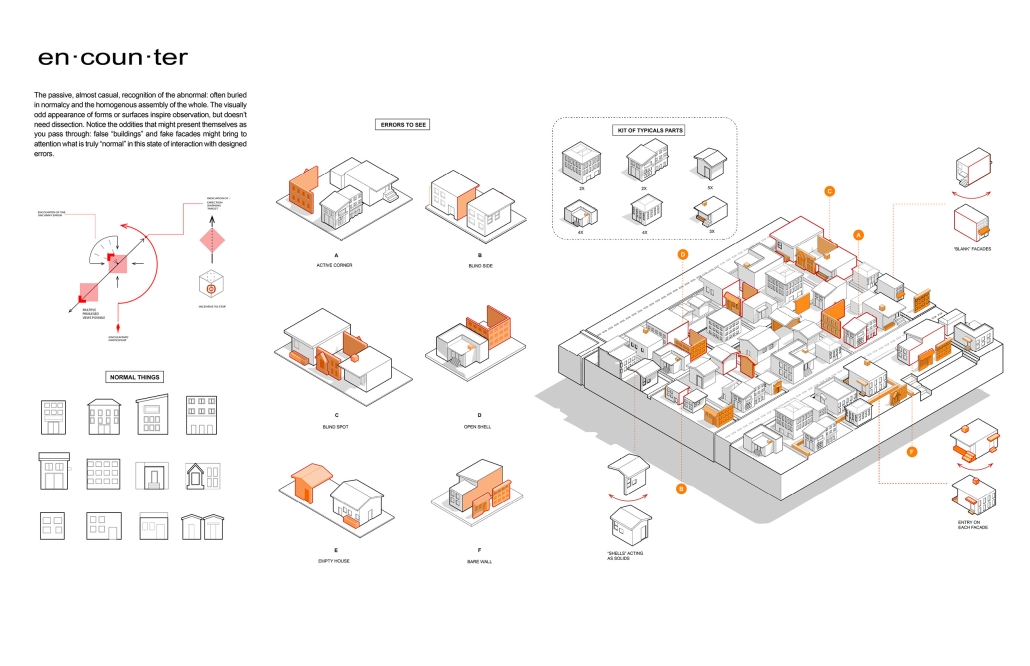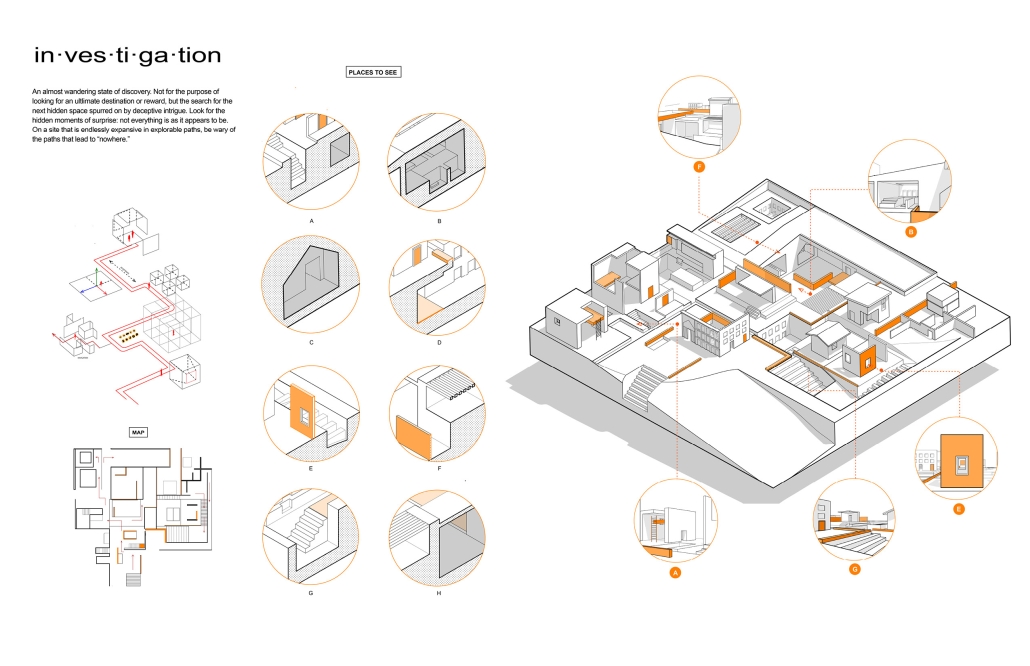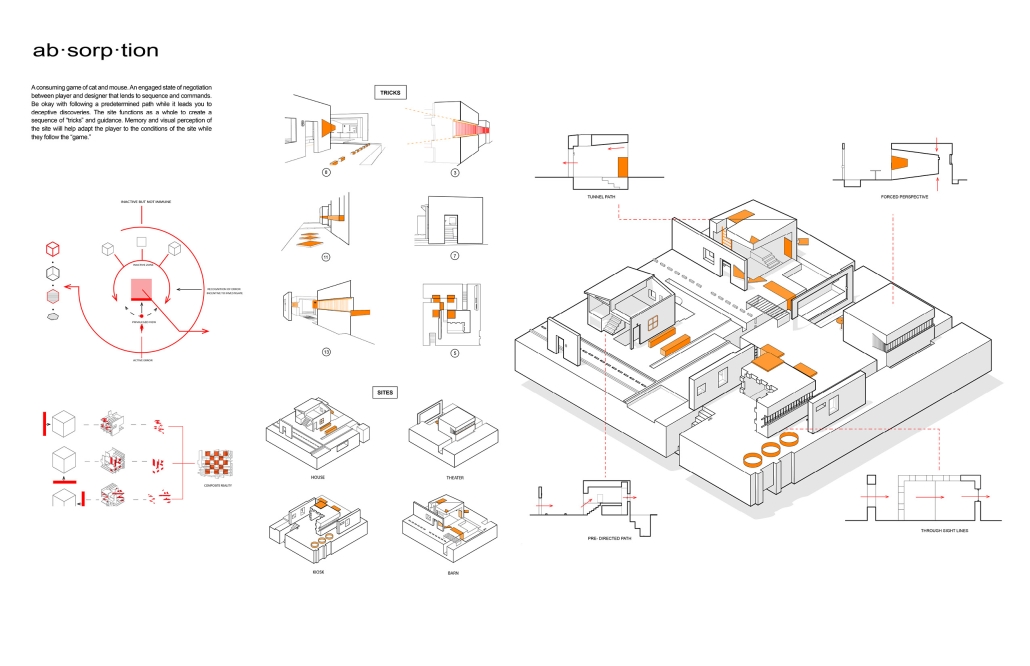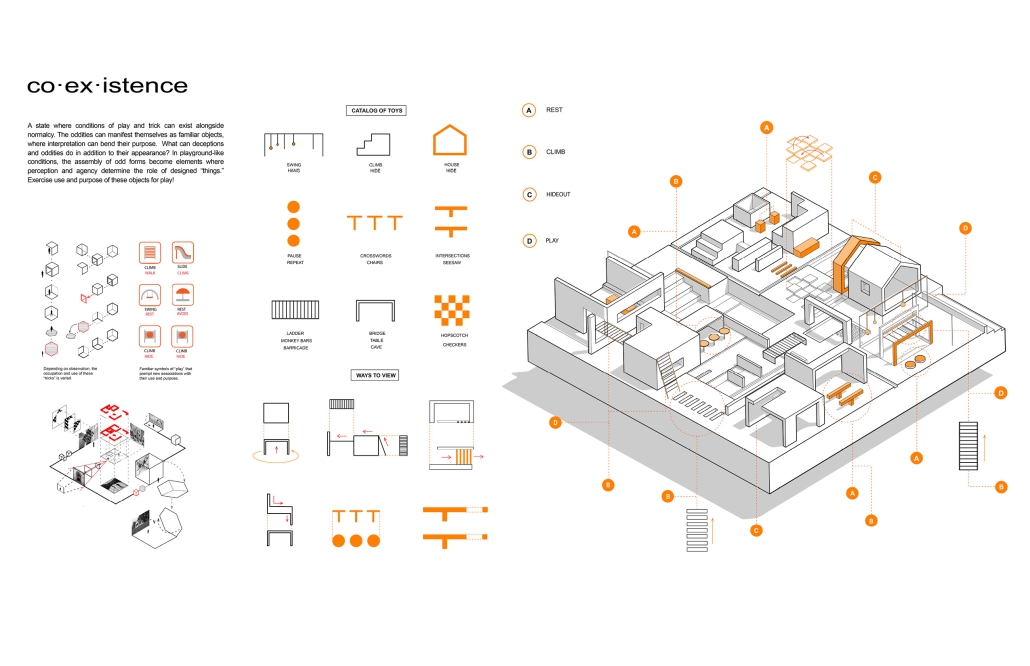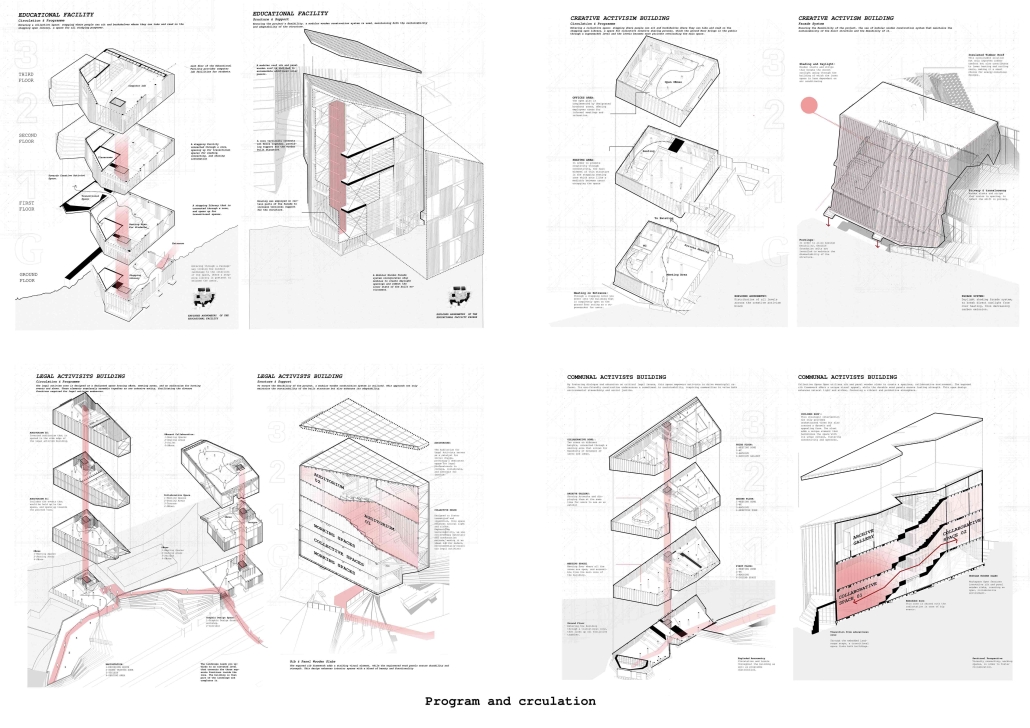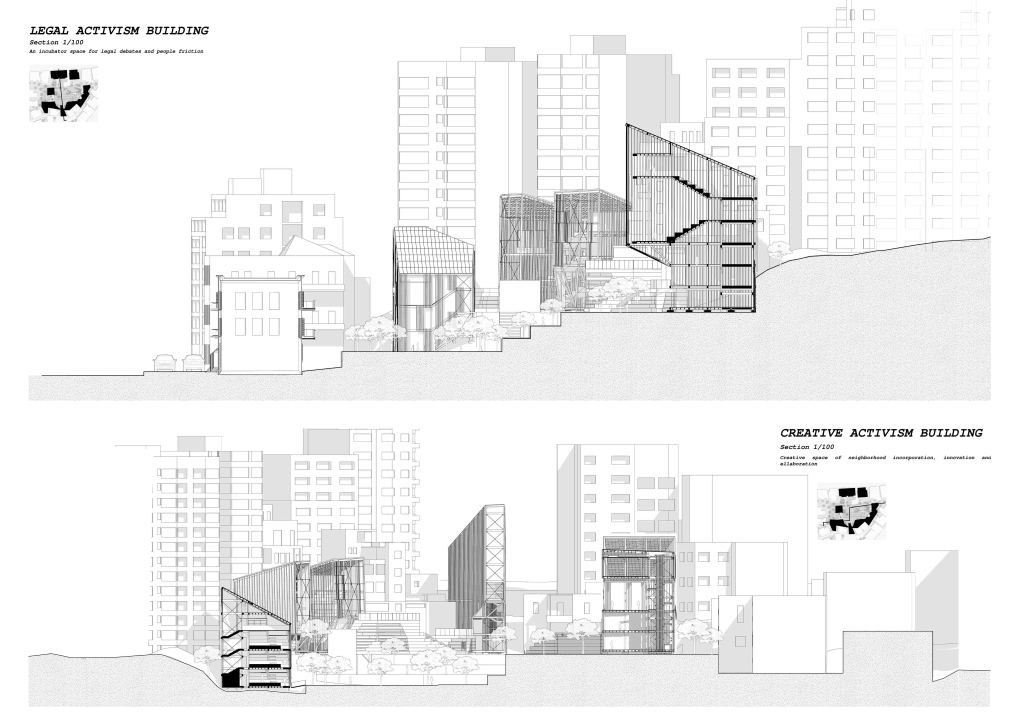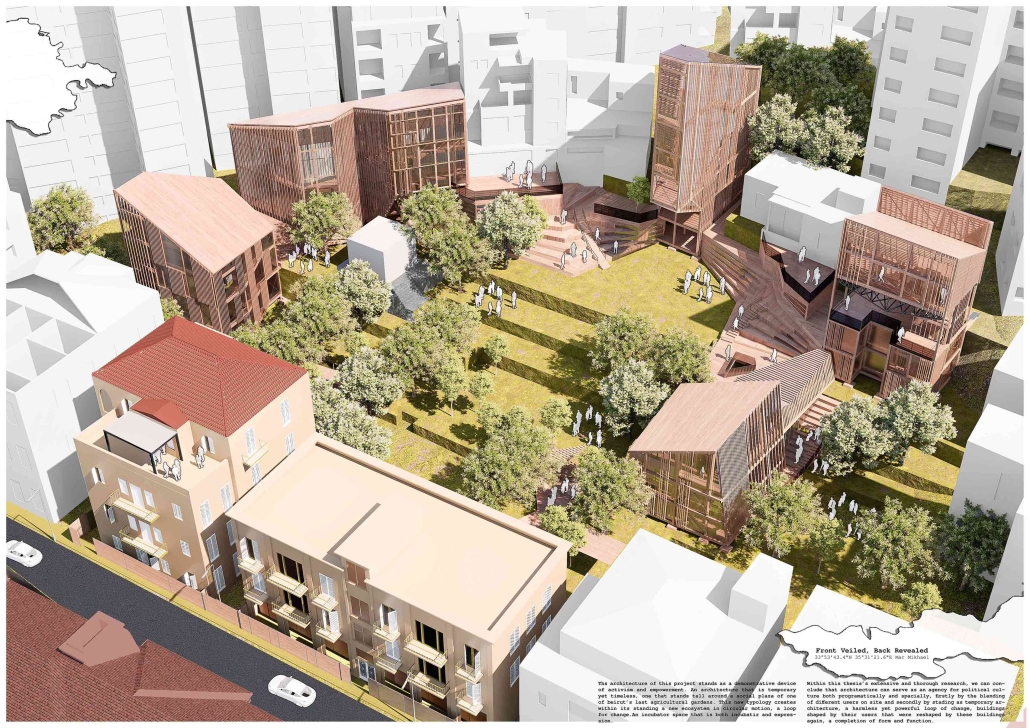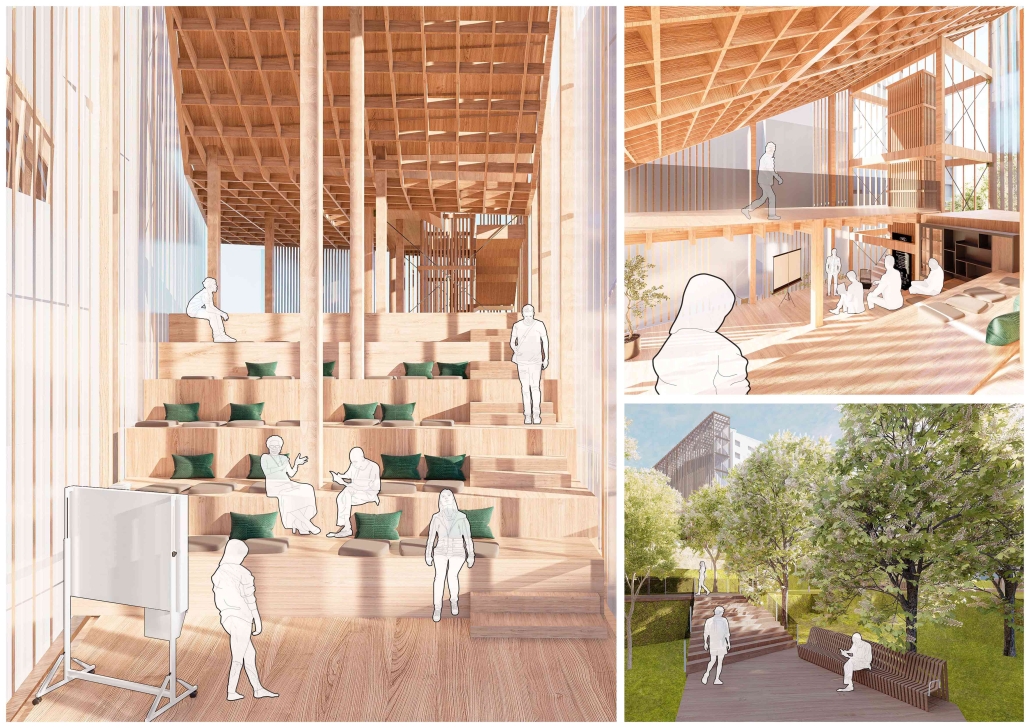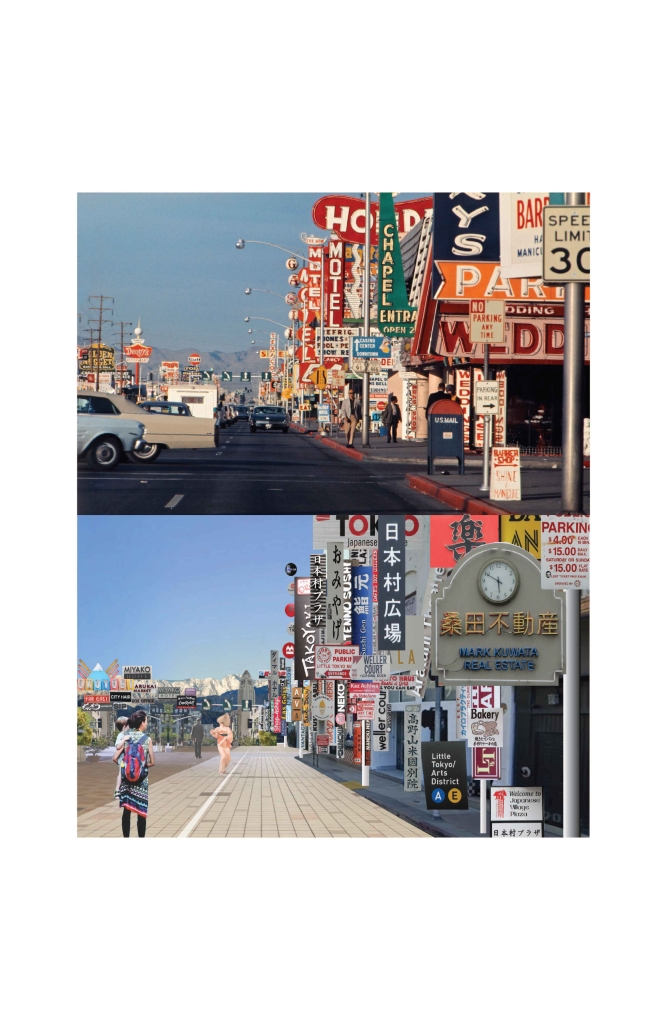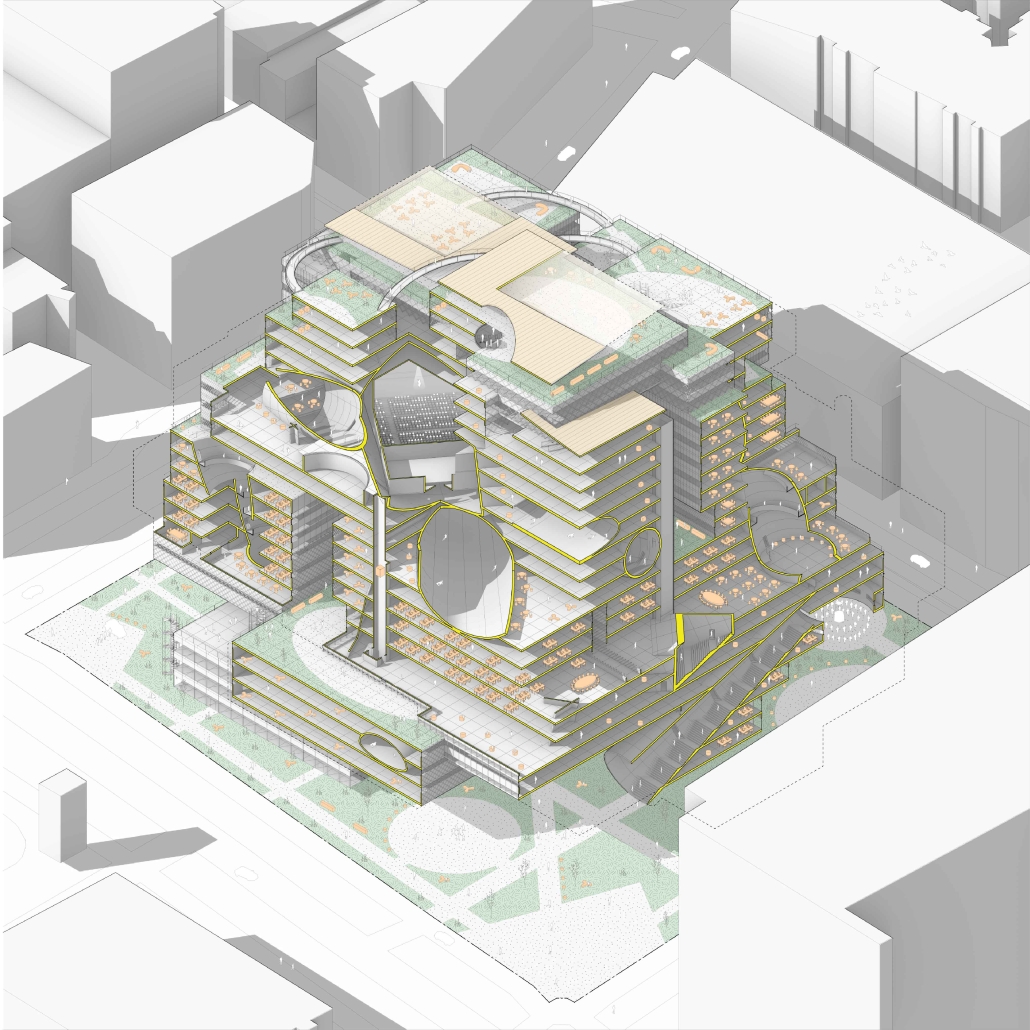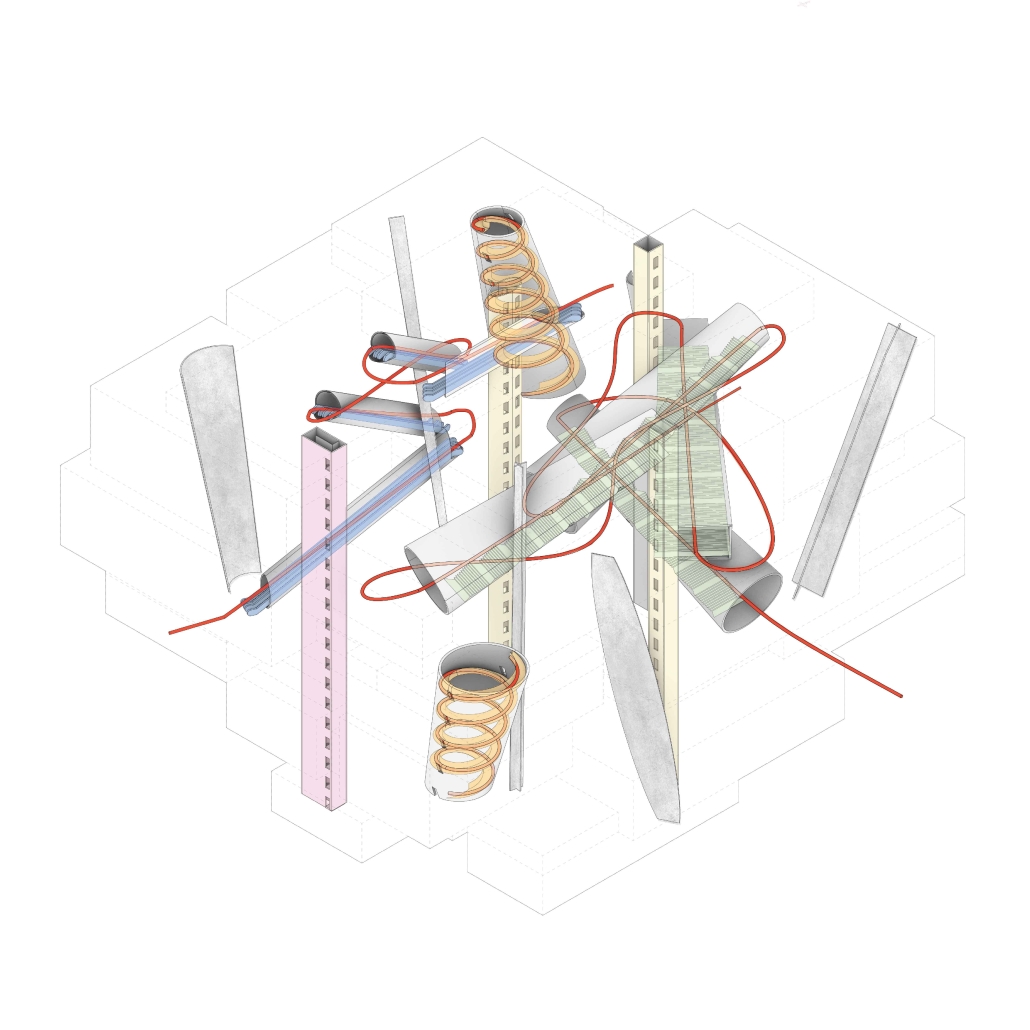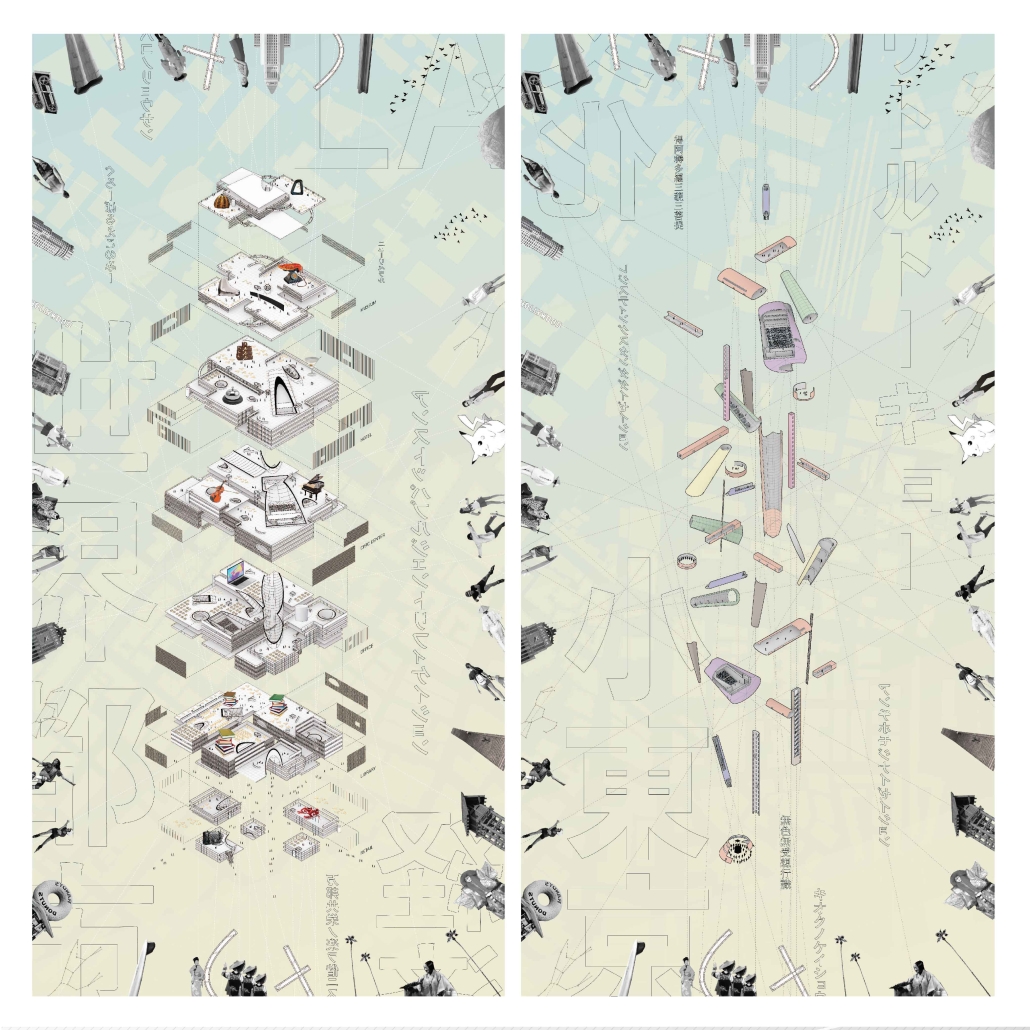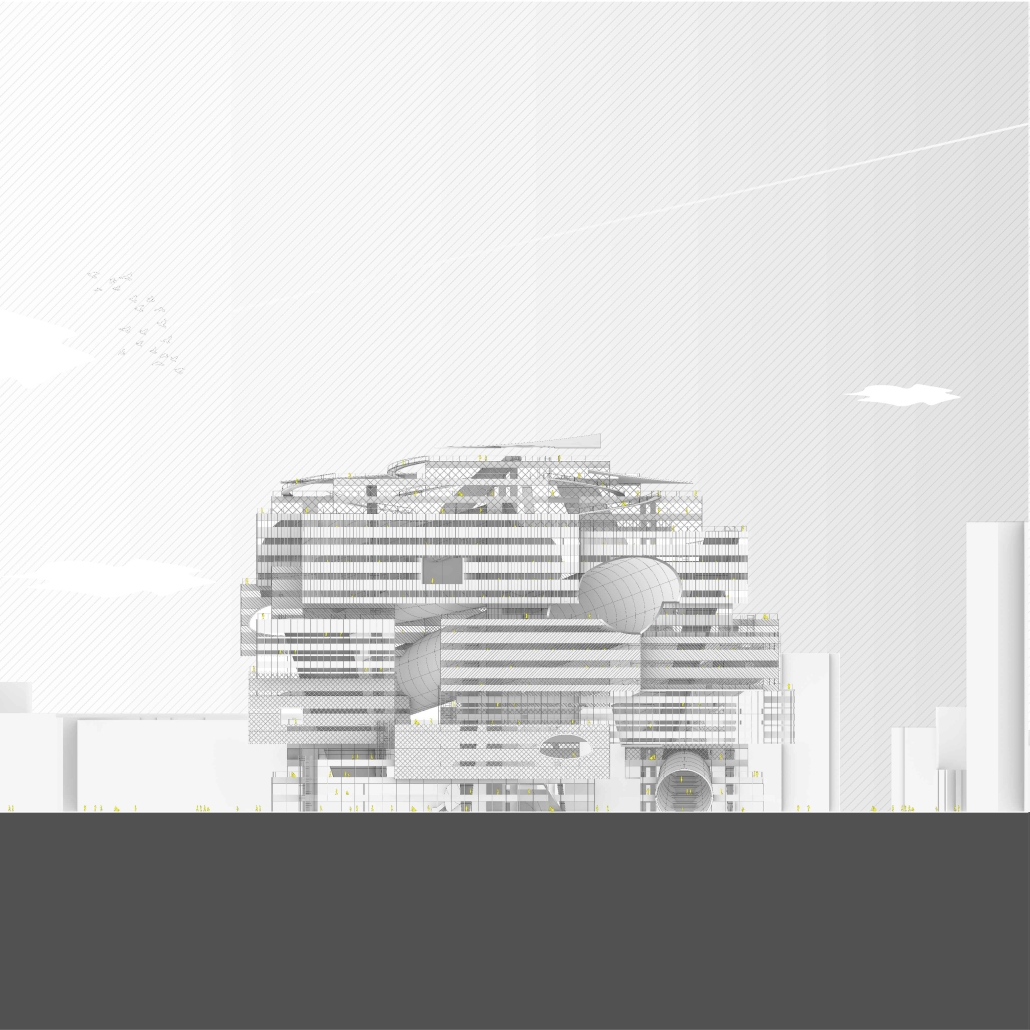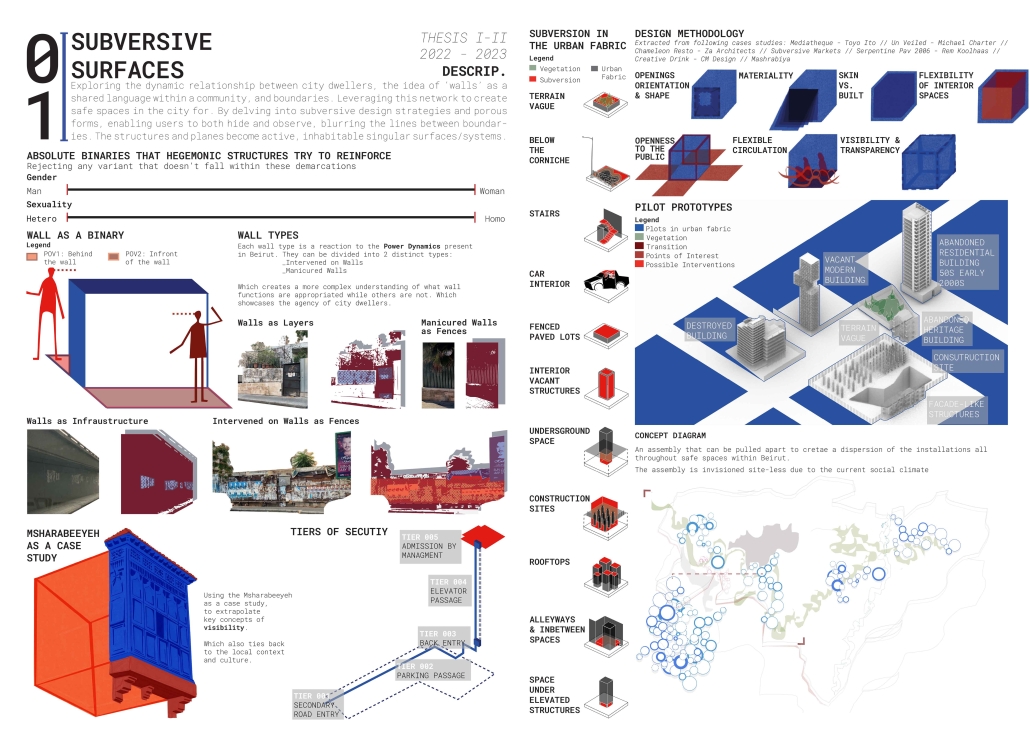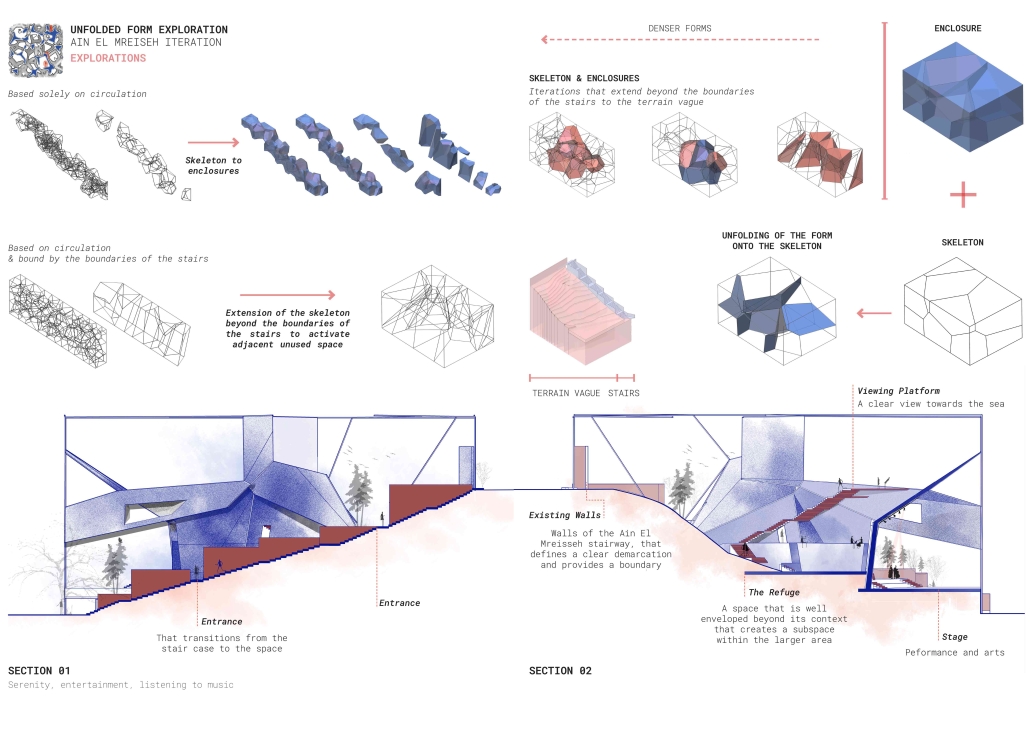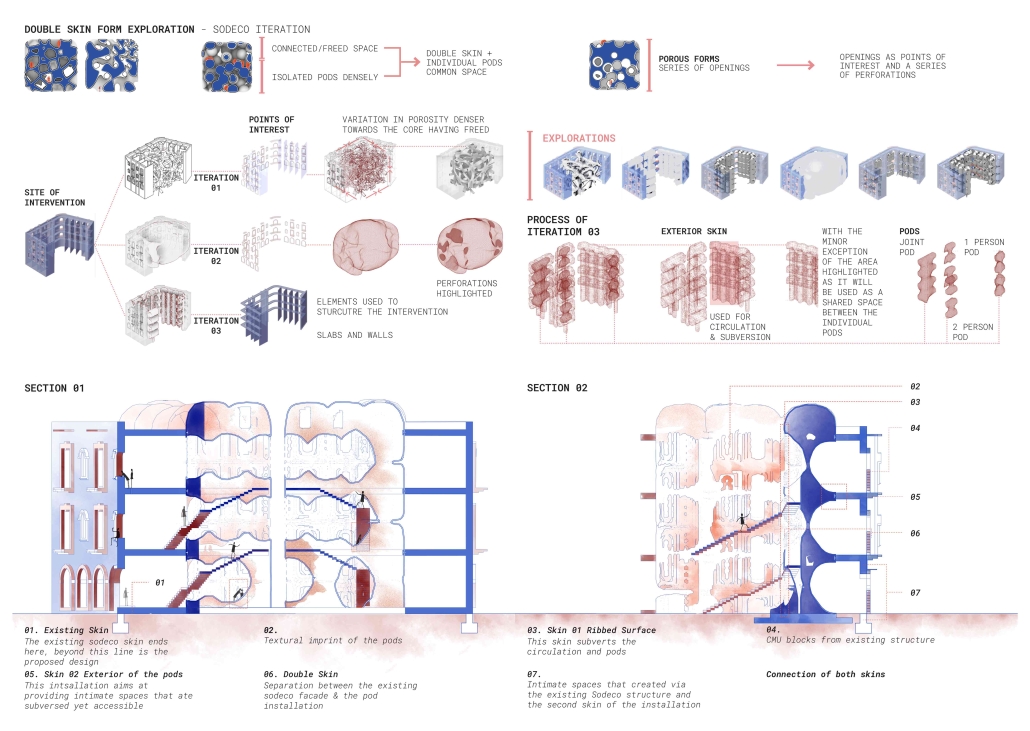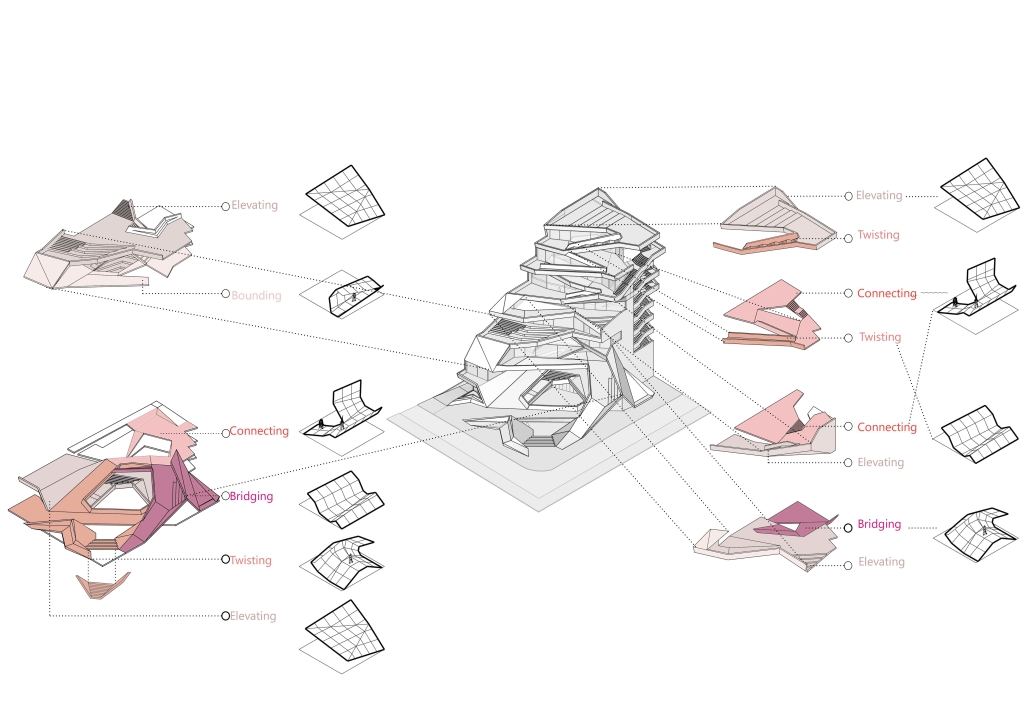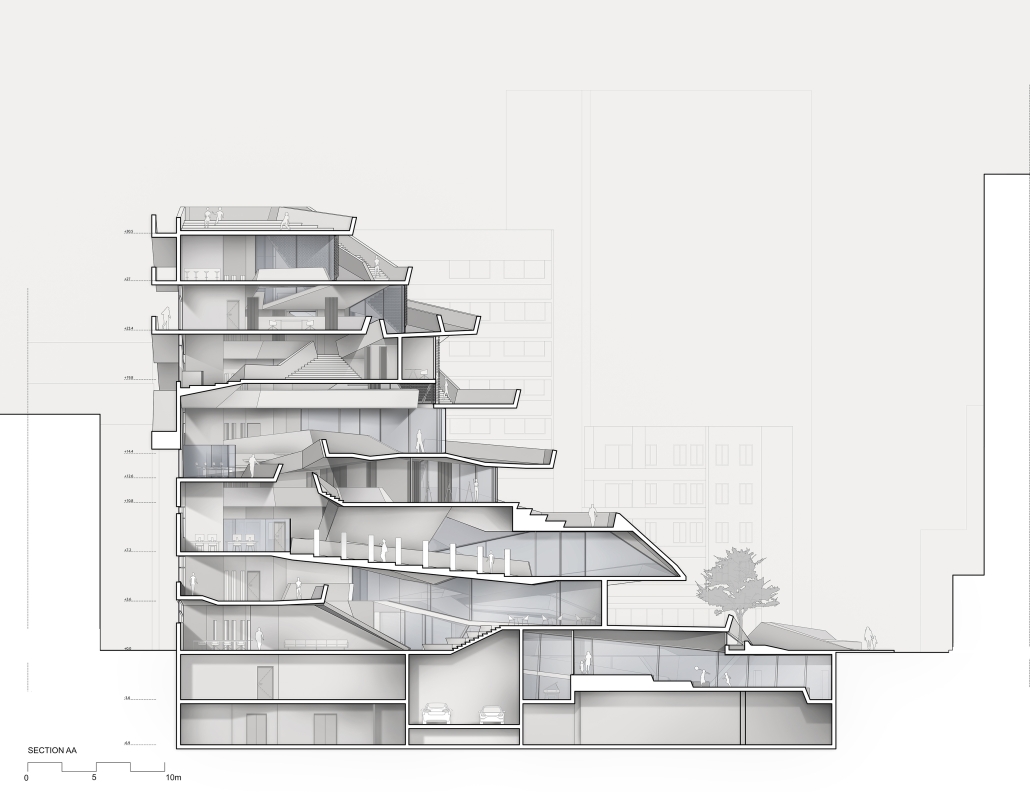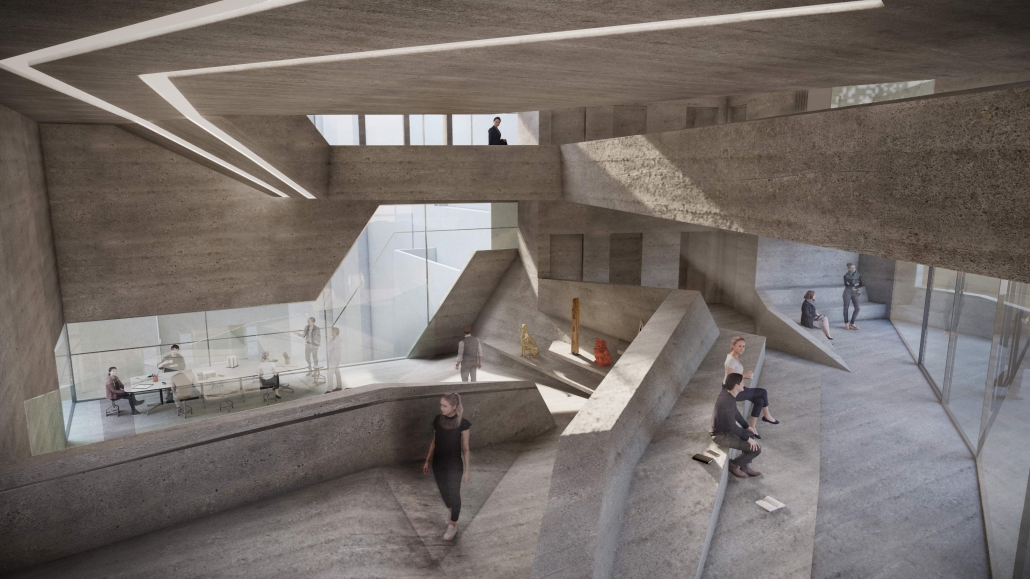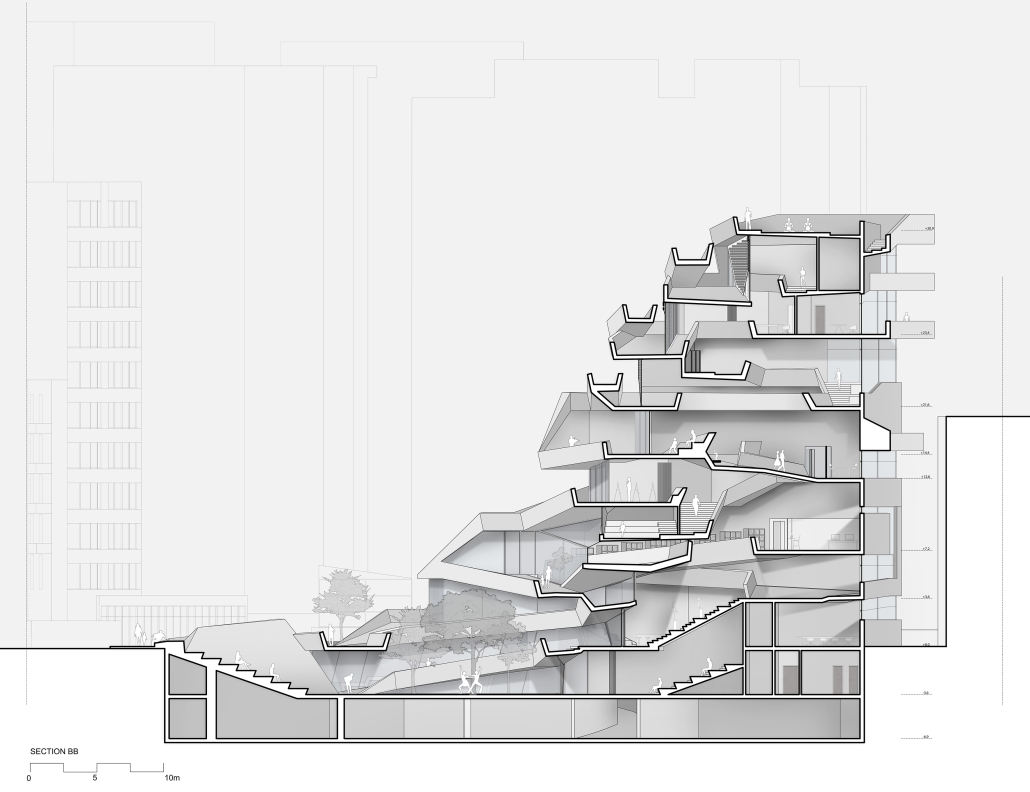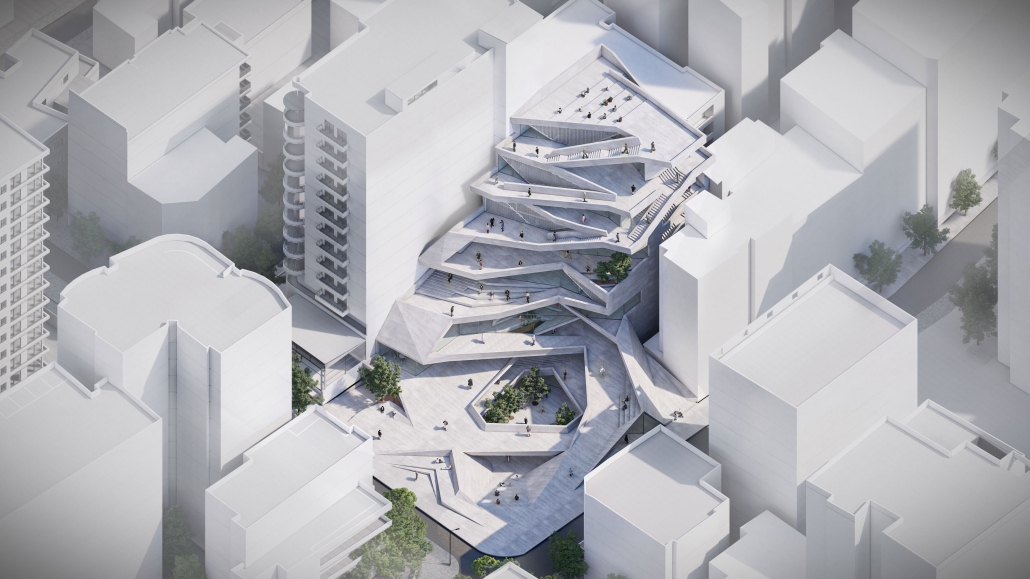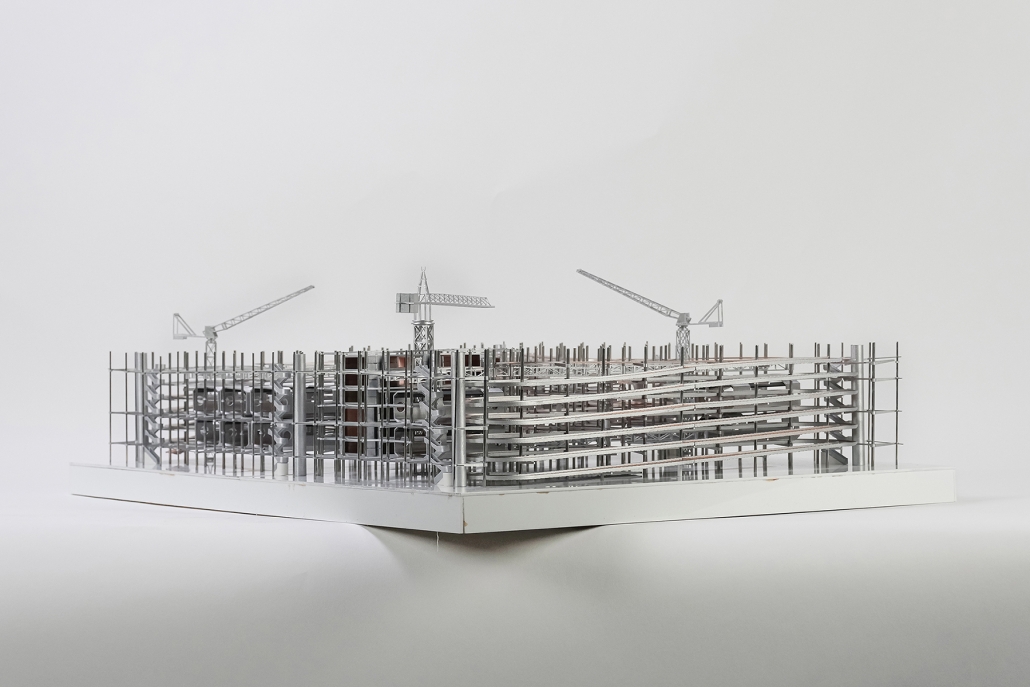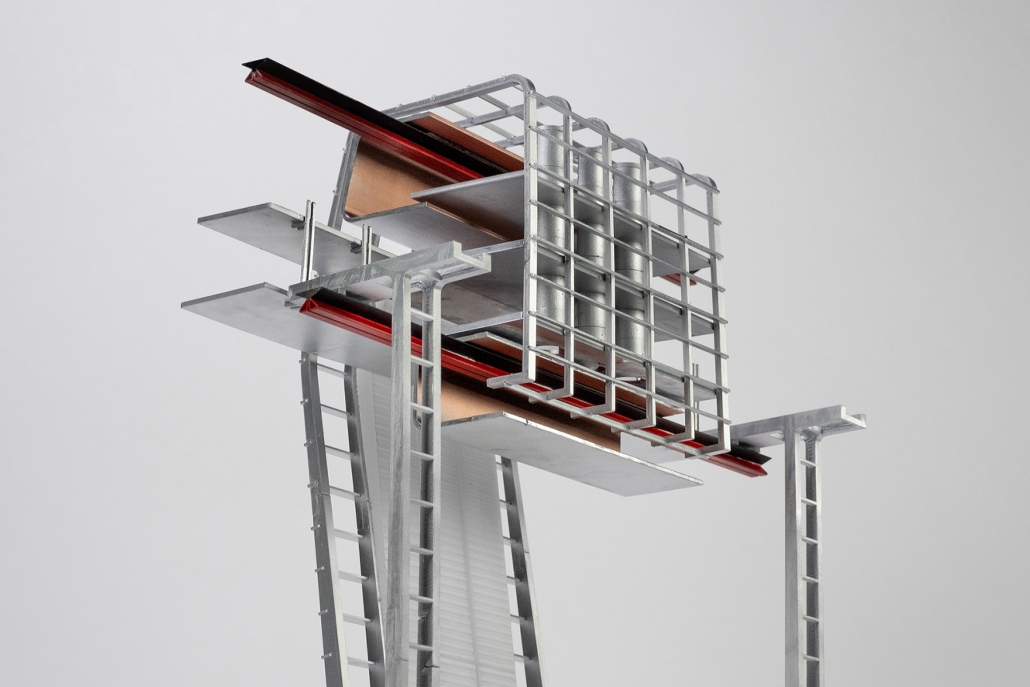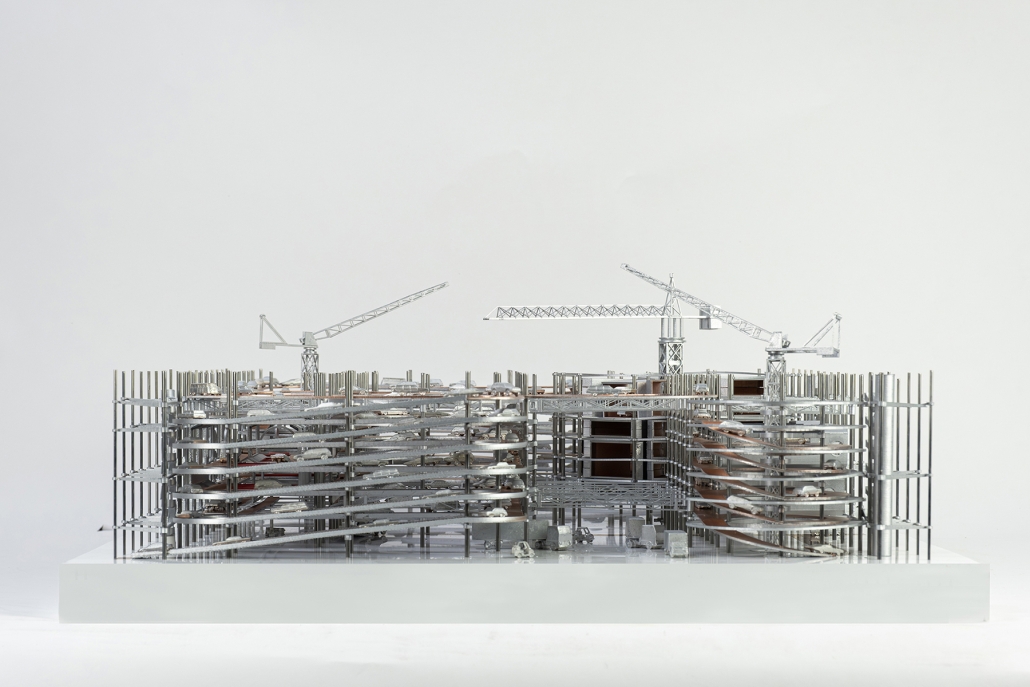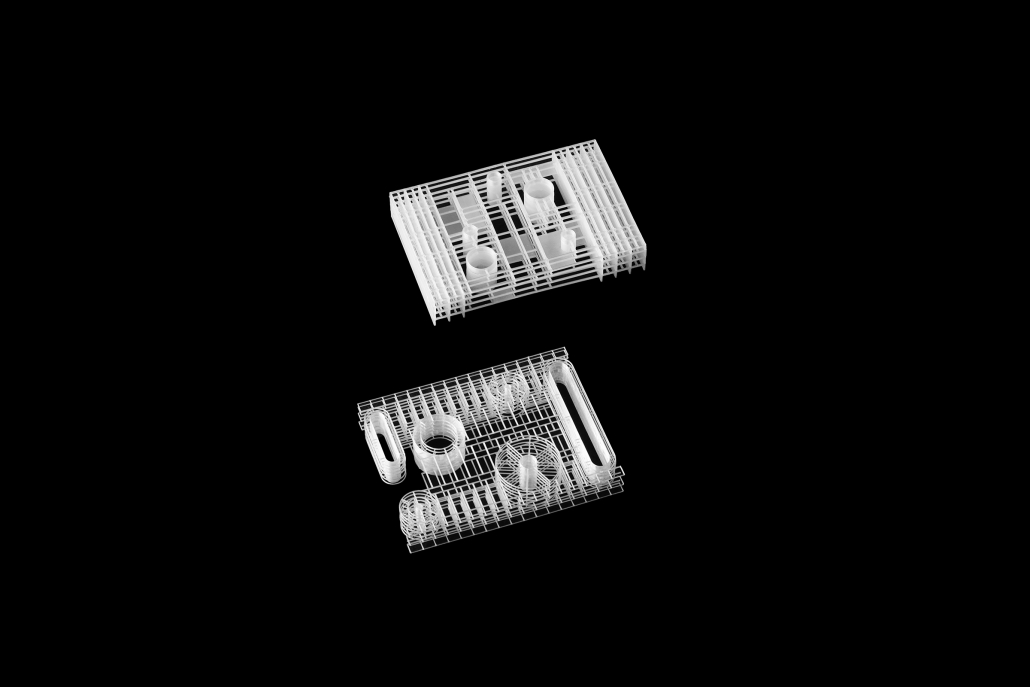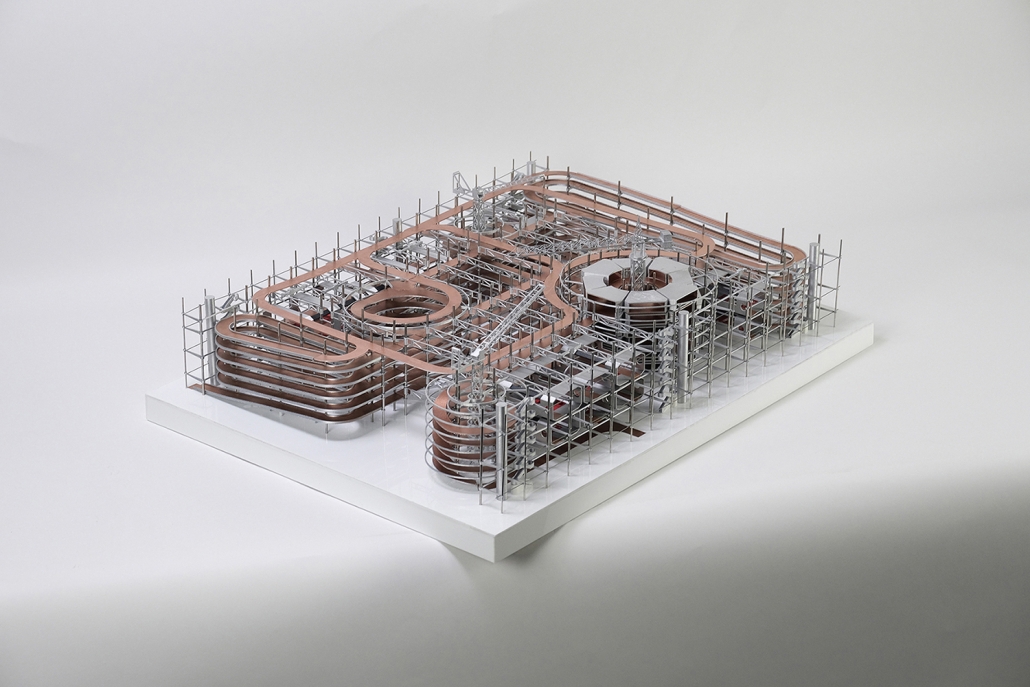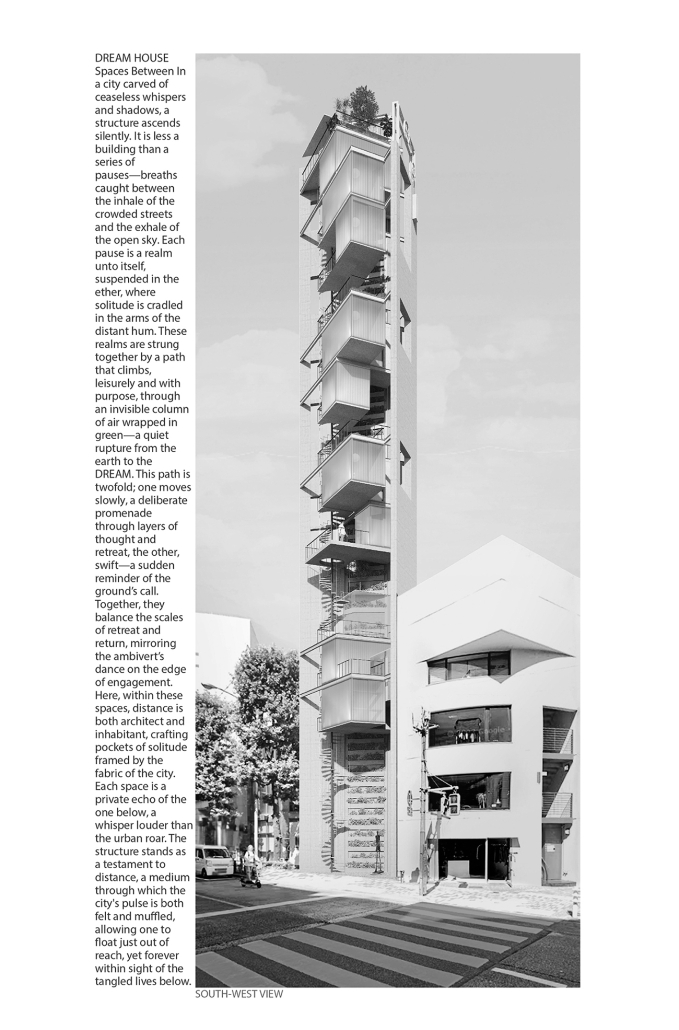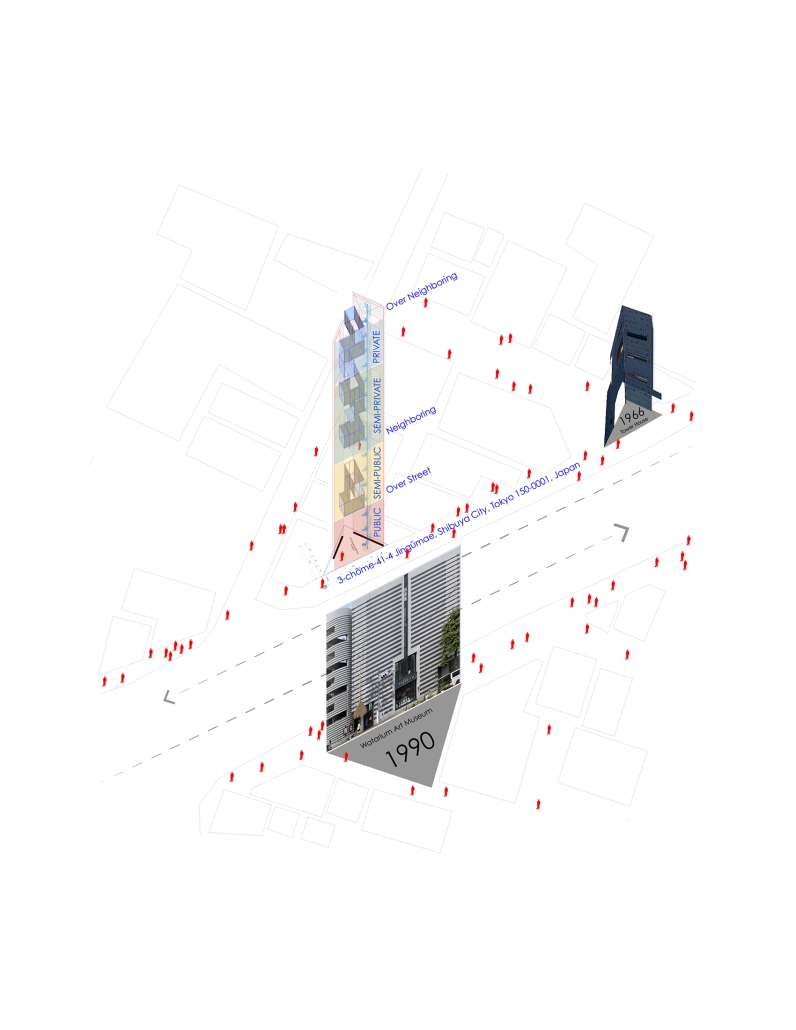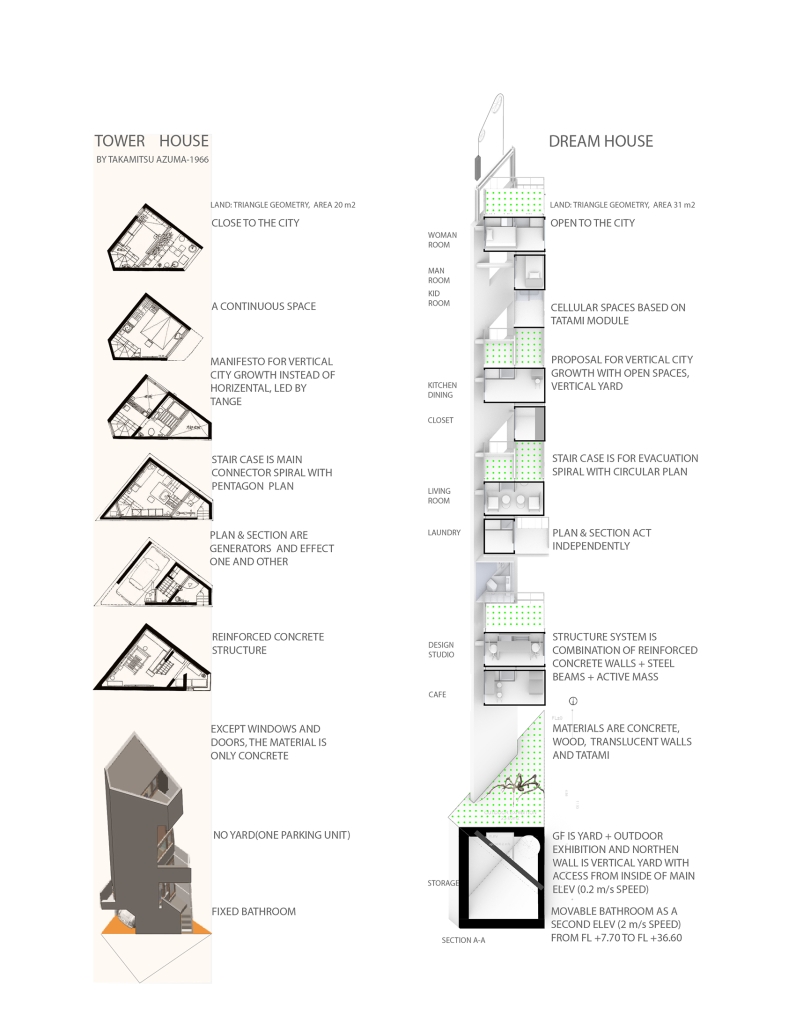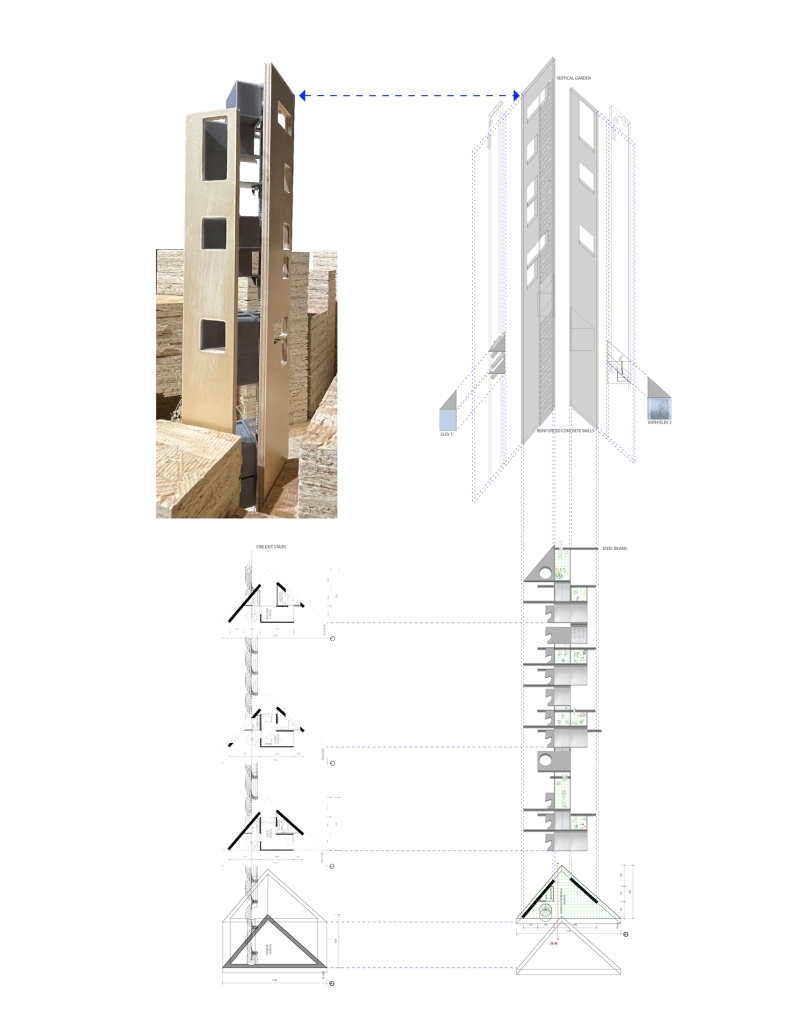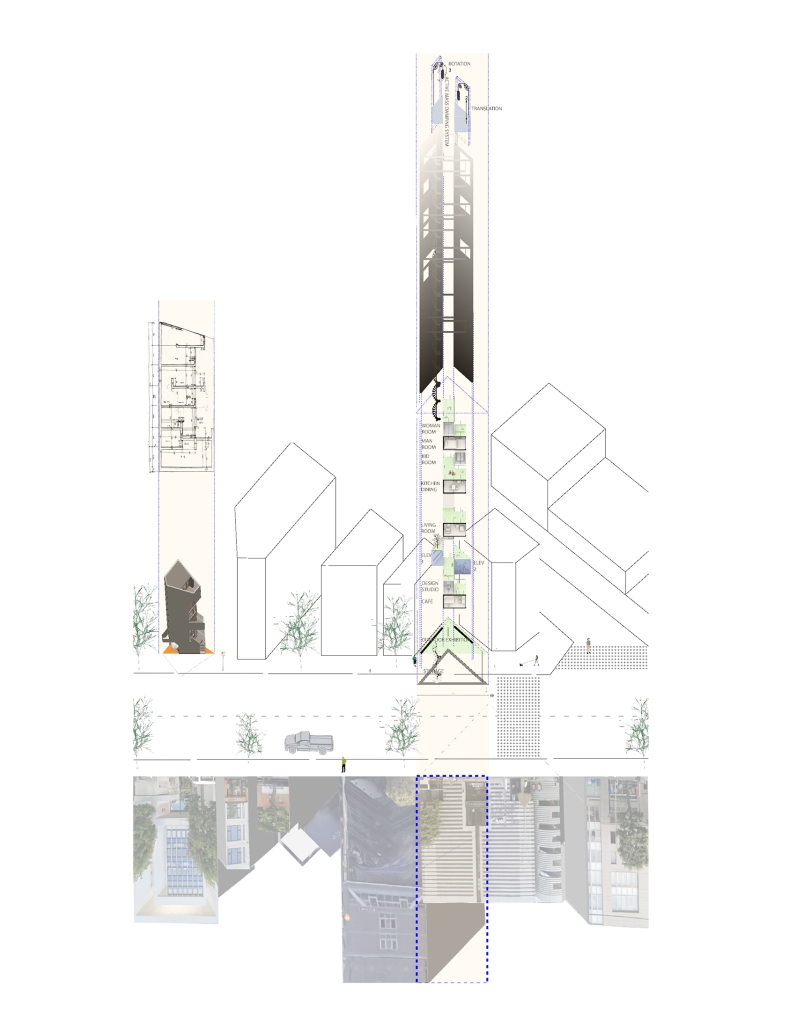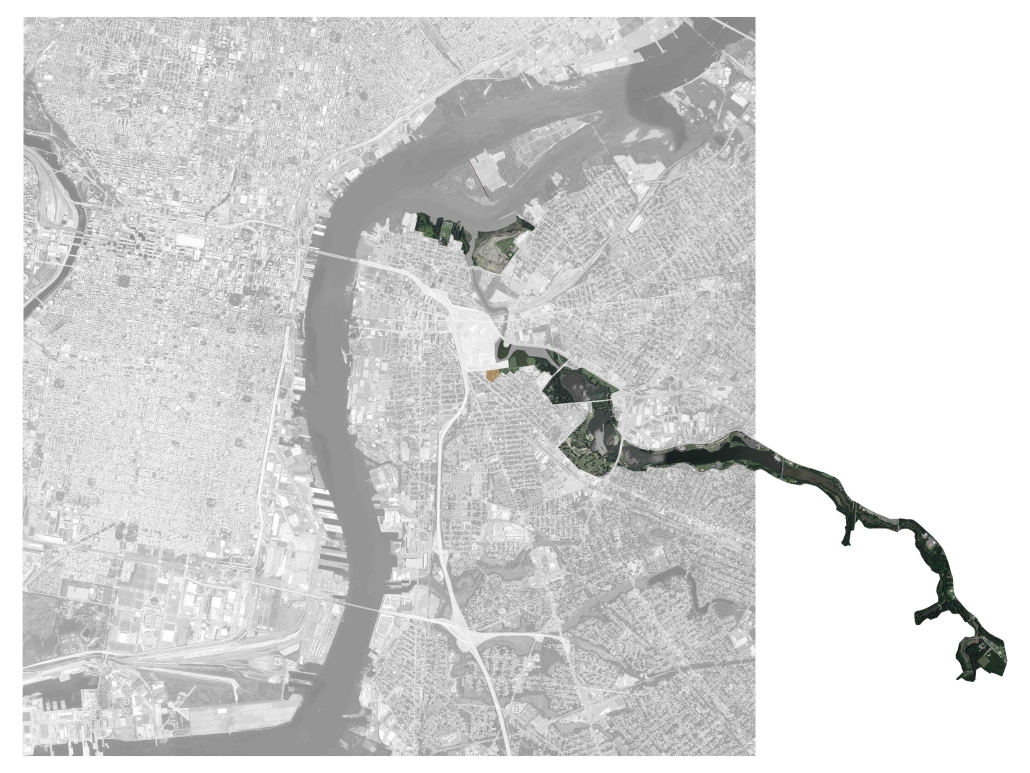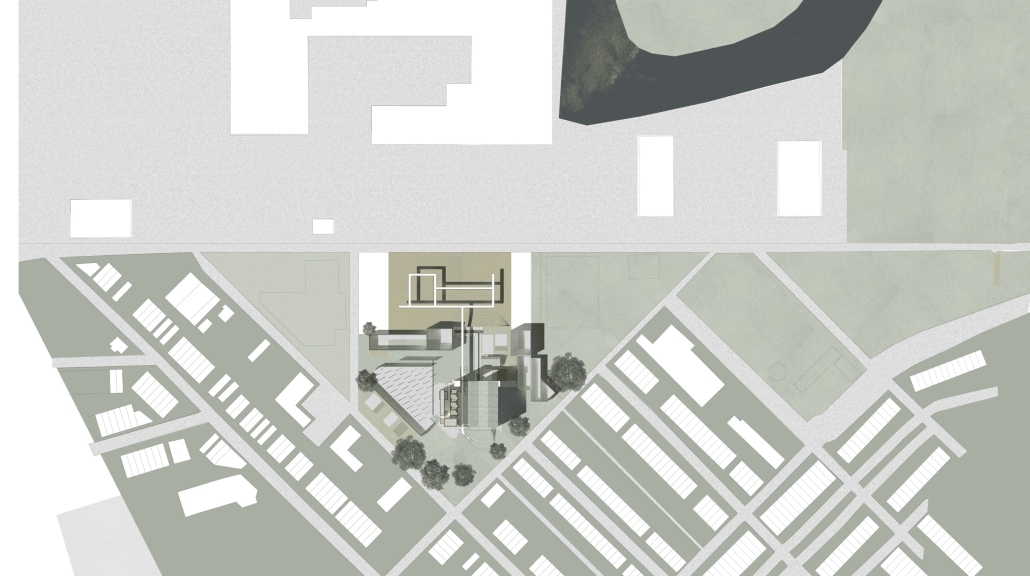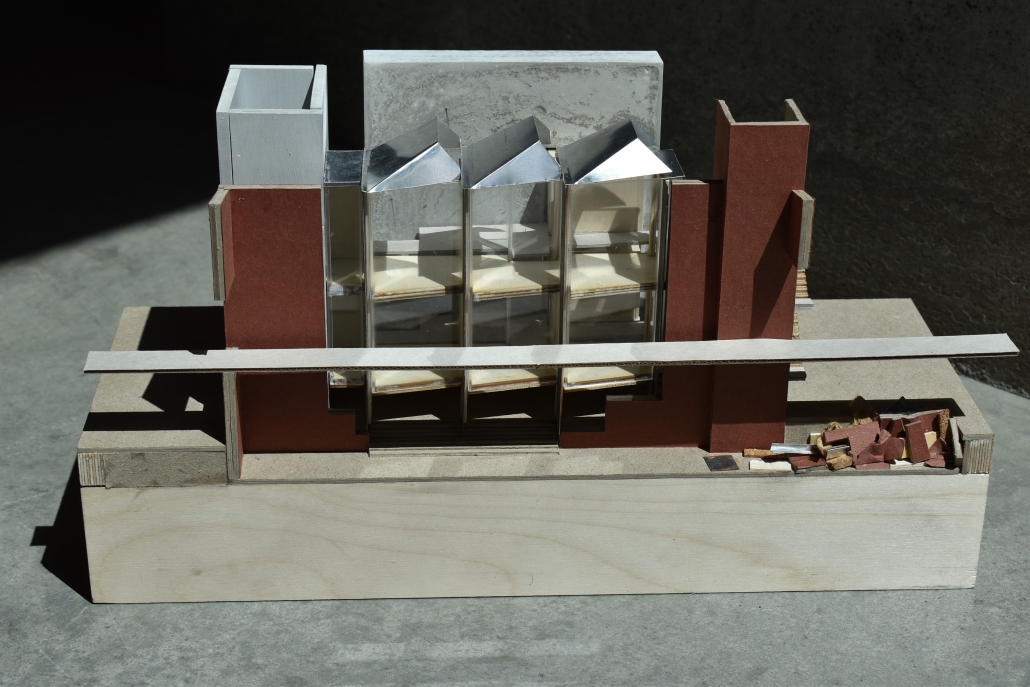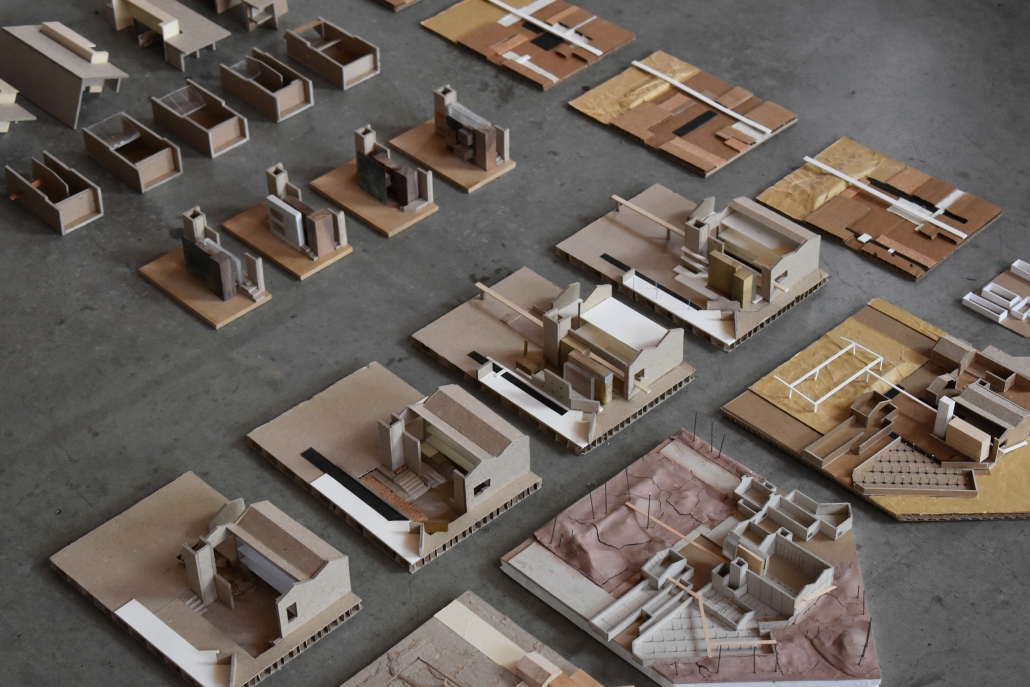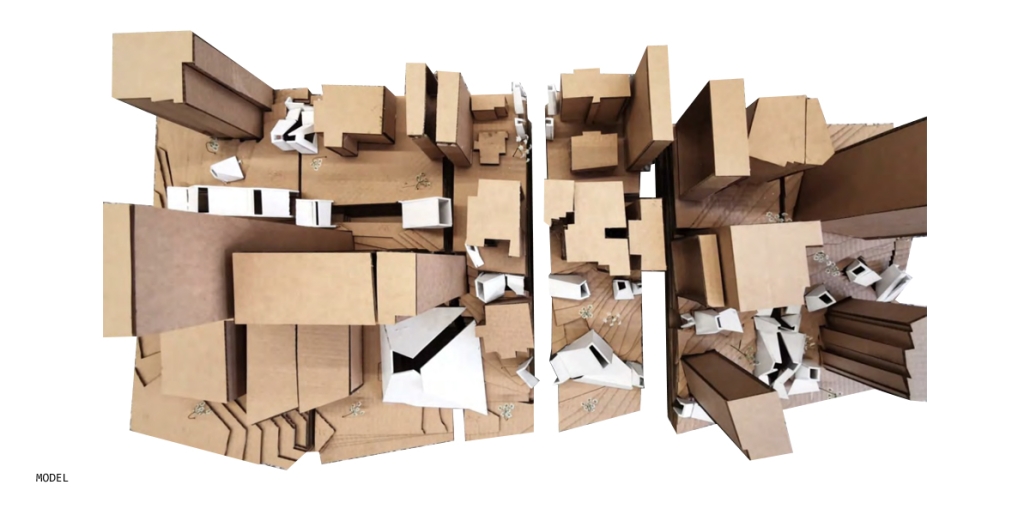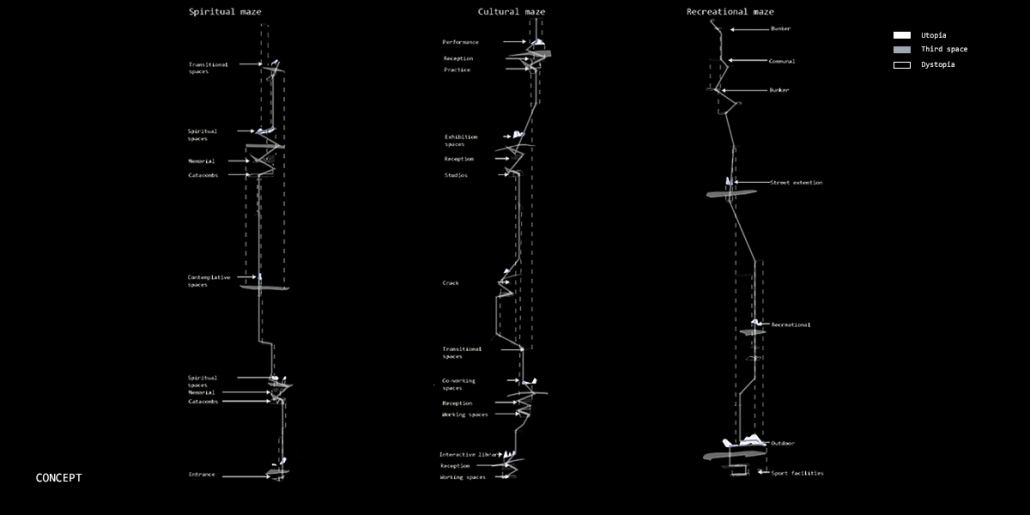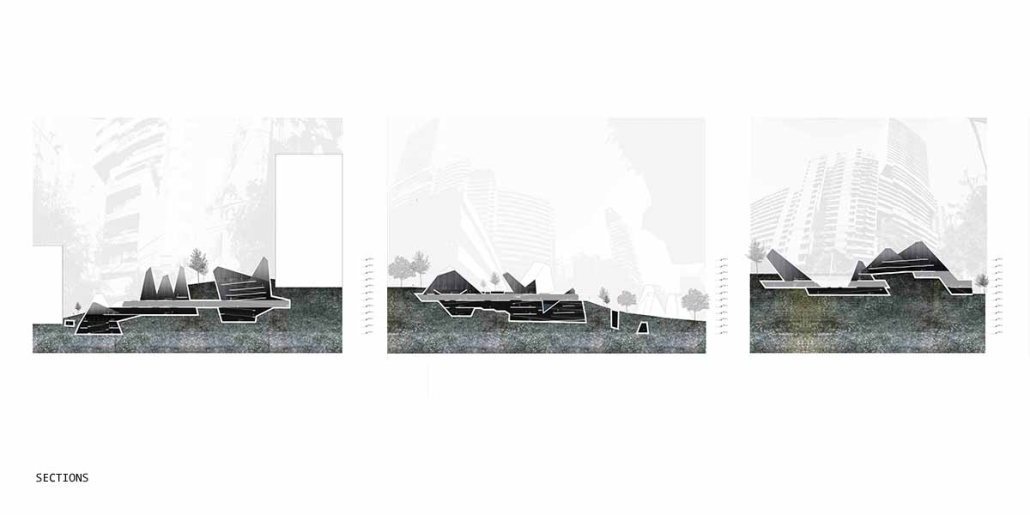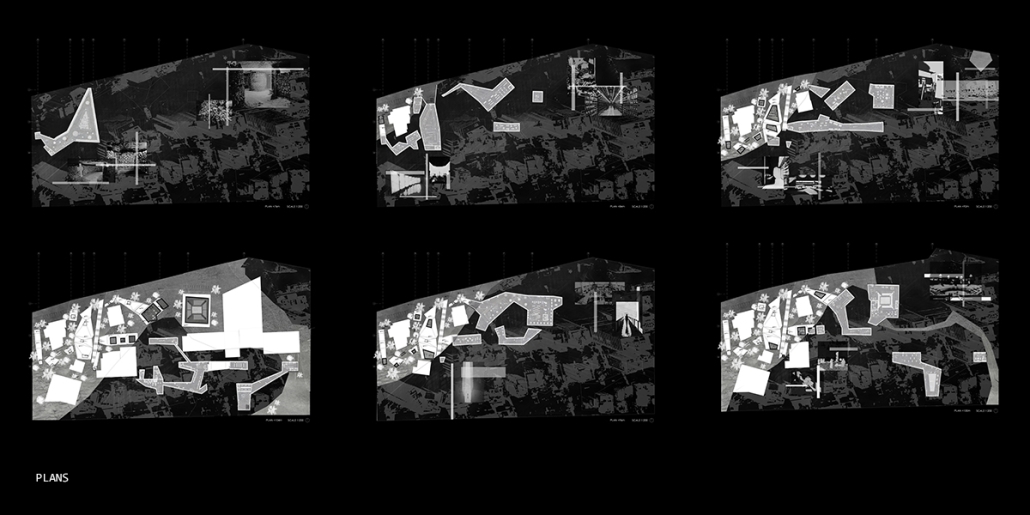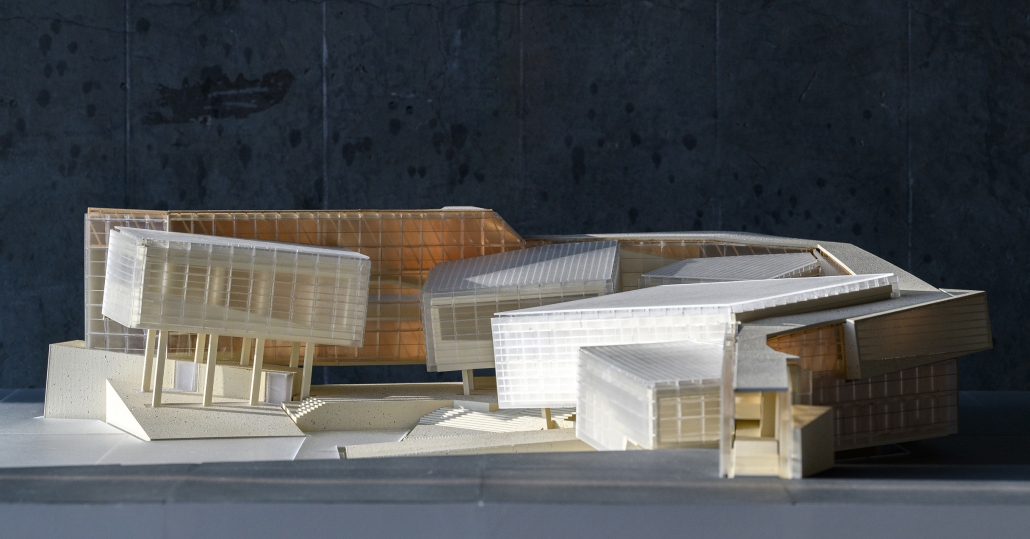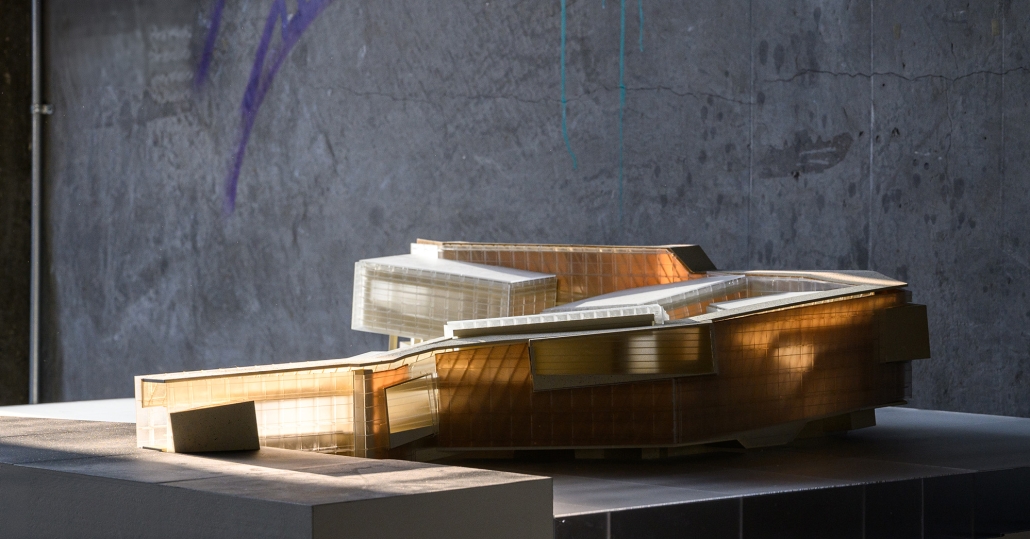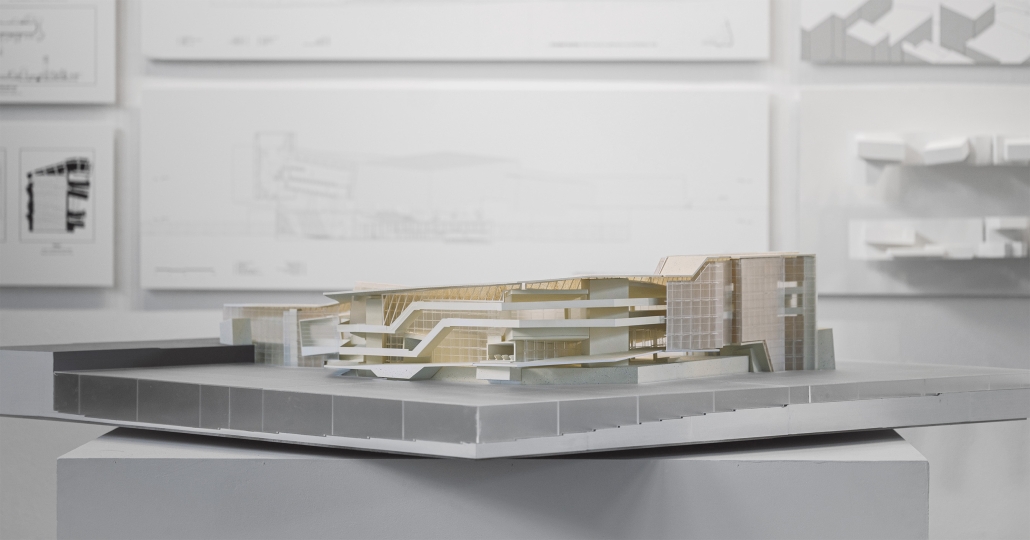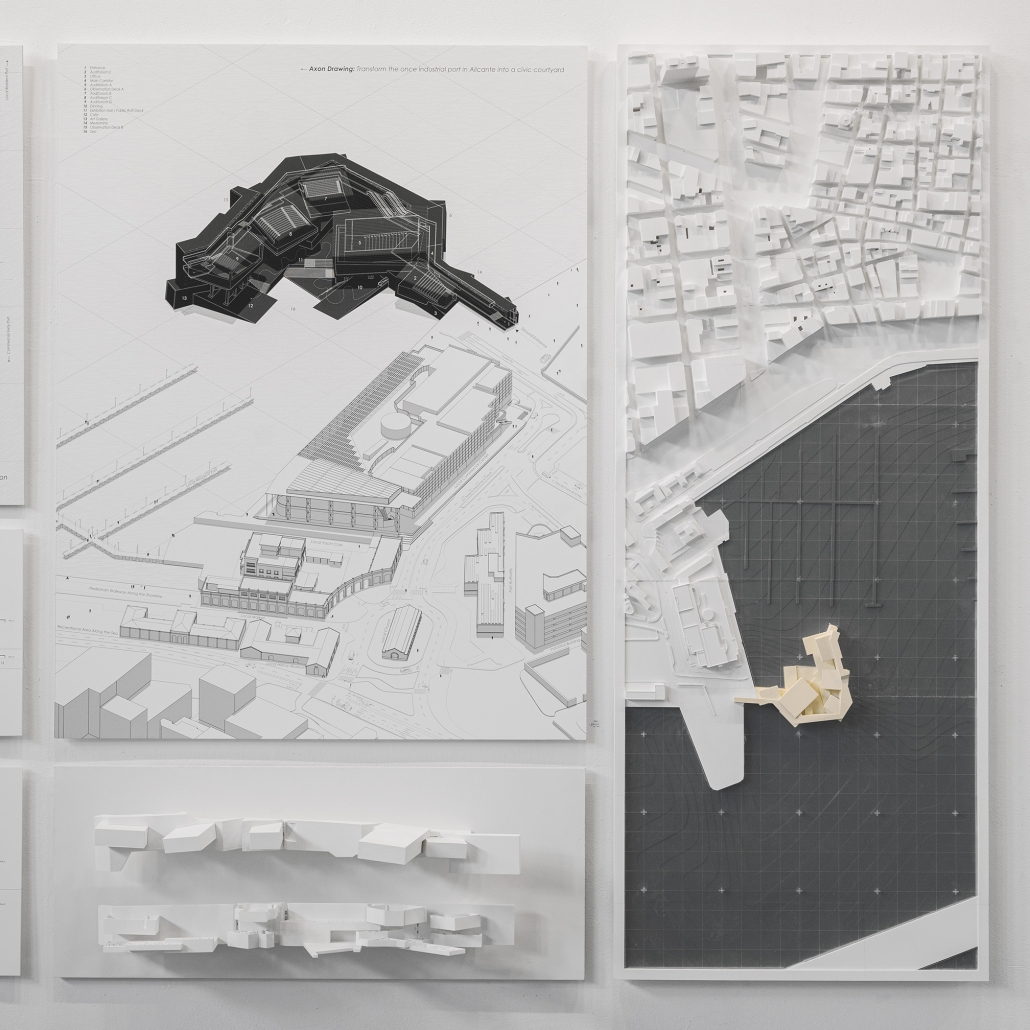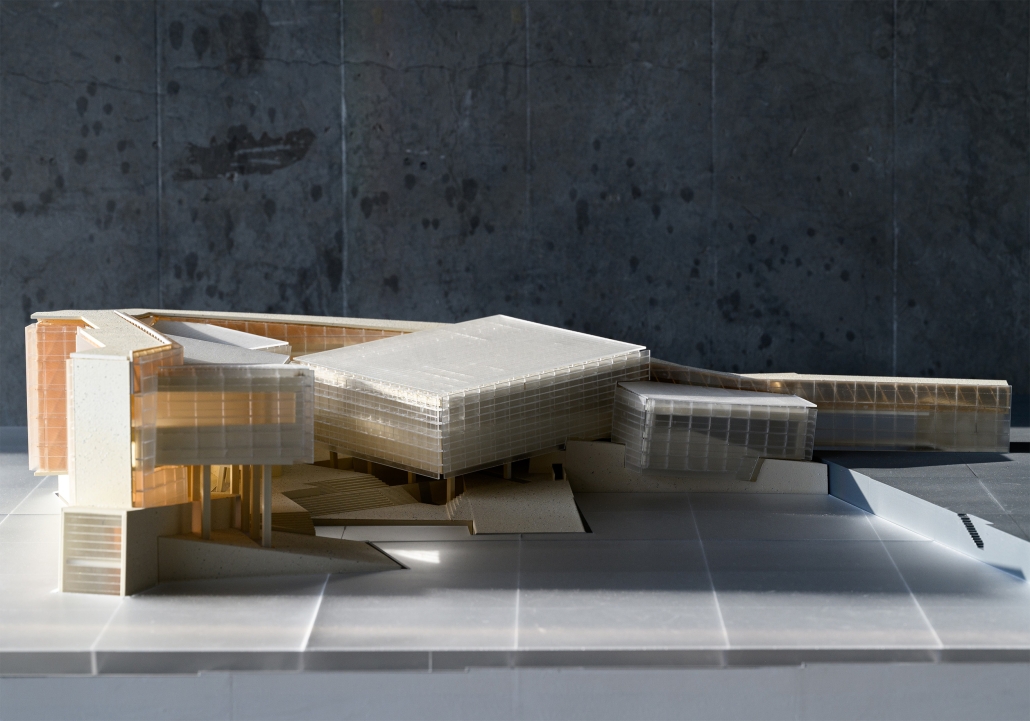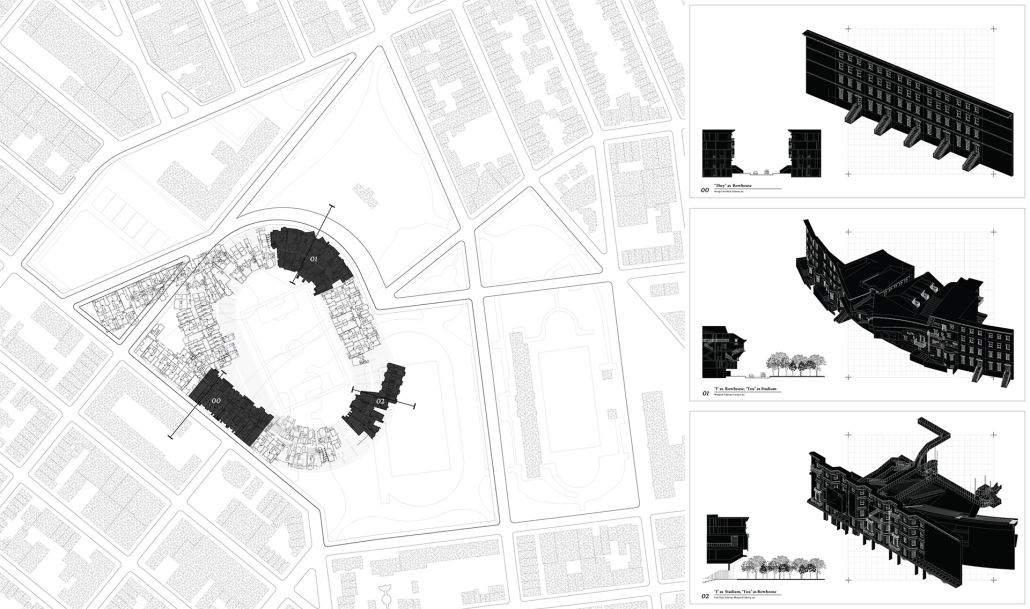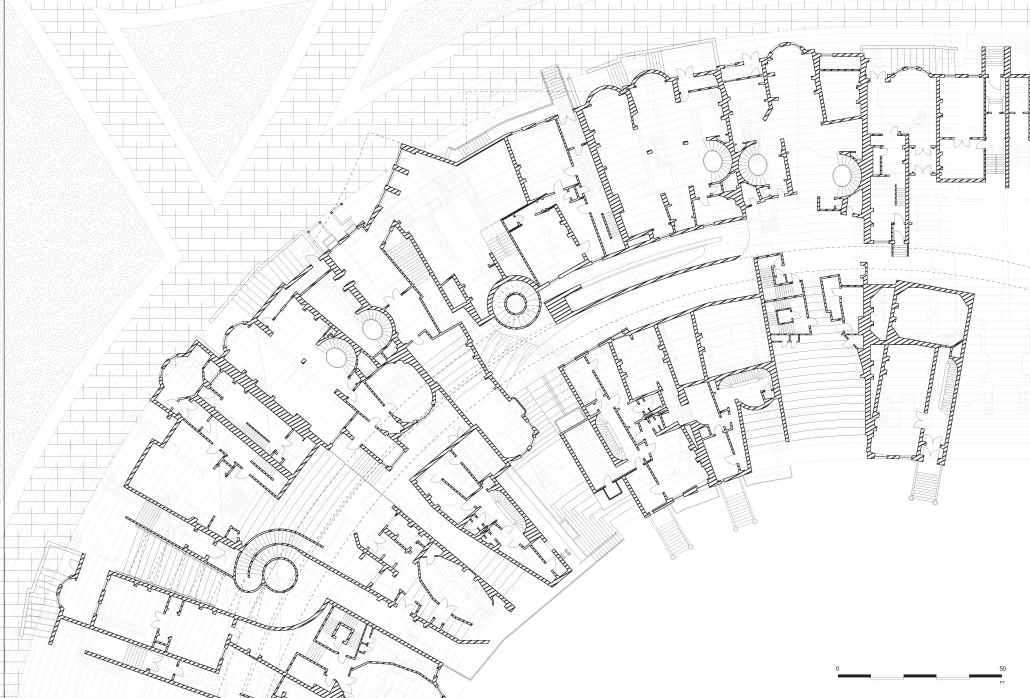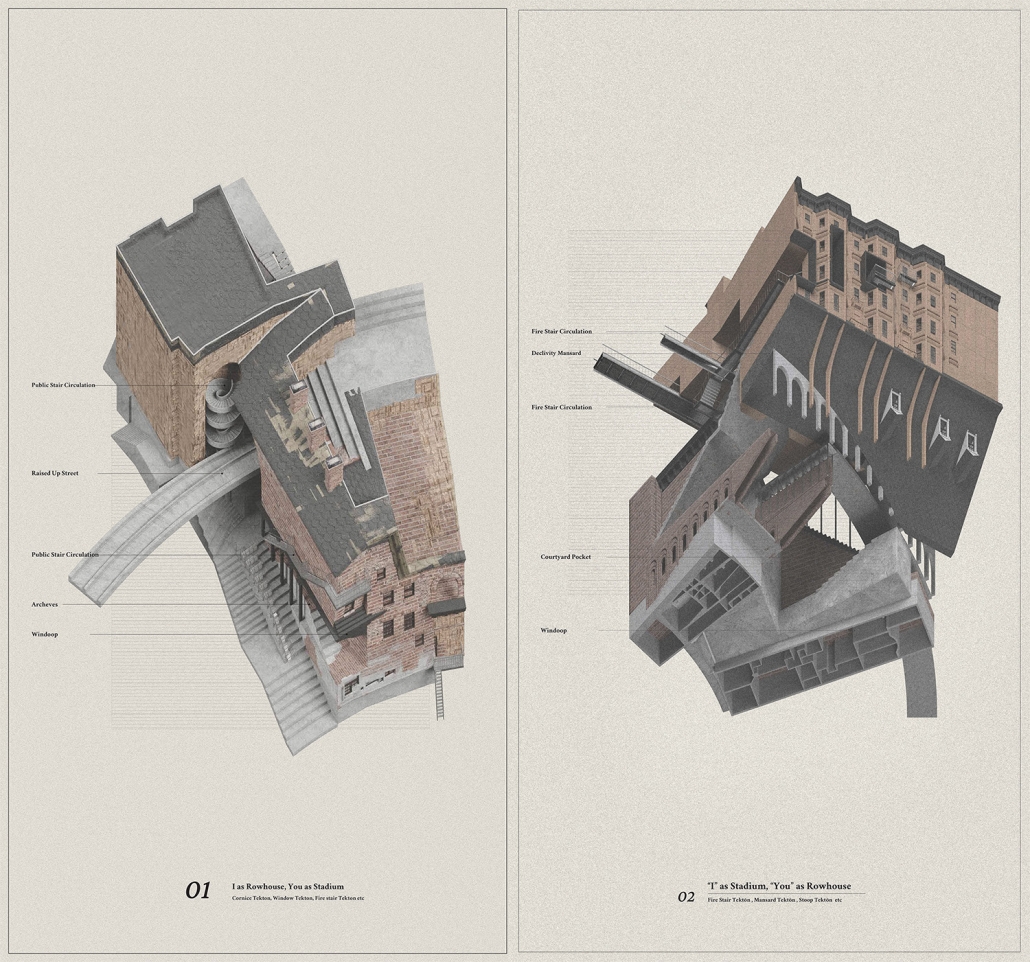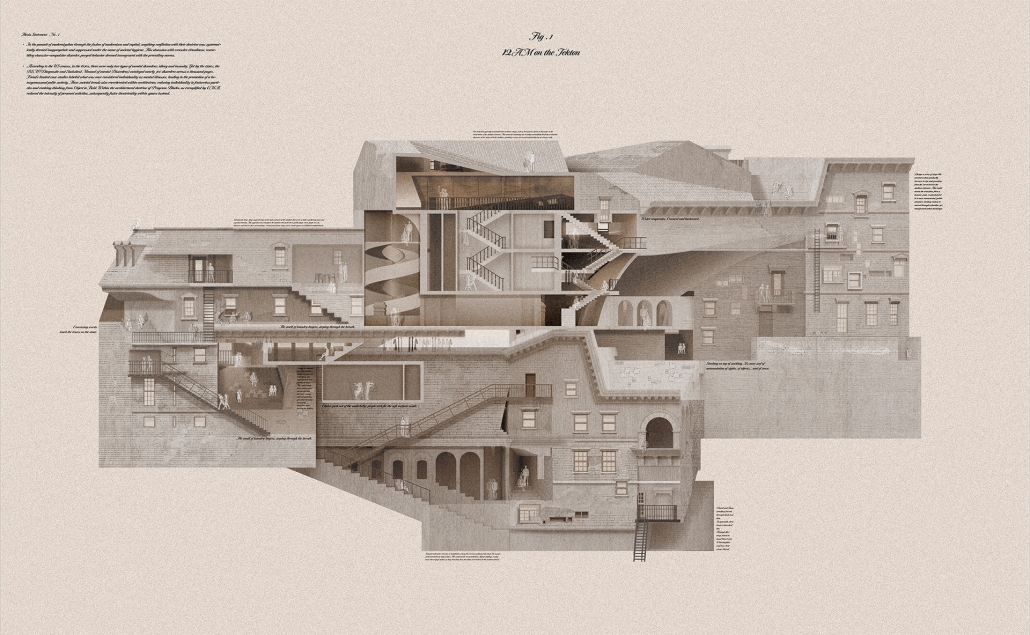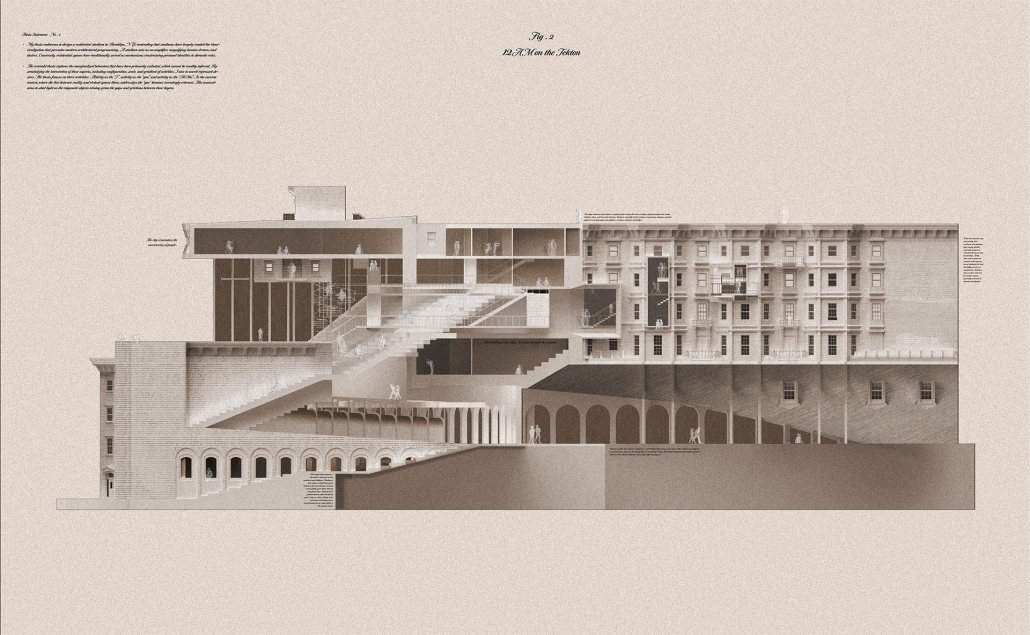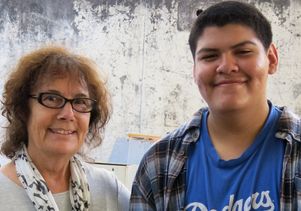2024 Study Architecture Student Showcase - Part XI
Architecture and design can serve as avenues for storytelling. Part XI of the 2024 Study Architecture Student Showcase includes designs that express emotions, experiences, and concepts. From garments and cinema to a building that serves as the main character – each project tells a story.
The presented narratives convey the experiences of displacement, highlight marginalized voices, share themes of life, and detail the connections between time and the built environment.
No Place Like (No) Home: Architecture and Displacement through Storytelling by Meena Chowdhury, M. Arch ‘24
University of British Columbia | Advisor: Rana Abughannam
This thesis explored my mother’s story of displacement in an attempt to show that reconstructing architectural representation can help showcase underrepresented stories. While hearing my mother’s story, I realized that she had an interesting relationship with architecture and time. She was forcefully moved from place to place without ever knowing what was going to happen next, and she would always make changes to her space in order to adapt to her needs. The current way to represent architecture cannot capture this complex relationship between space and time. Architects need to develop new ways of representing the spaces that refugees live in and that highlight these temporal aspects.
I created a garment that incorporates elements of my mother’s story as a refugee as she verbally reported them to me, as well as visual representations of multiple places where she lived as a refugee. Using the fabric allowed me to experiment with this notion of time. When the garment folds, rotates or transitions, it recontextualizes the drawings on the garment. The garment transitions to different articles of clothing based on my mother’s transition to different locations. It helps show that, for a lot of people who are displaced, architecture is not anchored by site. Most people who are displaced do not know the context of the location they are currently in, and that is what happened to my mom. She didn’t go through the locations, rather the locations went through her. This garment rethinks architectural representation, as self is the site. Hopefully, this creation will open new doors on how to think about representation in architecture.
This project won the Abraham Rogatnick Book Prize.
Instagram: @chowdhury.projects, @ubcsala
When Words Become Worlds by Catherine Chattergoon & Angelina Widjaja, B. Arch ’24
Pratt Institute | Advisors: Cathryn Dwyre, Evan Tribus & Pierre Alexandre de Looz
“When Words Become Worlds” is a project that speaks to the potential for us to bring our interior lives into public space and center marginalized people and voices in shaping new futures, realities, and worlds through storytelling and language. We see a framework of learning and unlearning as the ways we reconnect to and understand our diasporic identities, ancestral knowledges, and (mother)land(s). Through this framework, public space becomes a living archive, both a place and a process that allows us to record ourselves and create spaces that are receptive to change, constructed from new forms of building and community, and begin to move us toward transformative possibilities for the future.
The capitalist society that we live in is embedded in privatization and reflects the vision and voice of those who are already in a position of power and privilege. Infecting our public spaces and educational institutions, the pervasiveness of privatization forces us to consume and conform to top-down knowledge and “truths,” becoming an obstacle to self-expression, creativity, and, ultimately, our ability to shape our own worlds. Given that the built environment has historically maintained privilege by censoring, surveilling, and policing to perpetuate the immobilization of the oppressed, how can storytelling and language become means through which people access design and architecture to transform their own environments and create a future shaped by love and community?
Our project is cyclical and intergenerational. It is a space to gather, to be entangled with the land and with each other, and to learn about ourselves and the world within our world and with others. It is a space to learn and unlearn, to touch and be touched, to perform and to listen, to be dirty and to be wet, to engrave and endure, and to be free and to love, to build upon and honor our untold histories. This project is a model and manifestation for the creation of public space and the built environment to be shaped by community members and collective values, where design becomes the means for people to have agency in making change.
This project won the Top Honors: 2023/2024 Degree Project Award.
Instagram: @angie.9800, @angiegmbr, @cchatter13, @pneumastudio, @pneumacat
joy! [as an act of resistance] by Harrison Lane, M. Arch ‘24
Carleton University | Advisor: Piper Bernbaum
The concept of joy, the feeling of joy and the experiences of it are something I am deeply interested in and I have this feeling that you all might be, too. I also have this feeling that as we are wading through it all [the wake of the pandemic, major social injustices, the world is on fire, my dog peed on the carpet, am I killing all the bees by not having wildflower gardens? Oh no, is there lactose in this?], it has become difficult to remain, or even want to be joy-full. Joy, fun, play, or even laughter are almost punk rock in their defiance of the weight of all other issues we collectively and individually shoulder. For thousands of years, joy has been dissected and interpreted, it has even had its existence denied, but joy is kind of like a morphing confusing cryptid, impossible to pin down and where every time you think you’ve really got a handle on it and attempt to capture its likeness, only a blurry photo akin to Sasquatch remains.
So, my leather jacket-metal stud-teenage angst-loud music-sweeping bangs-esque response to this feeling is as such: What does joy look like while it resists? When it defies convention, plays with archetypes, and has fun with an idea? So I tried to answer that. I interpreted theories of joy as furniture, and made sure to feel joy as I built them. And then built a curriculum with the joy of learning and teaching at its core.
My thesis is a reflection through a series of pointed questions about what joy truly and deeply means. It also examines joy through the conduit of resistance to show how it can manifest as furniture, a pedagogy, or maybe even a way of life. I wanted the culmination of my architectural education to be fun, to offer insights into big questions about seemingly simple things, and most of all, I wanted anyone who stumbles across it later to be so deeply moved that they have no choice but to inject joy as vigorously and recklessly into all that they do, just as I have.
Instagram: @hdslane, @piperb, @carleton_architecture
METAMORPHOSIS by Shaikha Al-Khazim, M. Arch ’24
Lawrence Technological University | Advisor: Masataka Yoshikawa
In selecting “The Epic of Gilgamesh” for this piece, I was drawn to its exploration of fundamental life themes, including mortality, friendship, and the intricate dynamics of the human-divine relationship. The narrative unfolds as a man ventures beyond the confines of his town in pursuit of profound insights into life and the inevitability of mortality. Throughout his odyssey, he grapples with a spectrum of emotions, ranging from the depths of loss and grief to the heights of happiness and victory.
Upon his return to the town, a transformative metamorphosis has occurred within him. The beliefs that once anchored him have undergone a profound shift. In essence, the epic serves as a poignant reflection on the inherent human struggle with mortality, underscoring the pivotal role of companionship in fostering personal growth and prompting contemplation on the nuanced boundaries that exist between mortals and the divine.
In translating these themes into visual art, I opted for abstract shapes to symbolize the complexity of emotions encountered throughout the journey. The careful selection of colors serves to visually articulate the intricate interplay between these nuanced emotions, thereby encapsulating the rich essence of Gilgamesh’s narrative.
This project received the Lawrence Technological University Dean’s Award.
Instagram: @shaikha.alkhazim, @masataka.yoshikawa
Other Time Land by Leming (Michael) Jin, B.S in Architecture ’24
Washington University in St. Louis | Advisor: Zahra Safaverdi
The project “Other Time Land” unfolds in a remote Texhoma crop circle, housing seven characters in a microcosm detached from conventional time and space. Their lives center on agricultural and architectural production, intertwined with individual roles and diverse perceptions. Through the contextual model, the narrative explores collective understanding amid subjective interpretations. It delves into the complexities of human existence, navigating the realms of history, culture, and the meaning of collective life. Over three distinct eras, from functionality to formalism and nostalgia, the project reflects on human interaction with the environment, culminating in a monument to the enduring struggle between humanity and nature.
This project was featured in the YES Show at Washington University in St. Louis.
Prosthetic Mountain by David Paraschiv & Oriol Grana Garriga, B. Arch ’24
Pratt Institute | Advisors: Jonathan Scelsa & Jason Vigneri-Beane
Meet Trevor, the Olympic infrastructure that knows he won’t always be the star. Unlike the previous models of Olympic development, which attempted to redefine the city but ended up only reusing existing infrastructure, Trevor performs an architectural photobomb. Through association with the Hollywood sign, he casts himself as a character into LA’s catalog of landmarks. Trevor is many things: mascot, stadium, tower, mountain, monument, icon, landmark, camera, torch, cat, bat, owl, spider, octopus, and monster. As Trevor’s tensile tent shifts to shade one of three events on the mountain, pistons morph his tent body into the mascot for that event.
Over a century ago, Mt. Lee’s peak was shaved off to construct Los Angeles’ first television broadcast tower. We propose to restore the peak with this prosthetic infrastructure. As a prosthetic, Trevor not only restores the peak but also serves as an opportunity to create a landscape that accommodates both non-standard bodies and wildlife. For this reason, Trevor has been designed with the Paralympics having priority over the standard event. Access is not just enabled but maximized through funiculars, gondolas, ramps, elevators, and cherry pickers. These infrastructural elements become the very means of Trevor’s ultimate performance, his retirement. Sports courts are released and sent rolling down the funicular tracks, eventually becoming public infrastructure for the neighborhoods below. During this act of pulling, Trevor’s skin is torn open, allowing the elements into the stadium. At this point, Trevor’s hyper-artificial hot pink and electric yellow skin begins to reveal its true nature, with its dust-collecting tendrils starting to build material on the surface. As the seasons pass, this material is fertilized by the fauna of Mt. Lee’s subnature, eventually camouflaging the structure with the mountain. In this act, Trevor becomes a new kind of monument, one that isn’t afraid to embrace fragility as a means of new life.
This project received Degree Project Top Honors, the Michael Hollander Drawing Award (section), and the ModelMaker Prize Second Place.
Instagram: @otterfruit, @ori6g, @oparchland, @jcvb_split
Narrative Architecture: Framing a Fleeting World by Sam Sabzevari, M. Arch ’24
Toronto Metropolitan University | Advisor: Marco L. Polo
Narrative-making is the human ability to imagine, modify, and question myths, dreams, and desires; evolving cyclical journeys of challenging the present to draw a future. For a fleeting world, every creative production of an era responds to its grand narrative until it escalates to a time where the exchange of ideas moves faster than those who produce them. Landing on the age of the circuit, this thesis looks at a narrative shaped around incalculable reproductions mediating the world of human performative modes of operation and the algorithmic atmosphere of digital exchange. The Caravanserai, introduced as a narrative architecture typology from the age of the wheel, forms the architectural basis of a contemporary reading that can be applied to the age of the circuit. Established on experimental prompts of developing a narrative architecture, the new reading of the environment is described as a vessel among a place of exchange, a home, and an archive meant to be interpreted as open threads of making spatial scenarios. Appearing in sequences of experimental investigations on architectural scenarios throughout this document, prompts of a narrative architecture are explored and as an outcome of overlaying prompts of narrative architecture, Poetics of the Digital proposes a series of architectural prepositions that can become tools of architectural storytelling. Giving overall clues of what each tool can be, the verbal references to prepositions open them up to interpretations and form a new system of interpreting any space to any story. But how can a system break down its logic and genetically evolve into another story? The answer remains in human interpretation.
The thesis ends with a gamified version of the poetics of the Digital, offered as abstract pieces of architectural storytelling to players of the game. Every person reads and interprets in their own way, shaping their world of understanding. Translating the game outcomes into drawings shows how each has already begun to become another story. This is the essence of the postmodern fleeting world, contemporary narratives coming from any place by anyone, about anything, all at the same time.
Instagram: @sami_sabz, @dastorontomet
NOSTALGHIA DRIVE-IN: RESURRECTING MEMORIES by Elvis Castaneda, Jesus Nava & Opec Hynds, B. Arch ’24
Arizona State University | Advisor: Julia Lopez
Our journey into the heart of Andrei Tarkovsky’s “Nostalghia” has been transformative, resonating deeply with its exploration of nostalgia, isolation, and spiritual yearning. Through meticulous analysis of Tarkovsky’s cinematography, set design, and narrative techniques, we have unearthed profound inspiration for our architectural endeavor.
Tarkovsky’s masterful use of camera movements—his sweeping panoramas capturing the vast Italian landscapes and intimate interiors bathed in soft light—has guided our design philosophy. Just as Tarkovsky’s camera delicately navigates the emotional terrain of his characters, our architectural concept embraces the poetic essence of “Nostalghia.”
The film’s portrayal of dilapidated structures amidst timeless landscapes has become the cornerstone of our vision for revitalization. By reimagining a historic drive-in theater, we honor its cultural legacy while invigorating it as a vibrant community hub. Inspired by Tarkovsky’s subdued color palettes and symbolic imagery, our choice of materials and spatial compositions embodies a narrative that resonates with both the past and the future.
Our project is more than mere architectural intervention; it is a testament to the enduring power of storytelling through built environments. It seeks to foster not only physical renewal but also a profound sense of connection, belonging, and renewal among community members. Like Gorchakov in Tarkovsky’s narrative, we embark on a journey of exploration and discovery, guided by the spirit of nostalgia and the quest for meaning in a fragmented world.
In embracing “Nostalghia” as our muse, we endeavor to create spaces that transcend functionality, resonating deeply with the human condition and offering a sanctuary for reflection and contemplation. This is not just architecture; it is a testament to the timeless dialogue between cinema and built form, where each brick and beam tells a story of longing and hope.
This project won the TDS Design Excellence award.
Instagram: @ec.garcia6, @_opec_
The Production of Time: An Architectural Time Machine by Naim Zgheib, B. Arch ’24
American University of Beirut | Advisor: Sinan Hassan
How can one design an architectural time machine or one that deliberately produces time in its multiplicity?
- What are the dimensions of time as related to a built construct and their implications on the latter?
- How can one quantify, represent, visualize, and design the time-space?
- What architectural elements, languages and/or tectonics could best serve this discourse?
This architectural research delves into the captivating relationship between time and architecture. Drawing from theories such as Einstein’s relativity and Rovelli’s “The Order of Time”, it aims to explore the intricate connections between time and the built environment.
The study begins by investigating various theories of time, from ancient philosophies to contemporary scientific understandings, establishing a comprehensive foundation. By examining time as both a subjective experience and a measurable entity, this project seeks to merge the abstract and tangible. The research explores the application of phase space equations and algorithms in architectural design (which represent dynamic systems mathematically). By analyzing the temporal dynamics of spaces, it seeks novel temporal experiences within the built environment. The 8-dimensional phase space becomes the new representation of time in architecture.
The intent is to hypothesize an architecture that deliberately produces time to achieve ultimate timefulness, thus timelessness, engulfing the entire phase space. The design phase serves as the practical manifestation of the research, proposing architectural interventions that embody the theories, equations, and concepts explored. Through innovative design strategies, such as temporal layering and dynamic spatial configurations, this project seeks to redefine the relationship between architecture and time.
“The Production of Time” aims to build on the architectural implications of time, inspiring architects to reconsider the temporal dimensions of their creations deliberately and intentionally. In this eternal dance between architecture and time, let us leave an indelible mark upon the world—a beacon of our profound understanding of the temporal, and our unwavering dedication to the art of sculpting time as matter.
This project was the 3rd Place Winner of the Areen Projects Award for Excellence in Architecture.
Instagram: @ard_aub
{in}Visible Maintenance by Daniel Wong, M. Arch ’24
University of Toronto | Advisor: Carol Moukheiber
Nothing lasts nor endures; instead, trends come and quickly fall into obsolescence. We pursue objects that offer immediate satisfaction, producing more and more to fuel a system that trends toward overconsumption and boredom. {in}Visible Maintenance provides an alternative vision somewhere in between the speculative, the surreal, and the plausible—a resistance to our valuation of existing buildings. Drawing is used to unravel the everyday maintenance, cleaning, and repair of buildings, highlighting their palimpsest history of time, age, and care work.
{in}Visible Maintenance poses the question: What if the durability of a building could be chronographed as a fundamental element of everyday design? Imagine a shift where we prioritize celebrating the natural process of decay, favouring robustness and heightened flexibility over the current economic model of superficial environmental posturing.
Through a speculative collection of drawings, a series of building parts, components, and systems—when assembled—creates a radical eclecticism around the buildings we maintain. These drawings are bound to the imaginary and convey a polemic reality based on the everyday, memory, age, place, change, and the virtues we associate with the buildings we inhabit. The shifting drawings and methods of representation are used to reframe, shift, and provoke a new paradigm and aesthetic that celebrates and accepts our existing aging built environment. Finding pleasure and discovery through the dilapidated, the strange, and the ordinary.
Instagram: @Danielw.dwg, @uoftdaniels
An Architectural Bargain: Games of Requit by Daniela Liang, B. Arch ’24
University of Southern California | Advisor: Eric Haas
The incorporation of intentional error is not novel. From the works of Borromini to those of MVRDV, linear perspective and visual perception of form and geometry have become tools for manipulating perceived reality. The intentional design of error, or the trick, is a productive language for exercising viewer agency. By creating an opportunity for the viewer to engage in an investigative experience, the trick becomes a game-like negotiation of reality within architecture.
The result of these visual tricks creates privileged views and abstract reality where the uncovering of truth becomes enriching to the viewer’s understanding of the architecture. The project is the analysis of how these architectural deceptions can create different states of immersion between the viewer and the design. A game-like experience is proposed by the various ways “error” can be used as productive confrontation. Four self-contained sites of “error” immersion are created, displaying different applications of design deception: encounter, investigation, absorption, and co-existence.
This project won the Raymond S. Kennedy Creative Innovation Award – Methodology
Instagram: @dandeliang
Front Veiled, Back Revealed by Sacha Azzi, B. Arch ’24
American University of Beirut | Advisors: Rana Haddad & Makram El Kadi
The architecture of this project stands as a demonstrative device of activism and empowerment. It is an architecture that is temporary yet timeless, standing tall around a social plaza of one of Beirut’s last agricultural gardens in the area of Mar Mikhael. This new typology creates a new ecosystem in a circular motion, a loop for change that aims to install an agency of political culture through the built form, a design for activists, an architecture of expression, a space of experimentation and a culture of democracy.
It is an incubator space that serves as both an incubator and an expression.
By integrating activism principles into its core the architecture evolves into an entity that educates, motivates and mobilizes individuals. It fosters conversations, encourages community involvement and raises awareness while serving as a supporter and facilitator of endeavors. The design features spatial arrangements and material selections, meticulously chosen to mirror and advance movements through methods of inclusivity efforts or by providing areas for protests and gatherings. This innovative architectural approach not only provides spaces for activists but also actively participates in activism through its design and purpose. It aims to challenge norms that incite thoughts and influence actions turning the built environment into a force for change. The structure serves as a tool that engages with people and the environment embodying activism motivating change and supporting change. This new approach highlights how buildings can play a role in advocating for social justice, equality and environmental conservation by enhancing the influence of activism, through their presence.
Within this thesis’s extensive and thorough research, we can conclude that architecture can serve as an agency for political culture, both programmatically and spatially. Firstly, by blending different users on site, and secondly, by standing as temporary architecture—a harmless yet powerful loop of change, with buildings shaped by their users and reshaped by these buildings again—a completion of form and function.
Instagram: @ard_aub
Stay tuned for Part XII!

